Рейтинг книг Victoria Charles
Начиная изучать творчество писателя - уделите внимание произведениям, которые находятся на вершине этого рейтинга. Смело нажимайте на стрелочки - вверх и вниз, если считаете, что какое-то произведение должно находиться выше или ниже в списке. В результате общих усилий, в том числе, на основании ваших оценок мы и получим самый адекватный рейтинг книг Victoria Charles.
-
1.
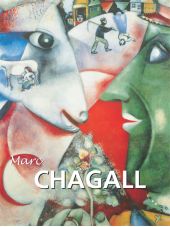 Marc Chagall was born into a strict Jewish family for whom the ban on representations of the human figure had the weight of dogma. A failure in the entrance examination for the Stieglitz School did not stop Chagall from later joining that famous school founded by the Imperial Society for the Encouragement of the Arts and directed by Nicholas Roerich. Chagall moved to Paris in 1910. The city was his “second Vitebsk”. At first, isolated in the little room on the Impasse du Maine at La Ruche, Chagall soon found numerous compatriots also attracted by the prestige of Paris: Lipchitz, Zadkine, Archipenko and Soutine, all of whom were to maintain the “smell” of his native land. From his very arrival Chagall wanted to “discover everything”. And to his dazzled eyes painting did indeed reveal itself. Even the most attentive and partial observer is at times unable to distinguish the “Parisian”, Chagall from the “Vitebskian”. The artist was not full of contradictions, nor was he a split personality, but he always remained different; he looked around and within himself and at the surrounding world, and he used his present thoughts and recollections. He had an utterly poetical mode of thought that enabled him to pursue such a complex course. Chagall was endowed with a sort of stylistic immunity: he enriched himself without destroying anything of his own inner structure. Admiring the works of others he studied them ingenuously, ridding himself of his youthful awkwardness, yet never losing his authenticity for a moment. At times Chagall seemed to look at the world through magic crystal – overloaded with artistic experimentation – of the Ecole de Paris. In such cases he would embark on a subtle and serious play with the various discoveries of the turn of the century and turned his prophetic gaze like that of a biblical youth, to look at himself ironically and thoughtfully in the mirror. Naturally, it totally and uneclectically reflected the painterly discoveries of Cézanne, the delicate inspiration of Modigliani, and the complex surface rhythms recalling the experiments of the early Cubists (See-Portrait at the Easel, 1914). Despite the analyses which nowadays illuminate the painter’s Judaeo-Russian sources, inherited or borrowed but always sublime, and his formal relationships, there is always some share of mystery in Chagall’s art. The mystery perhaps lies in the very nature of his art, in which he uses his experiences and memories. Painting truly is life, and perhaps life is painting. ... Далее
Marc Chagall was born into a strict Jewish family for whom the ban on representations of the human figure had the weight of dogma. A failure in the entrance examination for the Stieglitz School did not stop Chagall from later joining that famous school founded by the Imperial Society for the Encouragement of the Arts and directed by Nicholas Roerich. Chagall moved to Paris in 1910. The city was his “second Vitebsk”. At first, isolated in the little room on the Impasse du Maine at La Ruche, Chagall soon found numerous compatriots also attracted by the prestige of Paris: Lipchitz, Zadkine, Archipenko and Soutine, all of whom were to maintain the “smell” of his native land. From his very arrival Chagall wanted to “discover everything”. And to his dazzled eyes painting did indeed reveal itself. Even the most attentive and partial observer is at times unable to distinguish the “Parisian”, Chagall from the “Vitebskian”. The artist was not full of contradictions, nor was he a split personality, but he always remained different; he looked around and within himself and at the surrounding world, and he used his present thoughts and recollections. He had an utterly poetical mode of thought that enabled him to pursue such a complex course. Chagall was endowed with a sort of stylistic immunity: he enriched himself without destroying anything of his own inner structure. Admiring the works of others he studied them ingenuously, ridding himself of his youthful awkwardness, yet never losing his authenticity for a moment. At times Chagall seemed to look at the world through magic crystal – overloaded with artistic experimentation – of the Ecole de Paris. In such cases he would embark on a subtle and serious play with the various discoveries of the turn of the century and turned his prophetic gaze like that of a biblical youth, to look at himself ironically and thoughtfully in the mirror. Naturally, it totally and uneclectically reflected the painterly discoveries of Cézanne, the delicate inspiration of Modigliani, and the complex surface rhythms recalling the experiments of the early Cubists (See-Portrait at the Easel, 1914). Despite the analyses which nowadays illuminate the painter’s Judaeo-Russian sources, inherited or borrowed but always sublime, and his formal relationships, there is always some share of mystery in Chagall’s art. The mystery perhaps lies in the very nature of his art, in which he uses his experiences and memories. Painting truly is life, and perhaps life is painting. ... Далее -
2.
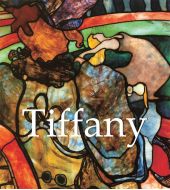 A jeweler with an established reputation through the world, Louis Comfort Tiffany was the spearhead of the Art Nouveau movement in the United States. At a time and in a country in perpetual growth, Tiffany succeeded in elevating the decorative to the rank of fine art. Glass was the field of expertise of Tiffany’s workshops. There they developed groundbreaking techniques of treatment which produced beautiful effects on glass. Following the examples of Gallé or Daum, Tiffany made the most of this material: playing with colors, opaqueness and transparency… However, his most famous success is his lamps in mosaic of glass, similar to the cathedral’s stained glass window. Diving into this prism of colors, the author makes us dream again of the birth of this enduring company. ... Далее
A jeweler with an established reputation through the world, Louis Comfort Tiffany was the spearhead of the Art Nouveau movement in the United States. At a time and in a country in perpetual growth, Tiffany succeeded in elevating the decorative to the rank of fine art. Glass was the field of expertise of Tiffany’s workshops. There they developed groundbreaking techniques of treatment which produced beautiful effects on glass. Following the examples of Gallé or Daum, Tiffany made the most of this material: playing with colors, opaqueness and transparency… However, his most famous success is his lamps in mosaic of glass, similar to the cathedral’s stained glass window. Diving into this prism of colors, the author makes us dream again of the birth of this enduring company. ... Далее -
3.
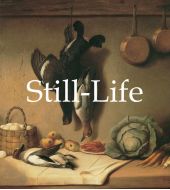 Cézanne transformed a teacup into something alive, raising still-life to the point that it ceased to be inanimate. Wassily Kandinsky said about the French artist: “He painted these things as human beings because he was endowed with the gift of divining the inner life in everything.” In addition to those of Cézanne, this book is devoted to still-life paintings by artists such as Van Gogh, Matisse, Chardin and Picasso. ... Далее
Cézanne transformed a teacup into something alive, raising still-life to the point that it ceased to be inanimate. Wassily Kandinsky said about the French artist: “He painted these things as human beings because he was endowed with the gift of divining the inner life in everything.” In addition to those of Cézanne, this book is devoted to still-life paintings by artists such as Van Gogh, Matisse, Chardin and Picasso. ... Далее -
4.
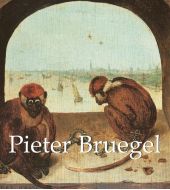 Pieter Brueghel was the first important member of a family of artists who were active for four generations. Firstly a drawer before becoming a painter later, he painted religious themes, such as Babel Tower, with very bright colours. Influenced by Hieronymus Bosch, he painted large, complex scenes of peasant life and scripture or spiritual allegories, often with crowds of subjects performing a variety of acts, yet his scenes are unified with an informal integrity and often with wit. In his work, he brought a new humanising spirit. Befriending the Humanists, Brueghel composed true philosophical landscapes in the heart of which man accepts passively his fate, caught in the track of time. ... Далее
Pieter Brueghel was the first important member of a family of artists who were active for four generations. Firstly a drawer before becoming a painter later, he painted religious themes, such as Babel Tower, with very bright colours. Influenced by Hieronymus Bosch, he painted large, complex scenes of peasant life and scripture or spiritual allegories, often with crowds of subjects performing a variety of acts, yet his scenes are unified with an informal integrity and often with wit. In his work, he brought a new humanising spirit. Befriending the Humanists, Brueghel composed true philosophical landscapes in the heart of which man accepts passively his fate, caught in the track of time. ... Далее -
5.
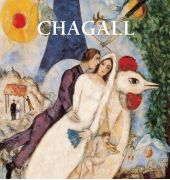 Marc Chagall was born into a strict Jewish family for whom the ban on representations of the human figure had the weight of dogma. A failure in the entrance examination for the Stieglitz School did not stop Chagall from later joining that famous school founded by the Imperial Society for the Encouragement of the Arts and directed by Nicholas Roerich. Chagall moved to Paris in 1910. The city was his “second Vitebsk”. At first, isolated in the little room on the Impasse du Maine at La Ruche, Chagall soon found numerous compatriots also attracted by the prestige of Paris: Lipchitz, Zadkine, Archipenko and Soutine, all of whom were to maintain the “smell” of his native land. From his very arrival Chagall wanted to “discover everything”. And to his dazzled eyes painting did indeed reveal itself. Even the most attentive and partial observer is at times unable to distinguish the “Parisian”, Chagall from the “Vitebskian”. The artist was not full of contradictions, nor was he a split personality, but he always remained different; he looked around and within himself and at the surrounding world, and he used his present thoughts and recollections. He had an utterly poetical mode of thought that enabled him to pursue such a complex course. Chagall was endowed with a sort of stylistic immunity: he enriched himself without destroying anything of his own inner structure. Admiring the works of others he studied them ingenuously, ridding himself of his youthful awkwardness, yet never losing his authenticity for a moment. At times Chagall seemed to look at the world through magic crystal – overloaded with artistic experimentation – of the Ecole de Paris. In such cases he would embark on a subtle and serious play with the various discoveries of the turn of the century and turned his prophetic gaze like that of a biblical youth, to look at himself ironically and thoughtfully in the mirror. Naturally, it totally and uneclectically reflected the painterly discoveries of Cézanne, the delicate inspiration of Modigliani, and the complex surface rhythms recalling the experiments of the early Cubists (See-Portrait at the Easel, 1914). Despite the analyses which nowadays illuminate the painter’s Judaeo-Russian sources, inherited or borrowed but always sublime, and his formal relationships, there is always some share of mystery in Chagall’s art. The mystery perhaps lies in the very nature of his art, in which he uses his experiences and memories. Painting truly is life, and perhaps life is painting. ... Далее
Marc Chagall was born into a strict Jewish family for whom the ban on representations of the human figure had the weight of dogma. A failure in the entrance examination for the Stieglitz School did not stop Chagall from later joining that famous school founded by the Imperial Society for the Encouragement of the Arts and directed by Nicholas Roerich. Chagall moved to Paris in 1910. The city was his “second Vitebsk”. At first, isolated in the little room on the Impasse du Maine at La Ruche, Chagall soon found numerous compatriots also attracted by the prestige of Paris: Lipchitz, Zadkine, Archipenko and Soutine, all of whom were to maintain the “smell” of his native land. From his very arrival Chagall wanted to “discover everything”. And to his dazzled eyes painting did indeed reveal itself. Even the most attentive and partial observer is at times unable to distinguish the “Parisian”, Chagall from the “Vitebskian”. The artist was not full of contradictions, nor was he a split personality, but he always remained different; he looked around and within himself and at the surrounding world, and he used his present thoughts and recollections. He had an utterly poetical mode of thought that enabled him to pursue such a complex course. Chagall was endowed with a sort of stylistic immunity: he enriched himself without destroying anything of his own inner structure. Admiring the works of others he studied them ingenuously, ridding himself of his youthful awkwardness, yet never losing his authenticity for a moment. At times Chagall seemed to look at the world through magic crystal – overloaded with artistic experimentation – of the Ecole de Paris. In such cases he would embark on a subtle and serious play with the various discoveries of the turn of the century and turned his prophetic gaze like that of a biblical youth, to look at himself ironically and thoughtfully in the mirror. Naturally, it totally and uneclectically reflected the painterly discoveries of Cézanne, the delicate inspiration of Modigliani, and the complex surface rhythms recalling the experiments of the early Cubists (See-Portrait at the Easel, 1914). Despite the analyses which nowadays illuminate the painter’s Judaeo-Russian sources, inherited or borrowed but always sublime, and his formal relationships, there is always some share of mystery in Chagall’s art. The mystery perhaps lies in the very nature of his art, in which he uses his experiences and memories. Painting truly is life, and perhaps life is painting. ... Далее -
6.
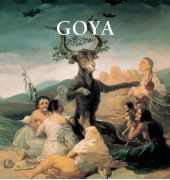 Goya is perhaps the most approachable of painters. His art, like his life, is an open book. He concealed nothing from his contemporaries, and offered his art to them with the same frankness. The entrance to his world is not barricaded with technical difficulties. He proved that if a man has the capacity to live and multiply his experiences, to fight and work, he can produce great art without classical decorum and traditional respectability. He was born in 1746, in Fuendetodos, a small mountain village of a hundred inhabitants. As a child he worked in the fields with his two brothers and his sister until his talent for drawing put an end to his misery. At fourteen, supported by a wealthy patron, he went to Saragossa to study with a court painter and later, when he was nineteen, on to Madrid. Up to his thirty-seventh year, if we leave out of account the tapestry cartoons of unheralded decorative quality and five small pictures, Goya painted nothing of any significance, but once in control of his refractory powers, he produced masterpieces with the speed of Rubens. His court appointment was followed by a decade of incessant activity – years of painting and scandal, with intervals of bad health. Goya’s etchings demonstrate a draughtsmanship of the first rank. In paint, like Velázquez, he is more or less dependent on the model, but not in the detached fashion of the expert in still-life. If a woman was ugly, he made her a despicable horror; if she was alluring, he dramatised her charm. He preferred to finish his portraits at one sitting and was a tyrant with his models. Like Velázquez, he concentrated on faces, but he drew his heads cunningly, and constructed them out of tones of transparent greys. Monstrous forms inhabit his black-and-white world: these are his most profoundly deliberated productions. His fantastic figures, as he called them, fill us with a sense of ignoble joy, aggravate our devilish instincts and delight us with the uncharitable ecstasies of destruction. His genius attained its highest point in his etchings on the horrors of war. When placed beside the work of Goya, other pictures of war pale into sentimental studies of cruelty. He avoided the scattered action of the battlefield, and confined himself to isolated scenes of butchery. Nowhere else did he display such mastery of form and movement, such dramatic gestures and appalling effects of light and darkness. In all directions Goya renewed and innovated. ... Далее
Goya is perhaps the most approachable of painters. His art, like his life, is an open book. He concealed nothing from his contemporaries, and offered his art to them with the same frankness. The entrance to his world is not barricaded with technical difficulties. He proved that if a man has the capacity to live and multiply his experiences, to fight and work, he can produce great art without classical decorum and traditional respectability. He was born in 1746, in Fuendetodos, a small mountain village of a hundred inhabitants. As a child he worked in the fields with his two brothers and his sister until his talent for drawing put an end to his misery. At fourteen, supported by a wealthy patron, he went to Saragossa to study with a court painter and later, when he was nineteen, on to Madrid. Up to his thirty-seventh year, if we leave out of account the tapestry cartoons of unheralded decorative quality and five small pictures, Goya painted nothing of any significance, but once in control of his refractory powers, he produced masterpieces with the speed of Rubens. His court appointment was followed by a decade of incessant activity – years of painting and scandal, with intervals of bad health. Goya’s etchings demonstrate a draughtsmanship of the first rank. In paint, like Velázquez, he is more or less dependent on the model, but not in the detached fashion of the expert in still-life. If a woman was ugly, he made her a despicable horror; if she was alluring, he dramatised her charm. He preferred to finish his portraits at one sitting and was a tyrant with his models. Like Velázquez, he concentrated on faces, but he drew his heads cunningly, and constructed them out of tones of transparent greys. Monstrous forms inhabit his black-and-white world: these are his most profoundly deliberated productions. His fantastic figures, as he called them, fill us with a sense of ignoble joy, aggravate our devilish instincts and delight us with the uncharitable ecstasies of destruction. His genius attained its highest point in his etchings on the horrors of war. When placed beside the work of Goya, other pictures of war pale into sentimental studies of cruelty. He avoided the scattered action of the battlefield, and confined himself to isolated scenes of butchery. Nowhere else did he display such mastery of form and movement, such dramatic gestures and appalling effects of light and darkness. In all directions Goya renewed and innovated. ... Далее -
7.
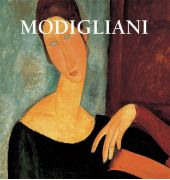 Modigliani (1884-1920) was a painter of great unhappiness in his native Italy and felt only sorrow in his adopted country of France. Out of this discontent came forth Modigliani’s original work, which was influenced by African art, the Cubists, and drunken nights in Montparnasse. His portrayal of women—sensual bodies, almost aggressive nudity, and mysterious faces—expresses their suffering and feelings of being unloved and unjustly disregarded. Modigliani died at the age of 36. ... Далее
Modigliani (1884-1920) was a painter of great unhappiness in his native Italy and felt only sorrow in his adopted country of France. Out of this discontent came forth Modigliani’s original work, which was influenced by African art, the Cubists, and drunken nights in Montparnasse. His portrayal of women—sensual bodies, almost aggressive nudity, and mysterious faces—expresses their suffering and feelings of being unloved and unjustly disregarded. Modigliani died at the age of 36. ... Далее -
8.
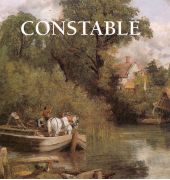 John Constable was the first English landscape painter to take no lessons from the Dutch. He is rather indebted to the landscapes of Rubens, but his real model was Gainsborough, whose landscapes, with great trees planted in well-balanced masses on land sloping upwards towards the frame, have a rhythm often found in Rubens. Constable’s originality does not lie in his choice of subjects, which frequently repeated themes beloved by Gainsborough. Nevertheless, Constable seems to belong to a new century; he ushered in a new era. The difference in his approach results both from technique and feeling. Excepting the French, Constable was the first landscape painter to consider as a primary and essential task the sketch made direct from nature at a single sitting; an idea which contains in essence the destinies of modern landscape, and perhaps of most modern painting. It is this momentary impression of all things which will be the soul of the future work. Working at leisure upon the large canvas, an artist’s aim is to enrich and complete the sketch while retaining its pristine freshness. These are the two processes to which Constable devoted himself, while discovering the exuberant abundance of life in the simplest of country places. He had the palette of a creative colourist and a technique of vivid hatchings heralding that of the French impressionists. He audaciously and frankly introduced green into painting, the green of lush meadows, the green of summer foliage, all the greens which, until then, painters had refused to see except through bluish, yellow, or more often brown spectacles. Of the great landscape painters who occupied so important a place in nineteenth-century art, Corot was probably the only one to escape the influence of Constable. All the others are more or less direct descendants of the master of East Bergholt. ... Далее
John Constable was the first English landscape painter to take no lessons from the Dutch. He is rather indebted to the landscapes of Rubens, but his real model was Gainsborough, whose landscapes, with great trees planted in well-balanced masses on land sloping upwards towards the frame, have a rhythm often found in Rubens. Constable’s originality does not lie in his choice of subjects, which frequently repeated themes beloved by Gainsborough. Nevertheless, Constable seems to belong to a new century; he ushered in a new era. The difference in his approach results both from technique and feeling. Excepting the French, Constable was the first landscape painter to consider as a primary and essential task the sketch made direct from nature at a single sitting; an idea which contains in essence the destinies of modern landscape, and perhaps of most modern painting. It is this momentary impression of all things which will be the soul of the future work. Working at leisure upon the large canvas, an artist’s aim is to enrich and complete the sketch while retaining its pristine freshness. These are the two processes to which Constable devoted himself, while discovering the exuberant abundance of life in the simplest of country places. He had the palette of a creative colourist and a technique of vivid hatchings heralding that of the French impressionists. He audaciously and frankly introduced green into painting, the green of lush meadows, the green of summer foliage, all the greens which, until then, painters had refused to see except through bluish, yellow, or more often brown spectacles. Of the great landscape painters who occupied so important a place in nineteenth-century art, Corot was probably the only one to escape the influence of Constable. All the others are more or less direct descendants of the master of East Bergholt. ... Далее -
9.
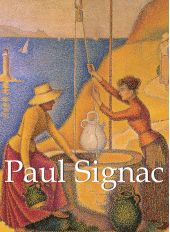 Inspired by Monet’s work at a young age, Paul Signac (1863-1935) was a friend and disciple of Georges Seurat who combined the scientific precision of pointillism with the vivid colors and emotional expressivity of Impressionism. A close personal friend of Vincent van Gogh, who was a great admirer of his techniques, Signac traveled the world in search of inspiration for his monumental canvases. This book examines the intricacies of Signac’s celebrated technique, as well as showcasing the details of some of his most celebrated works. ... Далее
Inspired by Monet’s work at a young age, Paul Signac (1863-1935) was a friend and disciple of Georges Seurat who combined the scientific precision of pointillism with the vivid colors and emotional expressivity of Impressionism. A close personal friend of Vincent van Gogh, who was a great admirer of his techniques, Signac traveled the world in search of inspiration for his monumental canvases. This book examines the intricacies of Signac’s celebrated technique, as well as showcasing the details of some of his most celebrated works. ... Далее -
10.
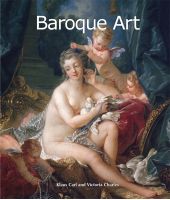 The Baroque period lasted from the beginning of the seventeenth century to the middle of the eighteenth century. Baroque art was artists’ response to the Catholic Church’s demand for solemn grandeur following the Council of Trent, and through its monumentality and grandiloquence it seduced the great European courts. Amongst the Baroque arts, architecture has, without doubt, left the greatest mark in Europe: the continent is dotted with magnificent Baroque churches and palaces, commissioned by patrons at the height of their power. The works of Gian Lorenzo Bernini of the Southern School and Peter Paul Rubens of the Northern School alone show the importance of this artistic period. Rich in images encompassing the arts of painting, sculpture and architecture, this work offers a complete insight into this passionate period in the history of art. ... Далее
The Baroque period lasted from the beginning of the seventeenth century to the middle of the eighteenth century. Baroque art was artists’ response to the Catholic Church’s demand for solemn grandeur following the Council of Trent, and through its monumentality and grandiloquence it seduced the great European courts. Amongst the Baroque arts, architecture has, without doubt, left the greatest mark in Europe: the continent is dotted with magnificent Baroque churches and palaces, commissioned by patrons at the height of their power. The works of Gian Lorenzo Bernini of the Southern School and Peter Paul Rubens of the Northern School alone show the importance of this artistic period. Rich in images encompassing the arts of painting, sculpture and architecture, this work offers a complete insight into this passionate period in the history of art. ... Далее -
11.
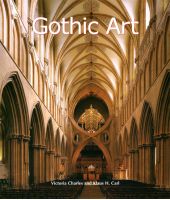 Gothic art finds its roots in the powerful architecture of the cathedrals of northern France. It is a medieval art movement that evolved throughout Europe over more than 200 years. Leaving curved Roman forms behind, the architects started using flying buttresses and pointed arches to open up cathedrals to daylight. A period of great economic and social change, the Gothic era also saw the development of a new iconography celebrating the Holy Mary – in drastic contrast to the fearful themes of dark Roman times. Full of rich changes in all of the various art forms (architecture, sculpture, painting, etc.), Gothic art paved the way for the Italian Renaissance and International Gothic movement. ... Далее
Gothic art finds its roots in the powerful architecture of the cathedrals of northern France. It is a medieval art movement that evolved throughout Europe over more than 200 years. Leaving curved Roman forms behind, the architects started using flying buttresses and pointed arches to open up cathedrals to daylight. A period of great economic and social change, the Gothic era also saw the development of a new iconography celebrating the Holy Mary – in drastic contrast to the fearful themes of dark Roman times. Full of rich changes in all of the various art forms (architecture, sculpture, painting, etc.), Gothic art paved the way for the Italian Renaissance and International Gothic movement. ... Далее -
12.
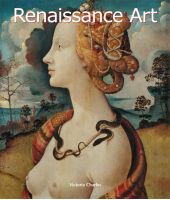 The Renaissance began at the end of the 14th century in Italy and had extended across the whole of Europe by the second half of the 16th century. The rediscovery of the splendour of ancient Greece and Rome marked the beginning of the rebirth of the arts following the break-down of the dogmatic certitude of the Middle Ages. A number of artists began to innovate in the domains of painting, sculpture, and architecture. Depicting the ideal and the actual, the sacred and the profane, the period provided a frame of reference which influenced European art over the next four centuries. Leonardo da Vinci, Michelangelo, Botticelli, Fra Angelico, Giorgione, Mantegna, Raphael, Dürer and Bruegel are among the artists who made considerable contributions to the art of the Renaissance. ... Далее
The Renaissance began at the end of the 14th century in Italy and had extended across the whole of Europe by the second half of the 16th century. The rediscovery of the splendour of ancient Greece and Rome marked the beginning of the rebirth of the arts following the break-down of the dogmatic certitude of the Middle Ages. A number of artists began to innovate in the domains of painting, sculpture, and architecture. Depicting the ideal and the actual, the sacred and the profane, the period provided a frame of reference which influenced European art over the next four centuries. Leonardo da Vinci, Michelangelo, Botticelli, Fra Angelico, Giorgione, Mantegna, Raphael, Dürer and Bruegel are among the artists who made considerable contributions to the art of the Renaissance. ... Далее -
13.
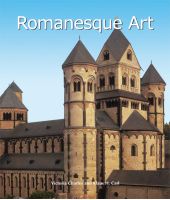 In art history, the term ‘Romanesque art’ distinguishes the period between the beginning of the 11th and the end of the 12th century. This era showed a great diversity of regional schools each with their own unique style. In architecture as well as in sculpture, Romanesque art is marked by raw forms. Through its rich iconography and captivating text, this work reclaims the importance of this art which is today often overshadowed by the later Gothic style. ... Далее
In art history, the term ‘Romanesque art’ distinguishes the period between the beginning of the 11th and the end of the 12th century. This era showed a great diversity of regional schools each with their own unique style. In architecture as well as in sculpture, Romanesque art is marked by raw forms. Through its rich iconography and captivating text, this work reclaims the importance of this art which is today often overshadowed by the later Gothic style. ... Далее -
14.
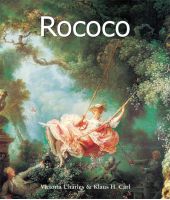 Deriving from the French word rocaille, in reference to the curved forms of shellfish, and the Italian barocco, the French created the term ‘Rococo’. Appearing at the beginning of the 18th century, it rapidly spread to the whole of Europe. Extravagant and light, Rococo responded perfectly to the spontaneity of the aristocracy of the time. In many aspects, this art was linked to its predecessor, Baroque, and it is thus also referred to as late Baroque style. While artists such as Tiepolo, Boucher and Reynolds carried the style to its apogee, the movement was often condemned for its superficiality. In the second half of the 18th century, Rococo began its decline. At the end of the century, facing the advent of Neoclassicism, it was plunged into obscurity. It had to wait nearly a century before art historians could restore it to the radiance of its golden age, which is rediscovered in this work by Klaus H. Carl and Victoria Charles. ... Далее
Deriving from the French word rocaille, in reference to the curved forms of shellfish, and the Italian barocco, the French created the term ‘Rococo’. Appearing at the beginning of the 18th century, it rapidly spread to the whole of Europe. Extravagant and light, Rococo responded perfectly to the spontaneity of the aristocracy of the time. In many aspects, this art was linked to its predecessor, Baroque, and it is thus also referred to as late Baroque style. While artists such as Tiepolo, Boucher and Reynolds carried the style to its apogee, the movement was often condemned for its superficiality. In the second half of the 18th century, Rococo began its decline. At the end of the century, facing the advent of Neoclassicism, it was plunged into obscurity. It had to wait nearly a century before art historians could restore it to the radiance of its golden age, which is rediscovered in this work by Klaus H. Carl and Victoria Charles. ... Далее -
15.
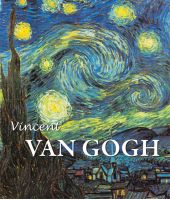 Vincent van Gogh’s life and work are so intertwined that it is hardly possible to observe one without thinking of the other. Van Gogh has indeed become the incarnation of the suffering, misunderstood martyr of modern art, the emblem of the artist as an outsider. An article, published in 1890, gave details about van Gogh’s illness. The author of the article saw the painter as “a terrible and demented genius, often sublime, sometimes grotesque, always at the brink of the pathological.” Very little is known about Vincent’s childhood. At the age of eleven he had to leave “the human nest”, as he called it himself, for various boarding schools. The first portrait shows us van Gogh as an earnest nineteen year old. At that time he had already been at work for three years in The Hague and, later, in London in the gallery Goupil & Co. In 1874 his love for Ursula Loyer ended in disaster and a year later he was transferred to Paris, against his will. After a particularly heated argument during Christmas holidays in 1881, his father, a pastor, ordered Vincent to leave. With this final break, he abandoned his family name and signed his canvases simply “Vincent”. He left for Paris and never returned to Holland. In Paris he came to know Paul Gauguin, whose paintings he greatly admired. The self-portrait was the main subject of Vincent’s work from 1886c88. In February 1888 Vincent left Paris for Arles and tried to persuade Gauguin to join him. The months of waiting for Gauguin were the most productive time in van Gogh’s life. He wanted to show his friend as many pictures as possible and decorate the Yellow House. But Gauguin did not share his views on art and finally returned to Paris. On 7 January, 1889, fourteen days after his famous self-mutilation, Vincent left the hospital where he was convalescing. Although he hoped to recover from and to forget his madness, but he actually came back twice more in the same year. During his last stay in hospital, Vincent painted landscapes in which he recreated the world of his childhood. It is said that Vincent van Gogh shot himself in the side in a field but decided to return to the inn and went to bed. The landlord informed Dr Gachet and his brother Theo, who described the last moments of his life which ended on 29 July, 1890: “I wanted to die. While I was sitting next to him promising that we would try to heal him. […], he answered, ‘La tristesse durera toujours (The sadness will last forever).’” ... Далее
Vincent van Gogh’s life and work are so intertwined that it is hardly possible to observe one without thinking of the other. Van Gogh has indeed become the incarnation of the suffering, misunderstood martyr of modern art, the emblem of the artist as an outsider. An article, published in 1890, gave details about van Gogh’s illness. The author of the article saw the painter as “a terrible and demented genius, often sublime, sometimes grotesque, always at the brink of the pathological.” Very little is known about Vincent’s childhood. At the age of eleven he had to leave “the human nest”, as he called it himself, for various boarding schools. The first portrait shows us van Gogh as an earnest nineteen year old. At that time he had already been at work for three years in The Hague and, later, in London in the gallery Goupil & Co. In 1874 his love for Ursula Loyer ended in disaster and a year later he was transferred to Paris, against his will. After a particularly heated argument during Christmas holidays in 1881, his father, a pastor, ordered Vincent to leave. With this final break, he abandoned his family name and signed his canvases simply “Vincent”. He left for Paris and never returned to Holland. In Paris he came to know Paul Gauguin, whose paintings he greatly admired. The self-portrait was the main subject of Vincent’s work from 1886c88. In February 1888 Vincent left Paris for Arles and tried to persuade Gauguin to join him. The months of waiting for Gauguin were the most productive time in van Gogh’s life. He wanted to show his friend as many pictures as possible and decorate the Yellow House. But Gauguin did not share his views on art and finally returned to Paris. On 7 January, 1889, fourteen days after his famous self-mutilation, Vincent left the hospital where he was convalescing. Although he hoped to recover from and to forget his madness, but he actually came back twice more in the same year. During his last stay in hospital, Vincent painted landscapes in which he recreated the world of his childhood. It is said that Vincent van Gogh shot himself in the side in a field but decided to return to the inn and went to bed. The landlord informed Dr Gachet and his brother Theo, who described the last moments of his life which ended on 29 July, 1890: “I wanted to die. While I was sitting next to him promising that we would try to heal him. […], he answered, ‘La tristesse durera toujours (The sadness will last forever).’” ... Далее -
16.
 Paul Gauguin was first a sailor, then a successful stockbroker in Paris. In 1874 he began to paint at weekends as a Sunday painter. Nine years later, after a stock-market crash, he felt confident of his ability to earn a living for his family by painting and he resigned his position and took up the painter’s brush full time. Following the lead of Cézanne, Gauguin painted still-lifes from the very beginning of his artistic career. He even owned a still-life by Cézanne, which is shown in Gauguin’s painting Portrait of Marie Lagadu. The year 1891 was crucial for Gauguin. In that year he left France for Tahiti, where he stayed till 1893. This stay in Tahiti determined his future life and career, for in 1895, after a sojourn in France, he returned there for good. In Tahiti, Gauguin discovered primitive art, with its flat forms and violent colours, belonging to an untamed nature. With absolute sincerity, he transferred them onto his canvas. His paintings from then on reflected this style: a radical simplification of drawing; brilliant, pure, bright colours; an ornamental type composition; and a deliberate flatness of planes. Gauguin termed this style “synthetic symbolism”. ... Далее
Paul Gauguin was first a sailor, then a successful stockbroker in Paris. In 1874 he began to paint at weekends as a Sunday painter. Nine years later, after a stock-market crash, he felt confident of his ability to earn a living for his family by painting and he resigned his position and took up the painter’s brush full time. Following the lead of Cézanne, Gauguin painted still-lifes from the very beginning of his artistic career. He even owned a still-life by Cézanne, which is shown in Gauguin’s painting Portrait of Marie Lagadu. The year 1891 was crucial for Gauguin. In that year he left France for Tahiti, where he stayed till 1893. This stay in Tahiti determined his future life and career, for in 1895, after a sojourn in France, he returned there for good. In Tahiti, Gauguin discovered primitive art, with its flat forms and violent colours, belonging to an untamed nature. With absolute sincerity, he transferred them onto his canvas. His paintings from then on reflected this style: a radical simplification of drawing; brilliant, pure, bright colours; an ornamental type composition; and a deliberate flatness of planes. Gauguin termed this style “synthetic symbolism”. ... Далее -
17.
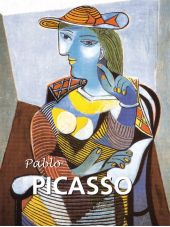 Picasso was born a Spaniard and, so they say, began to draw before he could speak. As an infant he was instinctively attracted to artist’s tools. In early childhood he could spend hours in happy concentration drawing spirals with a sense and meaning known only to himself. At other times, shunning children’s games, he traced his first pictures in the sand. This early self-expression held out promise of a rare gift. Málaga must be mentioned, for it was there, on 25 October 1881, that Pablo Ruiz Picasso was born and it was there that he spent the first ten years of his life. Picasso’s father was a painter and professor at the School of Fine Arts and Crafts. Picasso learnt from him the basics of formal academic art training. Then he studied at the Academy of Arts in Madrid but never finished his degree. Picasso, who was not yet eighteen, had reached the point of his greatest rebelliousness; he repudiated academia’s anemic aesthetics along with realism’s pedestrian prose and, quite naturally, joined those who called themselves modernists, the non-conformist artists and writers, those whom Sabartés called “the élite of Catalan thought” and who were grouped around the artists’ café Els Quatre Gats. During 1899 and 1900 the only subjects Picasso deemed worthy of painting were those which reflected the “final truth”; the transience of human life and the inevitability of death. His early works, ranged under the name of “Blue Period” (1901-1904), consist in blue-tinted paintings influenced by a trip through Spain and the death of his friend, Casagemas. Even though Picasso himself repeatedly insisted on the inner, subjective nature of the Blue Period, its genesis and, especially, the monochromatic blue were for many years explained as merely the results of various aesthetic influences. Between 1905 and 1907, Picasso entered a new phase, called “Rose Period” characterised by a more cheerful style with orange and pink colours. In Gosol, in the summer of 1906 the nude female form assumed an extraordinary importance for Picasso; he equated a depersonalised, aboriginal, simple nakedness with the concept of “woman”. The importance that female nudes were to assume as subjects for Picasso in the next few months (in the winter and spring of 1907) came when he developed the composition of the large painting, Les Demoiselles d’Avignon. Just as African art is usually considered the factor leading to the development of Picasso’s classic aesthetics in 1907, the lessons of Cézanne are perceived as the cornerstone of this new progression. This relates, first of all, to a spatial conception of the canvas as a composed entity, subjected to a certain constructive system. Georges Braque, with whom Picasso became friends in the autumn of 1908 and together with whom he led Cubism during the six years of its apogee, was amazed by the similarity of Picasso’s pictorial experiments to his own. He explained that: “Cubism’s main direction was the materialisation of space.” After his Cubist period, in the 1920s, Picasso returned to a more figurative style and got closer to the surrealist movement. He represented distorted and monstrous bodies but in a very personal style. After the bombing of Guernica during 1937, Picasso made one of his most famous works which starkly symbolises the horrors of that war and, indeed, all wars. In the 1960s, his art changed again and Picasso began looking at the art of great masters and based his paintings on ones by Velázquez, Poussin, Goya, Manet, Courbet and Delacroix. Picasso’s final works were a mixture of style, becoming more colourful, expressive and optimistic. Picasso died in 1973, in his villa in Mougins. The Russian Symbolist Georgy Chulkov wrote: “Picasso’s death is tragic. Yet how blind and naïve are those who believe in imitating Picasso and learning from him. Learning what? For these forms have no corresponding emotions outside of Hell. But to be in Hell means to anticipate death. The Cubists are hardly privy to such unlimited knowledge”. ... Далее
Picasso was born a Spaniard and, so they say, began to draw before he could speak. As an infant he was instinctively attracted to artist’s tools. In early childhood he could spend hours in happy concentration drawing spirals with a sense and meaning known only to himself. At other times, shunning children’s games, he traced his first pictures in the sand. This early self-expression held out promise of a rare gift. Málaga must be mentioned, for it was there, on 25 October 1881, that Pablo Ruiz Picasso was born and it was there that he spent the first ten years of his life. Picasso’s father was a painter and professor at the School of Fine Arts and Crafts. Picasso learnt from him the basics of formal academic art training. Then he studied at the Academy of Arts in Madrid but never finished his degree. Picasso, who was not yet eighteen, had reached the point of his greatest rebelliousness; he repudiated academia’s anemic aesthetics along with realism’s pedestrian prose and, quite naturally, joined those who called themselves modernists, the non-conformist artists and writers, those whom Sabartés called “the élite of Catalan thought” and who were grouped around the artists’ café Els Quatre Gats. During 1899 and 1900 the only subjects Picasso deemed worthy of painting were those which reflected the “final truth”; the transience of human life and the inevitability of death. His early works, ranged under the name of “Blue Period” (1901-1904), consist in blue-tinted paintings influenced by a trip through Spain and the death of his friend, Casagemas. Even though Picasso himself repeatedly insisted on the inner, subjective nature of the Blue Period, its genesis and, especially, the monochromatic blue were for many years explained as merely the results of various aesthetic influences. Between 1905 and 1907, Picasso entered a new phase, called “Rose Period” characterised by a more cheerful style with orange and pink colours. In Gosol, in the summer of 1906 the nude female form assumed an extraordinary importance for Picasso; he equated a depersonalised, aboriginal, simple nakedness with the concept of “woman”. The importance that female nudes were to assume as subjects for Picasso in the next few months (in the winter and spring of 1907) came when he developed the composition of the large painting, Les Demoiselles d’Avignon. Just as African art is usually considered the factor leading to the development of Picasso’s classic aesthetics in 1907, the lessons of Cézanne are perceived as the cornerstone of this new progression. This relates, first of all, to a spatial conception of the canvas as a composed entity, subjected to a certain constructive system. Georges Braque, with whom Picasso became friends in the autumn of 1908 and together with whom he led Cubism during the six years of its apogee, was amazed by the similarity of Picasso’s pictorial experiments to his own. He explained that: “Cubism’s main direction was the materialisation of space.” After his Cubist period, in the 1920s, Picasso returned to a more figurative style and got closer to the surrealist movement. He represented distorted and monstrous bodies but in a very personal style. After the bombing of Guernica during 1937, Picasso made one of his most famous works which starkly symbolises the horrors of that war and, indeed, all wars. In the 1960s, his art changed again and Picasso began looking at the art of great masters and based his paintings on ones by Velázquez, Poussin, Goya, Manet, Courbet and Delacroix. Picasso’s final works were a mixture of style, becoming more colourful, expressive and optimistic. Picasso died in 1973, in his villa in Mougins. The Russian Symbolist Georgy Chulkov wrote: “Picasso’s death is tragic. Yet how blind and naïve are those who believe in imitating Picasso and learning from him. Learning what? For these forms have no corresponding emotions outside of Hell. But to be in Hell means to anticipate death. The Cubists are hardly privy to such unlimited knowledge”. ... Далее -
18.
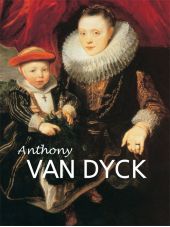 Van Dyck was accustomed early to Rubens’ sumptuous lifestyle; and, when he visited Italy with letters of introduction from his master, lived in the palaces of his patrons, himself adopting such an elegant ostentation that he was spoken of as ‘the Cavalier Painter’. After his return to Antwerp his patrons belonged to the rich and noble class, and his own style of living was modelled on theirs; so that, when in 1632 he received the appointment of court painter to Charles I of England, he maintained an almost princely establishment, and his house at Blackfriars was a resort of fashion. The last two years of his life were spent travelling on the Continent with his young wife, the daughter of Lord Gowry. His health, however, had been broken by the excesses of work, and he returned to London to die. He was buried at St. Paul’s Cathedral. Van Dyck tried to amalgamate the influences of Italy (Titian, Veronese, Bellini) and Flanders and he succeeded in some paintings, which have a touching grace, notably in his Madonnas and Holy Families, his Crucifixions and Depositions from the Cross, and also in some of his mythological compositions. In his younger days he painted many altarpieces full of sensitive religious feeling and enthusiasm. However, his main glory was as a portraitist, the most elegant and aristocratic ever known. The great Portrait of Charles I in the Louvre is a work unique for its sovereign elegance. In his portraits, he invented a style of elegance and refinement which became a model for the artists of the seventeenth and eighteenth centuries, corresponding as it did to the genteel luxury of the court life of the period. He is also considered one of the greatest colourists in the history of art. ... Далее
Van Dyck was accustomed early to Rubens’ sumptuous lifestyle; and, when he visited Italy with letters of introduction from his master, lived in the palaces of his patrons, himself adopting such an elegant ostentation that he was spoken of as ‘the Cavalier Painter’. After his return to Antwerp his patrons belonged to the rich and noble class, and his own style of living was modelled on theirs; so that, when in 1632 he received the appointment of court painter to Charles I of England, he maintained an almost princely establishment, and his house at Blackfriars was a resort of fashion. The last two years of his life were spent travelling on the Continent with his young wife, the daughter of Lord Gowry. His health, however, had been broken by the excesses of work, and he returned to London to die. He was buried at St. Paul’s Cathedral. Van Dyck tried to amalgamate the influences of Italy (Titian, Veronese, Bellini) and Flanders and he succeeded in some paintings, which have a touching grace, notably in his Madonnas and Holy Families, his Crucifixions and Depositions from the Cross, and also in some of his mythological compositions. In his younger days he painted many altarpieces full of sensitive religious feeling and enthusiasm. However, his main glory was as a portraitist, the most elegant and aristocratic ever known. The great Portrait of Charles I in the Louvre is a work unique for its sovereign elegance. In his portraits, he invented a style of elegance and refinement which became a model for the artists of the seventeenth and eighteenth centuries, corresponding as it did to the genteel luxury of the court life of the period. He is also considered one of the greatest colourists in the history of art. ... Далее -
19.
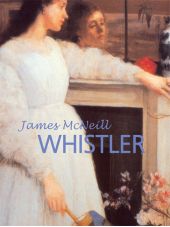 Whistler suddenly shot to fame like a meteor at a crucial moment in the history of art, a field in which he was a pioneer. Like the impressionists, with whom he sided, he wanted to impose his own ideas. Whistler’s work can be divided into four periods. The first may be called a period of research in which he was influenced by the Realism of Gustave Courbet and by Japanese art. Whistler then discovered his own originality in the Nocturnes and the Cremorne Gardens series, thereby coming into conflict with the academics who wanted a work of art to tell a story. When he painted the portrait of his mother, Whistler entitled it Arrangement in Grey and Black and this is symbolic of his aesthetic theories. When painting the Cremorne Pleasure Gardens it was not to depict identifiable figures, as did Renoir in his work on similar themes, but to capture an atmosphere. He loved the mists that hovered over the banks of the Thames, the pale light, and the factory chimneys which at night turned into magical minarets. Night redrew landscapes, effacing the details. This was the period in which he became an adventurer in art; his work, which verged on abstraction, shocked his contemporaries. The third period is dominated by the full-length portraits that brought him his fame. He was able to imbue this traditional genre with his profound originality. He tried to capture part of the souls of his models and placed the characters in their natural habitats. This gave his models a strange presence so that they seem about to walk out of the picture to physically encounter the viewer. By extracting the poetic substance from individuals he created portraits described as “mediums” by his contemporaries, and which were the inspiration for Oscar Wilde’s The Picture of Dorian Gray. Towards the end of his life, the artist began painting landscapes and portraits in the classical tradition, strongly influenced by Velázquez. Whistler proved to be extremely rigorous in ensuring his paintings coincided with his theories. He never hesitated in crossing swords with the most famous art theoreticians of his day. His personality, his outbursts, and his elegance were a perfect focus for curiosity and admiration. He was a close friend of Stéphane Mallarmé, and admired by Marcel Proust, who rendered homage to him in A La Recherche du Temps Perdu. He was also a provocative dandy, a prickly socialite, a demanding artist, and a daring innovator. ... Далее
Whistler suddenly shot to fame like a meteor at a crucial moment in the history of art, a field in which he was a pioneer. Like the impressionists, with whom he sided, he wanted to impose his own ideas. Whistler’s work can be divided into four periods. The first may be called a period of research in which he was influenced by the Realism of Gustave Courbet and by Japanese art. Whistler then discovered his own originality in the Nocturnes and the Cremorne Gardens series, thereby coming into conflict with the academics who wanted a work of art to tell a story. When he painted the portrait of his mother, Whistler entitled it Arrangement in Grey and Black and this is symbolic of his aesthetic theories. When painting the Cremorne Pleasure Gardens it was not to depict identifiable figures, as did Renoir in his work on similar themes, but to capture an atmosphere. He loved the mists that hovered over the banks of the Thames, the pale light, and the factory chimneys which at night turned into magical minarets. Night redrew landscapes, effacing the details. This was the period in which he became an adventurer in art; his work, which verged on abstraction, shocked his contemporaries. The third period is dominated by the full-length portraits that brought him his fame. He was able to imbue this traditional genre with his profound originality. He tried to capture part of the souls of his models and placed the characters in their natural habitats. This gave his models a strange presence so that they seem about to walk out of the picture to physically encounter the viewer. By extracting the poetic substance from individuals he created portraits described as “mediums” by his contemporaries, and which were the inspiration for Oscar Wilde’s The Picture of Dorian Gray. Towards the end of his life, the artist began painting landscapes and portraits in the classical tradition, strongly influenced by Velázquez. Whistler proved to be extremely rigorous in ensuring his paintings coincided with his theories. He never hesitated in crossing swords with the most famous art theoreticians of his day. His personality, his outbursts, and his elegance were a perfect focus for curiosity and admiration. He was a close friend of Stéphane Mallarmé, and admired by Marcel Proust, who rendered homage to him in A La Recherche du Temps Perdu. He was also a provocative dandy, a prickly socialite, a demanding artist, and a daring innovator. ... Далее -
20.
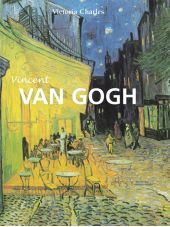 Vincent van Gogh’s life and work are so intertwined that it is hardly possible to observe one without thinking of the other. Van Gogh has indeed become the incarnation of the suffering, misunderstood martyr of modern art, the emblem of the artist as an outsider. An article, published in 1890, gave details about van Gogh’s illness. The author of the article saw the painter as “a terrible and demented genius, often sublime, sometimes grotesque, always at the brink of the pathological.” Very little is known about Vincent’s childhood. At the age of eleven he had to leave “the human nest”, as he called it himself, for various boarding schools. The first portrait shows us van Gogh as an earnest nineteen year old. At that time he had already been at work for three years in The Hague and, later, in London in the gallery Goupil & Co. In 1874 his love for Ursula Loyer ended in disaster and a year later he was transferred to Paris, against his will. After a particularly heated argument during Christmas holidays in 1881, his father, a pastor, ordered Vincent to leave. With this final break, he abandoned his family name and signed his canvases simply “Vincent”. He left for Paris and never returned to Holland. In Paris he came to know Paul Gauguin, whose paintings he greatly admired. The self-portrait was the main subject of Vincent’s work from 1886c88. In February 1888 Vincent left Paris for Arles and tried to persuade Gauguin to join him. The months of waiting for Gauguin were the most productive time in van Gogh’s life. He wanted to show his friend as many pictures as possible and decorate the Yellow House. But Gauguin did not share his views on art and finally returned to Paris. On 7 January, 1889, fourteen days after his famous self-mutilation, Vincent left the hospital where he was convalescing. Although he hoped to recover from and to forget his madness, but he actually came back twice more in the same year. During his last stay in hospital, Vincent painted landscapes in which he recreated the world of his childhood. It is said that Vincent van Gogh shot himself in the side in a field but decided to return to the inn and went to bed. The landlord informed Dr Gachet and his brother Theo, who described the last moments of his life which ended on 29 July, 1890: “I wanted to die. While I was sitting next to him promising that we would try to heal him. […], he answered, ‘La tristesse durera toujours (The sadness will last forever).’” ... Далее
Vincent van Gogh’s life and work are so intertwined that it is hardly possible to observe one without thinking of the other. Van Gogh has indeed become the incarnation of the suffering, misunderstood martyr of modern art, the emblem of the artist as an outsider. An article, published in 1890, gave details about van Gogh’s illness. The author of the article saw the painter as “a terrible and demented genius, often sublime, sometimes grotesque, always at the brink of the pathological.” Very little is known about Vincent’s childhood. At the age of eleven he had to leave “the human nest”, as he called it himself, for various boarding schools. The first portrait shows us van Gogh as an earnest nineteen year old. At that time he had already been at work for three years in The Hague and, later, in London in the gallery Goupil & Co. In 1874 his love for Ursula Loyer ended in disaster and a year later he was transferred to Paris, against his will. After a particularly heated argument during Christmas holidays in 1881, his father, a pastor, ordered Vincent to leave. With this final break, he abandoned his family name and signed his canvases simply “Vincent”. He left for Paris and never returned to Holland. In Paris he came to know Paul Gauguin, whose paintings he greatly admired. The self-portrait was the main subject of Vincent’s work from 1886c88. In February 1888 Vincent left Paris for Arles and tried to persuade Gauguin to join him. The months of waiting for Gauguin were the most productive time in van Gogh’s life. He wanted to show his friend as many pictures as possible and decorate the Yellow House. But Gauguin did not share his views on art and finally returned to Paris. On 7 January, 1889, fourteen days after his famous self-mutilation, Vincent left the hospital where he was convalescing. Although he hoped to recover from and to forget his madness, but he actually came back twice more in the same year. During his last stay in hospital, Vincent painted landscapes in which he recreated the world of his childhood. It is said that Vincent van Gogh shot himself in the side in a field but decided to return to the inn and went to bed. The landlord informed Dr Gachet and his brother Theo, who described the last moments of his life which ended on 29 July, 1890: “I wanted to die. While I was sitting next to him promising that we would try to heal him. […], he answered, ‘La tristesse durera toujours (The sadness will last forever).’” ... Далее -
21.
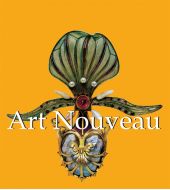 Ever since its triumph at the Paris Universal Exposition, Art Nouveau has continued to inspire artists. The movement offered an artistic response to the industrial revolution and the creative vacuum left in its wake, exerting a huge impact on the decorative arts. Art Nouveau spans all forms of expression – including design, painting and architecture – and covers artists such as Gustav Klimt, Koloman Moser, Antoni Gaudí, Jan Toorop, and William Morris. ... Далее
Ever since its triumph at the Paris Universal Exposition, Art Nouveau has continued to inspire artists. The movement offered an artistic response to the industrial revolution and the creative vacuum left in its wake, exerting a huge impact on the decorative arts. Art Nouveau spans all forms of expression – including design, painting and architecture – and covers artists such as Gustav Klimt, Koloman Moser, Antoni Gaudí, Jan Toorop, and William Morris. ... Далее -
22.
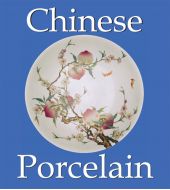 The art of porcelain manufacturing is linked closely to China and its history, appearing in the 7th century when it became an important symbol of royalty or high status. The masterpieces of the genre featured in this book range from simple tea bowls and fantastic vases to hair ornaments, figurines and snuff boxes with intricate, multi-coloured designs. The presentations of these fragile objects are accompanied by an informative outline of the history of Chinese porcelain. This delicate material attracted and continues to attract the attention of art lovers throughout the world. ... Далее
The art of porcelain manufacturing is linked closely to China and its history, appearing in the 7th century when it became an important symbol of royalty or high status. The masterpieces of the genre featured in this book range from simple tea bowls and fantastic vases to hair ornaments, figurines and snuff boxes with intricate, multi-coloured designs. The presentations of these fragile objects are accompanied by an informative outline of the history of Chinese porcelain. This delicate material attracted and continues to attract the attention of art lovers throughout the world. ... Далее -
23.
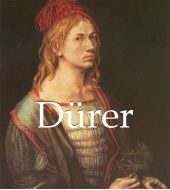 Dürer is the greatest of German artists and most representative of the German mind. He, like Leonardo, was a man of striking physical attractiveness, great charm of manner and conversation, and mental accomplishment, being well grounded in the sciences and mathematics of the day. His skill in draughtsmanship was extraordinary; Dürer is even more celebrated for his engravings on wood and copper than for his paintings. With both, the skill of his hand was at the service of the most minute observation and analytical research into the character and structure of form. Dürer, however, had not the feeling for abstract beauty and ideal grace that Leonardo possessed; but instead, a profound earnestness, a closer interest in humanity, and a more dramatic invention. Dürer was a great admirer of Luther; and in his own work is the equivalent of what was mighty in the Reformer. It is very serious and sincere; very human, and addressed the hearts and understanding of the masses. Nuremberg, his hometown, had become a great centre of printing and the chief distributor of books throughout Europe. Consequently, the art of engraving upon wood and copper, which may be called the pictorial branch of printing, was much encouraged. Of this opportunity Dürer took full advantage. The Renaissance in Germany was more a moral and intellectual than an artistic movement, partly due to northern conditions. The feeling for ideal grace and beauty is fostered by the study of the human form, and this had been flourishing predominantly in southern Europe. But Albrecht Dürer had a genius too powerful to be conquered. He remained profoundly Germanic in his stormy penchant for drama, as was his contemporary Mathias Grünewald, a fantastic visionary and rebel against all Italian seductions. Dürer, in spite of all his tense energy, dominated conflicting passions by a sovereign and speculative intelligence comparable with that of Leonardo. He, too, was on the border of two worlds, that of the Gothic age and that of the modern age, and on the border of two arts, being an engraver and draughtsman rather than a painter. ... Далее
Dürer is the greatest of German artists and most representative of the German mind. He, like Leonardo, was a man of striking physical attractiveness, great charm of manner and conversation, and mental accomplishment, being well grounded in the sciences and mathematics of the day. His skill in draughtsmanship was extraordinary; Dürer is even more celebrated for his engravings on wood and copper than for his paintings. With both, the skill of his hand was at the service of the most minute observation and analytical research into the character and structure of form. Dürer, however, had not the feeling for abstract beauty and ideal grace that Leonardo possessed; but instead, a profound earnestness, a closer interest in humanity, and a more dramatic invention. Dürer was a great admirer of Luther; and in his own work is the equivalent of what was mighty in the Reformer. It is very serious and sincere; very human, and addressed the hearts and understanding of the masses. Nuremberg, his hometown, had become a great centre of printing and the chief distributor of books throughout Europe. Consequently, the art of engraving upon wood and copper, which may be called the pictorial branch of printing, was much encouraged. Of this opportunity Dürer took full advantage. The Renaissance in Germany was more a moral and intellectual than an artistic movement, partly due to northern conditions. The feeling for ideal grace and beauty is fostered by the study of the human form, and this had been flourishing predominantly in southern Europe. But Albrecht Dürer had a genius too powerful to be conquered. He remained profoundly Germanic in his stormy penchant for drama, as was his contemporary Mathias Grünewald, a fantastic visionary and rebel against all Italian seductions. Dürer, in spite of all his tense energy, dominated conflicting passions by a sovereign and speculative intelligence comparable with that of Leonardo. He, too, was on the border of two worlds, that of the Gothic age and that of the modern age, and on the border of two arts, being an engraver and draughtsman rather than a painter. ... Далее -
24.
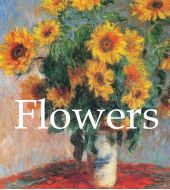 Flowers are the centerpiece in the majority of pictorial still-lifes. By painting their colours and forms, artists from Brueghel to O’Keeffe have created symbols for both life and mortality. Van Gogh’s sunflowers, Monet’s water lilies and Matisse’s bouquets are, of course, unforgotten. Most of the works contained in Flowers are true masterpieces, which have often marked whole epochs and styles. ... Далее
Flowers are the centerpiece in the majority of pictorial still-lifes. By painting their colours and forms, artists from Brueghel to O’Keeffe have created symbols for both life and mortality. Van Gogh’s sunflowers, Monet’s water lilies and Matisse’s bouquets are, of course, unforgotten. Most of the works contained in Flowers are true masterpieces, which have often marked whole epochs and styles. ... Далее -
25.
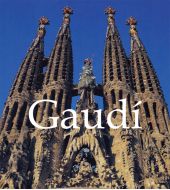 Spanish architect and designer, Antoni Gaudí (1852-1926) was an important and influential figure in the history of contemporary Spanish art. His use of colour, application of a range of materials and the introduction of organic forms into his constructions were an innovation in the realm of architecture. In his journal, Gaudí freely expressed his own feelings on art, “the colours used in architecture have to be intense, logical and fertile.” His completed works (the Casa Batlló, 1905-1907 and the Casa Milà, 1905-1910) and his incomplete works (the restoration of the Poblet Monastery and the altarpiece of Alella in Barcelona) illustrate the importance of this philosophy. His furniture designs were conceived with the same philosophy, as shown, for example, in his own office (1878) or the lamps in the Plaza Real in Barcelona. The Sagrada Familia (1882-1926) was a monumental project which eventually took over his life (it was still incomplete at the time of his death). ... Далее
Spanish architect and designer, Antoni Gaudí (1852-1926) was an important and influential figure in the history of contemporary Spanish art. His use of colour, application of a range of materials and the introduction of organic forms into his constructions were an innovation in the realm of architecture. In his journal, Gaudí freely expressed his own feelings on art, “the colours used in architecture have to be intense, logical and fertile.” His completed works (the Casa Batlló, 1905-1907 and the Casa Milà, 1905-1910) and his incomplete works (the restoration of the Poblet Monastery and the altarpiece of Alella in Barcelona) illustrate the importance of this philosophy. His furniture designs were conceived with the same philosophy, as shown, for example, in his own office (1878) or the lamps in the Plaza Real in Barcelona. The Sagrada Familia (1882-1926) was a monumental project which eventually took over his life (it was still incomplete at the time of his death). ... Далее -
26.
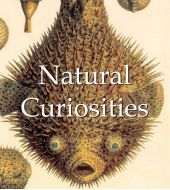 Reflecting their owner’s taste and serving as an impressive exhibition space for visitors, cabinets of curiosities were a place of interest in the houses of the wealthy in the 16th an 17th centuries. Displaying rare vegetable and animal species and fossils, these cabinets were always dedicated to science and knowledge. By collecting uncommon and beautiful objects in nature, rich noblemen were able to build a microcosm expressing the diversity of God’s creation. ... Далее
Reflecting their owner’s taste and serving as an impressive exhibition space for visitors, cabinets of curiosities were a place of interest in the houses of the wealthy in the 16th an 17th centuries. Displaying rare vegetable and animal species and fossils, these cabinets were always dedicated to science and knowledge. By collecting uncommon and beautiful objects in nature, rich noblemen were able to build a microcosm expressing the diversity of God’s creation. ... Далее -
27.
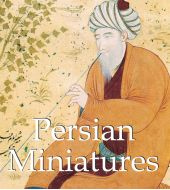 Encounter one of history’s greatest civilisations through miniatures. In Persian Miniatures, the story of the magnificent Persian Empire is told by way of a small but vibrant artistic tradition. The colourful images, which are, in fact, elaborate book illustrations, introduce a curious world of adventures, heroes and sovereigns. The Mega Square layout highlights three details from each image and helps to discover amazing peculiarities. ... Далее
Encounter one of history’s greatest civilisations through miniatures. In Persian Miniatures, the story of the magnificent Persian Empire is told by way of a small but vibrant artistic tradition. The colourful images, which are, in fact, elaborate book illustrations, introduce a curious world of adventures, heroes and sovereigns. The Mega Square layout highlights three details from each image and helps to discover amazing peculiarities. ... Далее -
28.
 Picasso was born a Spaniard and, so they say, began to draw before he could speak. As an infant he was instinctively attracted to artist’s tools. In early childhood he could spend hours in happy concentration drawing spirals with a sense and meaning known only to himself. At other times, shunning children’s games, he traced his first pictures in the sand. This early self-expression held out promise of a rare gift. Málaga must be mentioned, for it was there, on 25 October 1881, that Pablo Ruiz Picasso was born and it was there that he spent the first ten years of his life. Picasso’s father was a painter and professor at the School of Fine Arts and Crafts. Picasso learnt from him the basics of formal academic art training. Then he studied at the Academy of Arts in Madrid but never finished his degree. Picasso, who was not yet eighteen, had reached the point of his greatest rebelliousness; he repudiated academia’s anemic aesthetics along with realism’s pedestrian prose and, quite naturally, joined those who called themselves modernists, the non-conformist artists and writers, those whom Sabartés called “the élite of Catalan thought” and who were grouped around the artists’ café Els Quatre Gats. During 1899 and 1900 the only subjects Picasso deemed worthy of painting were those which reflected the “final truth”; the transience of human life and the inevitability of death. His early works, ranged under the name of “Blue Period” (1901-1904), consist in blue-tinted paintings influenced by a trip through Spain and the death of his friend, Casagemas. Even though Picasso himself repeatedly insisted on the inner, subjective nature of the Blue Period, its genesis and, especially, the monochromatic blue were for many years explained as merely the results of various aesthetic influences. Between 1905 and 1907, Picasso entered a new phase, called “Rose Period” characterised by a more cheerful style with orange and pink colours. In Gosol, in the summer of 1906 the nude female form assumed an extraordinary importance for Picasso; he equated a depersonalised, aboriginal, simple nakedness with the concept of “woman”. The importance that female nudes were to assume as subjects for Picasso in the next few months (in the winter and spring of 1907) came when he developed the composition of the large painting, Les Demoiselles d’Avignon. Just as African art is usually considered the factor leading to the development of Picasso’s classic aesthetics in 1907, the lessons of Cézanne are perceived as the cornerstone of this new progression. This relates, first of all, to a spatial conception of the canvas as a composed entity, subjected to a certain constructive system. Georges Braque, with whom Picasso became friends in the autumn of 1908 and together with whom he led Cubism during the six years of its apogee, was amazed by the similarity of Picasso’s pictorial experiments to his own. He explained that: “Cubism’s main direction was the materialisation of space.” After his Cubist period, in the 1920s, Picasso returned to a more figurative style and got closer to the surrealist movement. He represented distorted and monstrous bodies but in a very personal style. After the bombing of Guernica during 1937, Picasso made one of his most famous works which starkly symbolises the horrors of that war and, indeed, all wars. In the 1960s, his art changed again and Picasso began looking at the art of great masters and based his paintings on ones by Velázquez, Poussin, Goya, Manet, Courbet and Delacroix. Picasso’s final works were a mixture of style, becoming more colourful, expressive and optimistic. Picasso died in 1973, in his villa in Mougins. The Russian Symbolist Georgy Chulkov wrote: “Picasso’s death is tragic. Yet how blind and naïve are those who believe in imitating Picasso and learning from him. Learning what? For these forms have no corresponding emotions outside of Hell. But to be in Hell means to anticipate death. The Cubists are hardly privy to such unlimited knowledge”. ... Далее
Picasso was born a Spaniard and, so they say, began to draw before he could speak. As an infant he was instinctively attracted to artist’s tools. In early childhood he could spend hours in happy concentration drawing spirals with a sense and meaning known only to himself. At other times, shunning children’s games, he traced his first pictures in the sand. This early self-expression held out promise of a rare gift. Málaga must be mentioned, for it was there, on 25 October 1881, that Pablo Ruiz Picasso was born and it was there that he spent the first ten years of his life. Picasso’s father was a painter and professor at the School of Fine Arts and Crafts. Picasso learnt from him the basics of formal academic art training. Then he studied at the Academy of Arts in Madrid but never finished his degree. Picasso, who was not yet eighteen, had reached the point of his greatest rebelliousness; he repudiated academia’s anemic aesthetics along with realism’s pedestrian prose and, quite naturally, joined those who called themselves modernists, the non-conformist artists and writers, those whom Sabartés called “the élite of Catalan thought” and who were grouped around the artists’ café Els Quatre Gats. During 1899 and 1900 the only subjects Picasso deemed worthy of painting were those which reflected the “final truth”; the transience of human life and the inevitability of death. His early works, ranged under the name of “Blue Period” (1901-1904), consist in blue-tinted paintings influenced by a trip through Spain and the death of his friend, Casagemas. Even though Picasso himself repeatedly insisted on the inner, subjective nature of the Blue Period, its genesis and, especially, the monochromatic blue were for many years explained as merely the results of various aesthetic influences. Between 1905 and 1907, Picasso entered a new phase, called “Rose Period” characterised by a more cheerful style with orange and pink colours. In Gosol, in the summer of 1906 the nude female form assumed an extraordinary importance for Picasso; he equated a depersonalised, aboriginal, simple nakedness with the concept of “woman”. The importance that female nudes were to assume as subjects for Picasso in the next few months (in the winter and spring of 1907) came when he developed the composition of the large painting, Les Demoiselles d’Avignon. Just as African art is usually considered the factor leading to the development of Picasso’s classic aesthetics in 1907, the lessons of Cézanne are perceived as the cornerstone of this new progression. This relates, first of all, to a spatial conception of the canvas as a composed entity, subjected to a certain constructive system. Georges Braque, with whom Picasso became friends in the autumn of 1908 and together with whom he led Cubism during the six years of its apogee, was amazed by the similarity of Picasso’s pictorial experiments to his own. He explained that: “Cubism’s main direction was the materialisation of space.” After his Cubist period, in the 1920s, Picasso returned to a more figurative style and got closer to the surrealist movement. He represented distorted and monstrous bodies but in a very personal style. After the bombing of Guernica during 1937, Picasso made one of his most famous works which starkly symbolises the horrors of that war and, indeed, all wars. In the 1960s, his art changed again and Picasso began looking at the art of great masters and based his paintings on ones by Velázquez, Poussin, Goya, Manet, Courbet and Delacroix. Picasso’s final works were a mixture of style, becoming more colourful, expressive and optimistic. Picasso died in 1973, in his villa in Mougins. The Russian Symbolist Georgy Chulkov wrote: “Picasso’s death is tragic. Yet how blind and naïve are those who believe in imitating Picasso and learning from him. Learning what? For these forms have no corresponding emotions outside of Hell. But to be in Hell means to anticipate death. The Cubists are hardly privy to such unlimited knowledge”. ... Далее -
29.
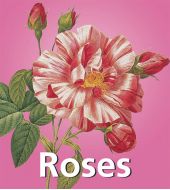 Mega Square Roses presents the large number of different species of this unique flower, which is charged with so many feelings and imbued with powerful cultural significance. Because of the rose’s botanical as well as artistic value, this book features a popular subject for art lovers as well as for people who enjoy the beauty and versatility of flowers. Each of the colourful and detailed illustrations is completed with the aid of valuable scientific information. ... Далее
Mega Square Roses presents the large number of different species of this unique flower, which is charged with so many feelings and imbued with powerful cultural significance. Because of the rose’s botanical as well as artistic value, this book features a popular subject for art lovers as well as for people who enjoy the beauty and versatility of flowers. Each of the colourful and detailed illustrations is completed with the aid of valuable scientific information. ... Далее -
30.
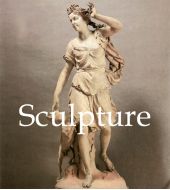 Mega Square Sculpture spans over 23,000 years and over 120 examples of the most beautiful sculptures in the world: from prehistoric art and Egyptian statues to the works of Michelangelo, Henry Moore and Niki de Saint-Phalle. It illuminates the wide variety of materials used and the evolution of styles over centuries, as well as the peculiarities of the most important sculptors. ... Далее
Mega Square Sculpture spans over 23,000 years and over 120 examples of the most beautiful sculptures in the world: from prehistoric art and Egyptian statues to the works of Michelangelo, Henry Moore and Niki de Saint-Phalle. It illuminates the wide variety of materials used and the evolution of styles over centuries, as well as the peculiarities of the most important sculptors. ... Далее -
31.
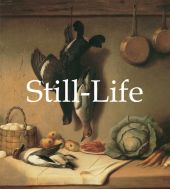 Cézanne transformed a teacup into something alive, raising still-life to the point that it ceased to be inanimate. Wassily Kandinsky said about the French artist: “He painted these things as human beings because he was endowed with the gift of divining the inner life in everything.” In addition to those of Cézanne, this book is devoted to still-life paintings by artists such as Van Gogh, Matisse, Chardin and Picasso. ... Далее
Cézanne transformed a teacup into something alive, raising still-life to the point that it ceased to be inanimate. Wassily Kandinsky said about the French artist: “He painted these things as human beings because he was endowed with the gift of divining the inner life in everything.” In addition to those of Cézanne, this book is devoted to still-life paintings by artists such as Van Gogh, Matisse, Chardin and Picasso. ... Далее -
32.
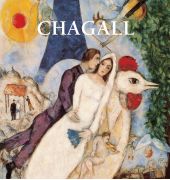 Marc Chagall was born into a strict Jewish family for whom the ban on representations of the human figure had the weight of dogma. A failure in the entrance examination for the Stieglitz School did not stop Chagall from later joining that famous school founded by the Imperial Society for the Encouragement of the Arts and directed by Nicholas Roerich. Chagall moved to Paris in 1910. The city was his “second Vitebsk”. At first, isolated in the little room on the Impasse du Maine at La Ruche, Chagall soon found numerous compatriots also attracted by the prestige of Paris: Lipchitz, Zadkine, Archipenko and Soutine, all of whom were to maintain the “smell” of his native land. From his very arrival Chagall wanted to “discover everything”. And to his dazzled eyes painting did indeed reveal itself. Even the most attentive and partial observer is at times unable to distinguish the “Parisian”, Chagall from the “Vitebskian”. The artist was not full of contradictions, nor was he a split personality, but he always remained different; he looked around and within himself and at the surrounding world, and he used his present thoughts and recollections. He had an utterly poetical mode of thought that enabled him to pursue such a complex course. Chagall was endowed with a sort of stylistic immunity: he enriched himself without destroying anything of his own inner structure. Admiring the works of others he studied them ingenuously, ridding himself of his youthful awkwardness, yet never losing his authenticity for a moment. At times Chagall seemed to look at the world through magic crystal – overloaded with artistic experimentation – of the Ecole de Paris. In such cases he would embark on a subtle and serious play with the various discoveries of the turn of the century and turned his prophetic gaze like that of a biblical youth, to look at himself ironically and thoughtfully in the mirror. Naturally, it totally and uneclectically reflected the painterly discoveries of Cézanne, the delicate inspiration of Modigliani, and the complex surface rhythms recalling the experiments of the early Cubists (See-Portrait at the Easel, 1914). Despite the analyses which nowadays illuminate the painter’s Judaeo-Russian sources, inherited or borrowed but always sublime, and his formal relationships, there is always some share of mystery in Chagall’s art. The mystery perhaps lies in the very nature of his art, in which he uses his experiences and memories. Painting truly is life, and perhaps life is painting. ... Далее
Marc Chagall was born into a strict Jewish family for whom the ban on representations of the human figure had the weight of dogma. A failure in the entrance examination for the Stieglitz School did not stop Chagall from later joining that famous school founded by the Imperial Society for the Encouragement of the Arts and directed by Nicholas Roerich. Chagall moved to Paris in 1910. The city was his “second Vitebsk”. At first, isolated in the little room on the Impasse du Maine at La Ruche, Chagall soon found numerous compatriots also attracted by the prestige of Paris: Lipchitz, Zadkine, Archipenko and Soutine, all of whom were to maintain the “smell” of his native land. From his very arrival Chagall wanted to “discover everything”. And to his dazzled eyes painting did indeed reveal itself. Even the most attentive and partial observer is at times unable to distinguish the “Parisian”, Chagall from the “Vitebskian”. The artist was not full of contradictions, nor was he a split personality, but he always remained different; he looked around and within himself and at the surrounding world, and he used his present thoughts and recollections. He had an utterly poetical mode of thought that enabled him to pursue such a complex course. Chagall was endowed with a sort of stylistic immunity: he enriched himself without destroying anything of his own inner structure. Admiring the works of others he studied them ingenuously, ridding himself of his youthful awkwardness, yet never losing his authenticity for a moment. At times Chagall seemed to look at the world through magic crystal – overloaded with artistic experimentation – of the Ecole de Paris. In such cases he would embark on a subtle and serious play with the various discoveries of the turn of the century and turned his prophetic gaze like that of a biblical youth, to look at himself ironically and thoughtfully in the mirror. Naturally, it totally and uneclectically reflected the painterly discoveries of Cézanne, the delicate inspiration of Modigliani, and the complex surface rhythms recalling the experiments of the early Cubists (See-Portrait at the Easel, 1914). Despite the analyses which nowadays illuminate the painter’s Judaeo-Russian sources, inherited or borrowed but always sublime, and his formal relationships, there is always some share of mystery in Chagall’s art. The mystery perhaps lies in the very nature of his art, in which he uses his experiences and memories. Painting truly is life, and perhaps life is painting. ... Далее -
33.
 John Constable was the first English landscape painter to take no lessons from the Dutch. He is rather indebted to the landscapes of Rubens, but his real model was Gainsborough, whose landscapes, with great trees planted in well-balanced masses on land sloping upwards towards the frame, have a rhythm often found in Rubens. Constable’s originality does not lie in his choice of subjects, which frequently repeated themes beloved by Gainsborough. Nevertheless, Constable seems to belong to a new century; he ushered in a new era. The difference in his approach results both from technique and feeling. Excepting the French, Constable was the first landscape painter to consider as a primary and essential task the sketch made direct from nature at a single sitting; an idea which contains in essence the destinies of modern landscape, and perhaps of most modern painting. It is this momentary impression of all things which will be the soul of the future work. Working at leisure upon the large canvas, an artist’s aim is to enrich and complete the sketch while retaining its pristine freshness. These are the two processes to which Constable devoted himself, while discovering the exuberant abundance of life in the simplest of country places. He had the palette of a creative colourist and a technique of vivid hatchings heralding that of the French impressionists. He audaciously and frankly introduced green into painting, the green of lush meadows, the green of summer foliage, all the greens which, until then, painters had refused to see except through bluish, yellow, or more often brown spectacles. Of the great landscape painters who occupied so important a place in nineteenth-century art, Corot was probably the only one to escape the influence of Constable. All the others are more or less direct descendants of the master of East Bergholt. ... Далее
John Constable was the first English landscape painter to take no lessons from the Dutch. He is rather indebted to the landscapes of Rubens, but his real model was Gainsborough, whose landscapes, with great trees planted in well-balanced masses on land sloping upwards towards the frame, have a rhythm often found in Rubens. Constable’s originality does not lie in his choice of subjects, which frequently repeated themes beloved by Gainsborough. Nevertheless, Constable seems to belong to a new century; he ushered in a new era. The difference in his approach results both from technique and feeling. Excepting the French, Constable was the first landscape painter to consider as a primary and essential task the sketch made direct from nature at a single sitting; an idea which contains in essence the destinies of modern landscape, and perhaps of most modern painting. It is this momentary impression of all things which will be the soul of the future work. Working at leisure upon the large canvas, an artist’s aim is to enrich and complete the sketch while retaining its pristine freshness. These are the two processes to which Constable devoted himself, while discovering the exuberant abundance of life in the simplest of country places. He had the palette of a creative colourist and a technique of vivid hatchings heralding that of the French impressionists. He audaciously and frankly introduced green into painting, the green of lush meadows, the green of summer foliage, all the greens which, until then, painters had refused to see except through bluish, yellow, or more often brown spectacles. Of the great landscape painters who occupied so important a place in nineteenth-century art, Corot was probably the only one to escape the influence of Constable. All the others are more or less direct descendants of the master of East Bergholt. ... Далее -
34.
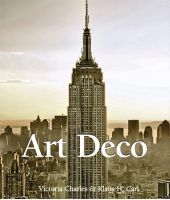 Art Deco style was established on the ashes of a disappeared world, the one from before the First World War, and on the foundation stone of a world yet to become, opened to the most undisclosed promises. Forgetting herself in the whirl of Jazz Age and the euphoria of the “Années Folles”, the Garçonne with her linear shape reflects the architectural style of Art Deco: to the rounded curves succeed the simple and plain androgynous straight line… Architecture, painting, furniture and sculpture, dissected by the author, proclaim the druthers for sharp lines and broken angles. Although ephemeral, this movement keeps on influencing contemporary design. ... Далее
Art Deco style was established on the ashes of a disappeared world, the one from before the First World War, and on the foundation stone of a world yet to become, opened to the most undisclosed promises. Forgetting herself in the whirl of Jazz Age and the euphoria of the “Années Folles”, the Garçonne with her linear shape reflects the architectural style of Art Deco: to the rounded curves succeed the simple and plain androgynous straight line… Architecture, painting, furniture and sculpture, dissected by the author, proclaim the druthers for sharp lines and broken angles. Although ephemeral, this movement keeps on influencing contemporary design. ... Далее -
35.
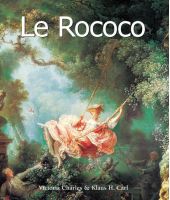 En associant le mot rocaille, référence aux formes alambiquées des coquillages, à l’italien baroco, les Français donnèrent naissance au terme de « rococo ». Apparu au début du XVIIIe siècle, il s’étendit rapidement à l’ensemble de l’Europe. Extravagant et aérien, le Rococo répondait parfaitement à la désinvolture de l’aristocratie d’alors. Dans bien des aspects, cet art s’apparenta à son prédécesseur baroque, ce qui lui valut parfois le qualificatif de Baroque tardif. Et, si des artistes tels Tiepolo, Boucher ou Reynolds portèrent le Rococo à son apogée, il fut souvent condamné pour sa superficialité. Dans la seconde moitié du XVIIIe siècle, le Rococo entama son déclin. À la fin du siècle, face à l’avènement du Néoclassicisme, il fut plongé dans l’obscurité et il fallut attendre près d’un siècle pour que les historiens de l’art lui rendent, à nouveau, l’éclat de son âge d’or, que nous font redécouvrir ici Klaus H. Carl et Victoria Charles. ... Далее
En associant le mot rocaille, référence aux formes alambiquées des coquillages, à l’italien baroco, les Français donnèrent naissance au terme de « rococo ». Apparu au début du XVIIIe siècle, il s’étendit rapidement à l’ensemble de l’Europe. Extravagant et aérien, le Rococo répondait parfaitement à la désinvolture de l’aristocratie d’alors. Dans bien des aspects, cet art s’apparenta à son prédécesseur baroque, ce qui lui valut parfois le qualificatif de Baroque tardif. Et, si des artistes tels Tiepolo, Boucher ou Reynolds portèrent le Rococo à son apogée, il fut souvent condamné pour sa superficialité. Dans la seconde moitié du XVIIIe siècle, le Rococo entama son déclin. À la fin du siècle, face à l’avènement du Néoclassicisme, il fut plongé dans l’obscurité et il fallut attendre près d’un siècle pour que les historiens de l’art lui rendent, à nouveau, l’éclat de son âge d’or, que nous font redécouvrir ici Klaus H. Carl et Victoria Charles. ... Далее -
36.
 « À chaque âge son art, à chaque art sa liberté. » Voila la devise de la Sécession viennoise, mouvement dissident (1892-1906), qui fut porté par une vingtaine d’artistes éclairés luttant contre l’académisme conservateur pétrifiant Vienne et tout l’empire austro-hongrois. Courant de l’Art nouveau, la Sécession, officiellement fondée en 1897 par Klimt, Moll et Hoffmann, ne fut pas une révolution artistique anonyme parmi tant d’autres. Contestataires par essence, les sécessionnistes viennois ont peint ce qu’on ne devait pas peindre : les frôlements, les baisers, les violences. Se définissant comme un art total sans contrainte politique ni commerciale, l’effervescence de ce mouvement toucha tous les artisans, architectes, et décorateurs. Dans cet ouvrage, peinture, sculpture et architecture sont confrontées par l’auteur pour souligner la richesse et la diversité du mouvement viennois. ... Далее
« À chaque âge son art, à chaque art sa liberté. » Voila la devise de la Sécession viennoise, mouvement dissident (1892-1906), qui fut porté par une vingtaine d’artistes éclairés luttant contre l’académisme conservateur pétrifiant Vienne et tout l’empire austro-hongrois. Courant de l’Art nouveau, la Sécession, officiellement fondée en 1897 par Klimt, Moll et Hoffmann, ne fut pas une révolution artistique anonyme parmi tant d’autres. Contestataires par essence, les sécessionnistes viennois ont peint ce qu’on ne devait pas peindre : les frôlements, les baisers, les violences. Se définissant comme un art total sans contrainte politique ni commerciale, l’effervescence de ce mouvement toucha tous les artisans, architectes, et décorateurs. Dans cet ouvrage, peinture, sculpture et architecture sont confrontées par l’auteur pour souligner la richesse et la diversité du mouvement viennois. ... Далее -
37.
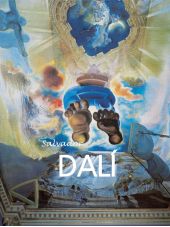 Dalí, Salvador (Figueras, 1904 – Torre-Galatea, 1989) Peintre, artiste, créateur d’objets, écrivain et cinéaste, il est connu du public comme un des représentants majeur du surréalisme. Buñuel, Lorca, Picasso, Breton… : ces rencontres constituent autant d’étapes dans la carrière de Dalí. Réalisé avec Buñuel, le film Un chien andalou marque son entrée officielle dans le groupe des surréalistes parisiens où il rencontre Gala, la femme d’Éluard, qui deviendra sa compagne et son inspiratrice. Entre cet artiste éclectique et provocateur et les surréalistes parisiens, les relations se tendront progressivement à partir de 1934 jusqu’à la rupture avec Breton, cinq ans plus tard. Pourtant, l’art de Dalí relève bien de l’esthétique surréaliste dont il a conservé le goût pour le dépaysement, l’humour et l’imagination. ... Далее
Dalí, Salvador (Figueras, 1904 – Torre-Galatea, 1989) Peintre, artiste, créateur d’objets, écrivain et cinéaste, il est connu du public comme un des représentants majeur du surréalisme. Buñuel, Lorca, Picasso, Breton… : ces rencontres constituent autant d’étapes dans la carrière de Dalí. Réalisé avec Buñuel, le film Un chien andalou marque son entrée officielle dans le groupe des surréalistes parisiens où il rencontre Gala, la femme d’Éluard, qui deviendra sa compagne et son inspiratrice. Entre cet artiste éclectique et provocateur et les surréalistes parisiens, les relations se tendront progressivement à partir de 1934 jusqu’à la rupture avec Breton, cinq ans plus tard. Pourtant, l’art de Dalí relève bien de l’esthétique surréaliste dont il a conservé le goût pour le dépaysement, l’humour et l’imagination. ... Далее -
38.
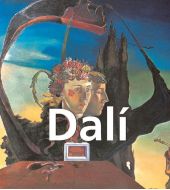 Dalí, Salvador (Figueras, 1904 – Torre-Galatea, 1989) Peintre, artiste, créateur d’objets, écrivain et cinéaste, il est connu du public comme un des représentants majeur du surréalisme. Buñuel, Lorca, Picasso, Breton… : ces rencontres constituent autant d’étapes dans la carrière de Dalí. Réalisé avec Buñuel, le film Un chien andalou marque son entrée officielle dans le groupe des surréalistes parisiens où il rencontre Gala, la femme d’Éluard, qui deviendra sa compagne et son inspiratrice. Entre cet artiste éclectique et provocateur et les surréalistes parisiens, les relations se tendront progressivement à partir de 1934 jusqu’à la rupture avec Breton, cinq ans plus tard. Pourtant, l’art de Dalí relève bien de l’esthétique surréaliste dont il a conservé le goût pour le dépaysement, l’humour et l’imagination. ... Далее
Dalí, Salvador (Figueras, 1904 – Torre-Galatea, 1989) Peintre, artiste, créateur d’objets, écrivain et cinéaste, il est connu du public comme un des représentants majeur du surréalisme. Buñuel, Lorca, Picasso, Breton… : ces rencontres constituent autant d’étapes dans la carrière de Dalí. Réalisé avec Buñuel, le film Un chien andalou marque son entrée officielle dans le groupe des surréalistes parisiens où il rencontre Gala, la femme d’Éluard, qui deviendra sa compagne et son inspiratrice. Entre cet artiste éclectique et provocateur et les surréalistes parisiens, les relations se tendront progressivement à partir de 1934 jusqu’à la rupture avec Breton, cinq ans plus tard. Pourtant, l’art de Dalí relève bien de l’esthétique surréaliste dont il a conservé le goût pour le dépaysement, l’humour et l’imagination. ... Далее -
39.
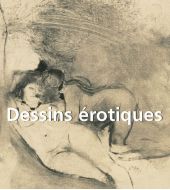 De Michel-Ange à Rubens, de Degas à Picasso, l’érotisme a toujours attiré les grands maîtres de l’art, qui créèrent des œuvres parmi les plus captivantes. Malgré et peut-être même à cause de cette attirance, les œuvres d’art érotiques ont provoqué des controverses dès qu’elles ont existé, devant se défendre face aux accusations de pornographie. Ce livre guide les lecteurs des premières représentations de scènes érotiques datant des XVIe et XVIIe siècles aux incontournables symboles contemporains, tels que les esquisses du carnet de dessin de Picasso, qui indiquent une grande variété de styles et de techniques. ... Далее
De Michel-Ange à Rubens, de Degas à Picasso, l’érotisme a toujours attiré les grands maîtres de l’art, qui créèrent des œuvres parmi les plus captivantes. Malgré et peut-être même à cause de cette attirance, les œuvres d’art érotiques ont provoqué des controverses dès qu’elles ont existé, devant se défendre face aux accusations de pornographie. Ce livre guide les lecteurs des premières représentations de scènes érotiques datant des XVIe et XVIIe siècles aux incontournables symboles contemporains, tels que les esquisses du carnet de dessin de Picasso, qui indiquent une grande variété de styles et de techniques. ... Далее -
40.
 Avant le XVIIe siècle, l’école française n’occupait qu’une modeste place dans la peinture européenne. C’est seulement à partir de cette date que les peintres anonymes cédèrent la place à toute une pléiade de noms devenus célèbres : Nicolas Poussin, Georges de la Tour, Claude Le Lorrain, les frères Le Nain…Aux XVIIIe et XIXe siècles, la peinture française est à son apogée. Les musées du monde entier conservent aujourd’hui les toiles de Watteau, David, Ingres, Delacroix, Rousseau, Monet, Renoir. Cet ouvrage offre à l’amateur d’art, pour chaque genre, (natures mortes, portraits, paysages…) une étude complète et illustrée sur l’évolution de la peinture française pendant cinq siècles. ... Далее
Avant le XVIIe siècle, l’école française n’occupait qu’une modeste place dans la peinture européenne. C’est seulement à partir de cette date que les peintres anonymes cédèrent la place à toute une pléiade de noms devenus célèbres : Nicolas Poussin, Georges de la Tour, Claude Le Lorrain, les frères Le Nain…Aux XVIIIe et XIXe siècles, la peinture française est à son apogée. Les musées du monde entier conservent aujourd’hui les toiles de Watteau, David, Ingres, Delacroix, Rousseau, Monet, Renoir. Cet ouvrage offre à l’amateur d’art, pour chaque genre, (natures mortes, portraits, paysages…) une étude complète et illustrée sur l’évolution de la peinture française pendant cinq siècles. ... Далее -
41.
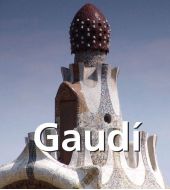 Architecte et designer barcelonais, Antoni Gaudí (1852-1926) occupe une large place dans l’histoire de l’art espagnol. L’usage de la couleur, l’emploi de différents matériaux et l’introduction du mouvement dans ses constructions furent une innovation dans le domaine de l’architecture. Il laissa dans ses carnets de nombreuses réflexions à propos de son art telles que : « La couleur dans l’architecture doit être intense, logique et fertile. » Appuyée par de nombreuses photographies et de nombreux détails architecturaux, l’étude que mène l’auteur, Jeremy Roe, permet une approche du contexte de l’art barcelonais et introduit une minutieuse étude critique des constructions, objets et écrits du plus célèbre architecte barcelonais. ... Далее
Architecte et designer barcelonais, Antoni Gaudí (1852-1926) occupe une large place dans l’histoire de l’art espagnol. L’usage de la couleur, l’emploi de différents matériaux et l’introduction du mouvement dans ses constructions furent une innovation dans le domaine de l’architecture. Il laissa dans ses carnets de nombreuses réflexions à propos de son art telles que : « La couleur dans l’architecture doit être intense, logique et fertile. » Appuyée par de nombreuses photographies et de nombreux détails architecturaux, l’étude que mène l’auteur, Jeremy Roe, permet une approche du contexte de l’art barcelonais et introduit une minutieuse étude critique des constructions, objets et écrits du plus célèbre architecte barcelonais. ... Далее -
42.
 Pablo Picasso (Málaga, 1881 – Mougins, 1973) Picasso naquit en Espagne et l’on dit même qu’il commença à dessiner avant de savoir parler. Enfant, il fut nstinctivement attiré par les instruments de l’artiste. Il pouvait passer des heures de joyeuse concentration à dessiner des spirales pourvues d’un sens qu’il était seul à connaître. Fuyant les jeux d’enfants, il traça ses premiers tableaux dans le sable. Cette manière précoce de s’exprimer contenait la promesse d’un rare talent. Nous nous devons de mentionner Málaga, car c’est là, le 25 Octobre 1881, que Pablo Ruiz Picasso naquit et qu’il passa les dix premières années de sa vie. Le père de Picasso était lui-même peintre et professeur à l’école des Beaux-Arts de la ville. Picasso apprit auprès de lui les rudiments de la peinture académique. Puis il poursuivit ses études à l’académie des Arts de Madrid mais n’obtint jamais son diplôme. Picasso, qui n’avait pas encore 18 ans, avait atteint le point culminant de sa rébellion, répudiant l’esthétique anémique de l’académisme et le prosaïsme du réalisme. Tout naturellement, il se joignit à ceux qui se qualifiaient de modernistes, c’est à dire, les artistes et les écrivains non-conformistes, ceux que Sabartés appelait «l’élite de la pensée catalane » et qui se retrouvaient au café des artistes Els Quatre Gats. Durant les années 1899 et 1900, les seuls sujets dignes d’être peints aux yeux de Picasso étaient ceux qui reflétaient la vérité ultime : le caractère éphémère de la vie humaine et l’inéluctabilité de la mort. Ses premières oeuvres, cataloguées sous le nom de «période bleue » (1901-1904), consistent en peintures exécutées dans des teintes bleues, inspirées par un voyage à travers l’Espagne et la mort de son ami Casagemas. Même si Picasso lui-même insistait fréquemment sur la nature intérieure et subjective de la période bleue, sa genèse et, en particulier, ce monochromatisme bleu, furent des années durant, expliqués comme les résultats de diverses influences esthétiques. Entre 1905 et 1907, Picasso entra dans une nouvelle phase, appelée la «période rose » caractérisée par un style plus enjoué, dominé par l’orange et le rose. A Gosal, au cours de l’été 1906, le nu féminin prit une importance considérable pour Picasso – une nudité dépersonnalisée, aborigène, simple, comme le concept de «femme ». La dimension que les nus féminins allaient prendre chez Picasso dans les mois suivants, précisément durant l’hiver et le printemps 1907, s’imposa lorsqu’il élabora la composition de son impressionnante peinture connue sous le titre des Demoiselles d’Avignon. S’il est vrai que l’art africain est habituellement considéré comme le facteur déterminant du développement d’une sthétique classique en 1907, les leçons de Cézanne sont quand à elles perçues comme la pierre angulaire de cette nouvelle progression. Ceci est lié tout d’abord à une conception spatiale de la toile comme une entité composée, soumise à un certain système de construction. Georges Braque, dont Picasso devint l’ami à l’automne 1908 et avec lequel il mena le cubisme à son apogée en six ans, fut surpris pas les similitudes entre les expériences picturales de Picasso et les siennes. Il expliquait que le «principal objectif du Cubisme était la matérialisation de l’espace. A l’issue de sa période cubiste, dans les années 1920, Picasso revint à un style plus figuratif et se rapprocha du ouvement surréaliste. Il représenta des corps difformes et monstrueux mais d’une manière très personnelle. Après le bombardement de Guernica en 1937, Picasso réalisa l’une de ses oeuvres les plus célèbres, symbole des horreurs de la guerre. Dans les années 1960, son art changea à nouveau et Picasso commença à regarder de plus près les grands maîtres, s’inspirant dans ses tableaux des oeuvres de Velázquez, Poussin, Goya, Manet, Courbet, Delacroix. Les dernières oeuvres de Picasso étaient un mélange de styles, devenant plus colorées, expressives et optimistes. Picasso mourut en 1973, dans sa villa de Mougins. Le symboliste russe Georgy Chulkov écrivit : «La mort de Picasso est une chose tragique. Pourtant, combien ceux qui croient pouvoir imiter Picasso ou apprendre de lui sont en vérité aveugles et naïfs. Apprendre quoi ? Ces formes ne correspondent à aucune émotion existant hors de l’Enfer. Mais être en Enfer signifie anticiper la mort, et les Cubistes ne s’intéressent guère à ce genre de connaissance infinie. » ... Далее
Pablo Picasso (Málaga, 1881 – Mougins, 1973) Picasso naquit en Espagne et l’on dit même qu’il commença à dessiner avant de savoir parler. Enfant, il fut nstinctivement attiré par les instruments de l’artiste. Il pouvait passer des heures de joyeuse concentration à dessiner des spirales pourvues d’un sens qu’il était seul à connaître. Fuyant les jeux d’enfants, il traça ses premiers tableaux dans le sable. Cette manière précoce de s’exprimer contenait la promesse d’un rare talent. Nous nous devons de mentionner Málaga, car c’est là, le 25 Octobre 1881, que Pablo Ruiz Picasso naquit et qu’il passa les dix premières années de sa vie. Le père de Picasso était lui-même peintre et professeur à l’école des Beaux-Arts de la ville. Picasso apprit auprès de lui les rudiments de la peinture académique. Puis il poursuivit ses études à l’académie des Arts de Madrid mais n’obtint jamais son diplôme. Picasso, qui n’avait pas encore 18 ans, avait atteint le point culminant de sa rébellion, répudiant l’esthétique anémique de l’académisme et le prosaïsme du réalisme. Tout naturellement, il se joignit à ceux qui se qualifiaient de modernistes, c’est à dire, les artistes et les écrivains non-conformistes, ceux que Sabartés appelait «l’élite de la pensée catalane » et qui se retrouvaient au café des artistes Els Quatre Gats. Durant les années 1899 et 1900, les seuls sujets dignes d’être peints aux yeux de Picasso étaient ceux qui reflétaient la vérité ultime : le caractère éphémère de la vie humaine et l’inéluctabilité de la mort. Ses premières oeuvres, cataloguées sous le nom de «période bleue » (1901-1904), consistent en peintures exécutées dans des teintes bleues, inspirées par un voyage à travers l’Espagne et la mort de son ami Casagemas. Même si Picasso lui-même insistait fréquemment sur la nature intérieure et subjective de la période bleue, sa genèse et, en particulier, ce monochromatisme bleu, furent des années durant, expliqués comme les résultats de diverses influences esthétiques. Entre 1905 et 1907, Picasso entra dans une nouvelle phase, appelée la «période rose » caractérisée par un style plus enjoué, dominé par l’orange et le rose. A Gosal, au cours de l’été 1906, le nu féminin prit une importance considérable pour Picasso – une nudité dépersonnalisée, aborigène, simple, comme le concept de «femme ». La dimension que les nus féminins allaient prendre chez Picasso dans les mois suivants, précisément durant l’hiver et le printemps 1907, s’imposa lorsqu’il élabora la composition de son impressionnante peinture connue sous le titre des Demoiselles d’Avignon. S’il est vrai que l’art africain est habituellement considéré comme le facteur déterminant du développement d’une sthétique classique en 1907, les leçons de Cézanne sont quand à elles perçues comme la pierre angulaire de cette nouvelle progression. Ceci est lié tout d’abord à une conception spatiale de la toile comme une entité composée, soumise à un certain système de construction. Georges Braque, dont Picasso devint l’ami à l’automne 1908 et avec lequel il mena le cubisme à son apogée en six ans, fut surpris pas les similitudes entre les expériences picturales de Picasso et les siennes. Il expliquait que le «principal objectif du Cubisme était la matérialisation de l’espace. A l’issue de sa période cubiste, dans les années 1920, Picasso revint à un style plus figuratif et se rapprocha du ouvement surréaliste. Il représenta des corps difformes et monstrueux mais d’une manière très personnelle. Après le bombardement de Guernica en 1937, Picasso réalisa l’une de ses oeuvres les plus célèbres, symbole des horreurs de la guerre. Dans les années 1960, son art changea à nouveau et Picasso commença à regarder de plus près les grands maîtres, s’inspirant dans ses tableaux des oeuvres de Velázquez, Poussin, Goya, Manet, Courbet, Delacroix. Les dernières oeuvres de Picasso étaient un mélange de styles, devenant plus colorées, expressives et optimistes. Picasso mourut en 1973, dans sa villa de Mougins. Le symboliste russe Georgy Chulkov écrivit : «La mort de Picasso est une chose tragique. Pourtant, combien ceux qui croient pouvoir imiter Picasso ou apprendre de lui sont en vérité aveugles et naïfs. Apprendre quoi ? Ces formes ne correspondent à aucune émotion existant hors de l’Enfer. Mais être en Enfer signifie anticiper la mort, et les Cubistes ne s’intéressent guère à ce genre de connaissance infinie. » ... Далее -
43.
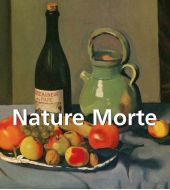 Cézanne vécut grâce à une tasse de thé, ou plutôt c’est dans une tasse de thé qu’il réalisa qu’il y avait quelque chose de vivant. Il sut élever la représentation d’une nature morte à un tel niveau qu’elle n’en était plus inanimée. Vassily Kandinsky disait à propos de l’artiste français : « Il peignait ces choses comme des êtres humains parce qu’il était doté de la capacité à deviner la vie intérieure de celles-ci ». En plus de Cézanne, ce livre se consacre aux natures mortes peintes par d’autres grands artistes tels que Van Gogh, Matisse, Chardin, et Picasso. ... Далее
Cézanne vécut grâce à une tasse de thé, ou plutôt c’est dans une tasse de thé qu’il réalisa qu’il y avait quelque chose de vivant. Il sut élever la représentation d’une nature morte à un tel niveau qu’elle n’en était plus inanimée. Vassily Kandinsky disait à propos de l’artiste français : « Il peignait ces choses comme des êtres humains parce qu’il était doté de la capacité à deviner la vie intérieure de celles-ci ». En plus de Cézanne, ce livre se consacre aux natures mortes peintes par d’autres grands artistes tels que Van Gogh, Matisse, Chardin, et Picasso. ... Далее -
44.
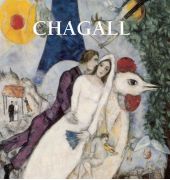 Marc Chagall (Vitebsk, 1887 – Saint-Paul-de-Vence, 1985) Chagall est né dans une famille juive de stricte obédience pour laquelle l’interdit de représentation de la figure humaine avait valeur de dogme. Après un échec à l’examen d’entrée à l’école des Arts et Métiers du baron Stieglitz, Chagall intègre plus tard celle fondée par la Société impériale d’encouragement des Beaux-Arts dirigée par Nicolas Roerich. En 1910, il s’installe à Paris qui sera son «second Vitebsk ». Chagall retrouve à la Ruche de nombreux compatriotes attirés, eux aussi, par le prestige de Paris. Lipchitz, Zadkine, Archipenko, Soutine qui maintiendront, autour du jeune peintre, le parfum de sa terre natale. Les auteurs des premières études sur Chagall relevaient déjà que Paris avait influencé sa manière picturale, avait apporté une nervosité frêle et une netteté aux lignes qui répondent avec assurance et justesse à la couleur et pour beaucoup, la commandent. L’observateur le plus attentif, le plus passionné, se révèle parfois incapable de distinguer le Chagall «de Paris » du Chagall «de Vitebsk ». L’artiste n’est pas contradictoire ni «dédoublé », mais il demeurait constamment ouverts, regardant en lui et autour de lui, considérant le monde environnant, les idées de son époque, les souvenirs du passé. Chagall est doué d’une sorte «d’immunité stylistique », il s’enrichit sans rien détruire de sa propre structure. Il s’enthousiasme, apprend en toute ingénuité, se défait de la maladresse juvénile, mais sans perdre son «authenticité ». Parfois, c’est comme s’il regardait le monde à travers le prisme magique de l’école de Paris. Alors il engage un jeu tout en finesse et en sérieux avec les découvertes du tournant du siècle, alors l’adolescent se considère, ironique et songeur, dans un miroir où s’unissent tout naturellement les acquis picturaux de Cézanne, la spiritualisation fragile de Modigliani, les rythmes complexes des plans qui rappellent les expériences des premiers cubistes (Autoportrait devant le chevalet, 1914). Cependant, au-delà des analyses qui, aujourd’hui, éclairent les sources judéo-russes du peintre, les filiations formelles héritées ou empruntées, mais toujours sublimées, une part de mystère demeure dans l’art de Chagall. Ce mystère tient peut-être à la nature même de cet art qui puise dans le souvenir. ... Далее
Marc Chagall (Vitebsk, 1887 – Saint-Paul-de-Vence, 1985) Chagall est né dans une famille juive de stricte obédience pour laquelle l’interdit de représentation de la figure humaine avait valeur de dogme. Après un échec à l’examen d’entrée à l’école des Arts et Métiers du baron Stieglitz, Chagall intègre plus tard celle fondée par la Société impériale d’encouragement des Beaux-Arts dirigée par Nicolas Roerich. En 1910, il s’installe à Paris qui sera son «second Vitebsk ». Chagall retrouve à la Ruche de nombreux compatriotes attirés, eux aussi, par le prestige de Paris. Lipchitz, Zadkine, Archipenko, Soutine qui maintiendront, autour du jeune peintre, le parfum de sa terre natale. Les auteurs des premières études sur Chagall relevaient déjà que Paris avait influencé sa manière picturale, avait apporté une nervosité frêle et une netteté aux lignes qui répondent avec assurance et justesse à la couleur et pour beaucoup, la commandent. L’observateur le plus attentif, le plus passionné, se révèle parfois incapable de distinguer le Chagall «de Paris » du Chagall «de Vitebsk ». L’artiste n’est pas contradictoire ni «dédoublé », mais il demeurait constamment ouverts, regardant en lui et autour de lui, considérant le monde environnant, les idées de son époque, les souvenirs du passé. Chagall est doué d’une sorte «d’immunité stylistique », il s’enrichit sans rien détruire de sa propre structure. Il s’enthousiasme, apprend en toute ingénuité, se défait de la maladresse juvénile, mais sans perdre son «authenticité ». Parfois, c’est comme s’il regardait le monde à travers le prisme magique de l’école de Paris. Alors il engage un jeu tout en finesse et en sérieux avec les découvertes du tournant du siècle, alors l’adolescent se considère, ironique et songeur, dans un miroir où s’unissent tout naturellement les acquis picturaux de Cézanne, la spiritualisation fragile de Modigliani, les rythmes complexes des plans qui rappellent les expériences des premiers cubistes (Autoportrait devant le chevalet, 1914). Cependant, au-delà des analyses qui, aujourd’hui, éclairent les sources judéo-russes du peintre, les filiations formelles héritées ou empruntées, mais toujours sublimées, une part de mystère demeure dans l’art de Chagall. Ce mystère tient peut-être à la nature même de cet art qui puise dans le souvenir. ... Далее -
45.
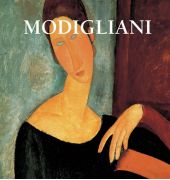 Amedeo Modigliani (Livourne, 1884 – Paris, 1920) Amedeo Modigliani naquit en Italie en 1884 et mourut à Paris à l’âge de trente-cinq ans. Très tôt il s’intéressa à l’étude du nu et à la notion classique de la beauté idéale. En 1900-1901 il visita Naples, Capri, Amalfi et Rome, puis Florence et Venise, et étudia tout d’abord des chefs-d’oeuvre de la Renaissance. Il fut impressionné par les artistes du Trecento (XIVe siècle), parmi lesquels Simone Martini (vers 1284-1344), dont les silhouettes longues et serpentines, représentées avec une grande délicatesse de composition et de couleur et imprégnées d’une tendre tristesse, annonçaient la sinuosité et la luminosité manifestes dans l’oeuvre de Sandro Botticelli (vers 1445-1510). Ces deux artistes influencèrent clairement Modigliani, qui utilisa la pose de la Vénus de Botticelli dans La Naissance de Vénus pour son Nu debout (Vénus) (1917) et sa Femme rousse en chemise (1918), ainsi qu’une inversion de cette pose dans son Nu assis au collier (1917). A la dette de Modigliani à l’art du passé (silhouettes des Cyclades de la Grèce antique principalement) fut ajoutée l’influence de l’art d’autres cultures (africaines par exemple) et du cubisme. Les cercles et courbes équilibrés, bien que voluptueux, y sont soigneusement tracés et non naturalistes. On les retrouve dans l’ondulation des lignes et la géométrie des nus de Modigliani, tels le Nu Allongé. Les dessins des Caryatides lui permirent d’explorer le potentiel ornemental de poses qu’il eut été incapable de traduire en sculpture. Pour ses séries de nus, Modigliani emprunta les compositions de nombreux nus célèbres du grand art, dont ceux de Giorgione (vers 1477-1510), Titien (vers 1488-1576), Ingres (1780-1867), et Velázquez (1599-1660), en faisant abstraction toutefois de leur romantisme et de la lourdeur du décor. Modigliani appréciait également l’oeuvre de Goya (1746-1828) et d’Edouard Manet (1832-1883), qui avaient fait scandale en peignant des femmes de la vie réelle nues, rompant ainsi les conventions artistiques voulant que les nus soient placés dans des cadres mythologiques, allégoriques ou historiques. ... Далее
Amedeo Modigliani (Livourne, 1884 – Paris, 1920) Amedeo Modigliani naquit en Italie en 1884 et mourut à Paris à l’âge de trente-cinq ans. Très tôt il s’intéressa à l’étude du nu et à la notion classique de la beauté idéale. En 1900-1901 il visita Naples, Capri, Amalfi et Rome, puis Florence et Venise, et étudia tout d’abord des chefs-d’oeuvre de la Renaissance. Il fut impressionné par les artistes du Trecento (XIVe siècle), parmi lesquels Simone Martini (vers 1284-1344), dont les silhouettes longues et serpentines, représentées avec une grande délicatesse de composition et de couleur et imprégnées d’une tendre tristesse, annonçaient la sinuosité et la luminosité manifestes dans l’oeuvre de Sandro Botticelli (vers 1445-1510). Ces deux artistes influencèrent clairement Modigliani, qui utilisa la pose de la Vénus de Botticelli dans La Naissance de Vénus pour son Nu debout (Vénus) (1917) et sa Femme rousse en chemise (1918), ainsi qu’une inversion de cette pose dans son Nu assis au collier (1917). A la dette de Modigliani à l’art du passé (silhouettes des Cyclades de la Grèce antique principalement) fut ajoutée l’influence de l’art d’autres cultures (africaines par exemple) et du cubisme. Les cercles et courbes équilibrés, bien que voluptueux, y sont soigneusement tracés et non naturalistes. On les retrouve dans l’ondulation des lignes et la géométrie des nus de Modigliani, tels le Nu Allongé. Les dessins des Caryatides lui permirent d’explorer le potentiel ornemental de poses qu’il eut été incapable de traduire en sculpture. Pour ses séries de nus, Modigliani emprunta les compositions de nombreux nus célèbres du grand art, dont ceux de Giorgione (vers 1477-1510), Titien (vers 1488-1576), Ingres (1780-1867), et Velázquez (1599-1660), en faisant abstraction toutefois de leur romantisme et de la lourdeur du décor. Modigliani appréciait également l’oeuvre de Goya (1746-1828) et d’Edouard Manet (1832-1883), qui avaient fait scandale en peignant des femmes de la vie réelle nues, rompant ainsi les conventions artistiques voulant que les nus soient placés dans des cadres mythologiques, allégoriques ou historiques. ... Далее -
46.
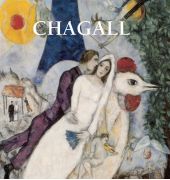 Marc Chagall (Vitebsk, 1887 – Saint-Paul-de-Vence, 1985) Chagall est né dans une famille juive de stricte obédience pour laquelle l’interdit de représentation de la figure humaine avait valeur de dogme. Après un échec à l’examen d’entrée à l’école des Arts et Métiers du baron Stieglitz, Chagall intègre plus tard celle fondée par la Société impériale d’encouragement des Beaux-Arts dirigée par Nicolas Roerich. En 1910, il s’installe à Paris qui sera son «second Vitebsk ». Chagall retrouve à la Ruche de nombreux compatriotes attirés, eux aussi, par le prestige de Paris. Lipchitz, Zadkine, Archipenko, Soutine qui maintiendront, autour du jeune peintre, le parfum de sa terre natale. Les auteurs des premières études sur Chagall relevaient déjà que Paris avait influencé sa manière picturale, avait apporté une nervosité frêle et une netteté aux lignes qui répondent avec assurance et justesse à la couleur et pour beaucoup, la commandent. L’observateur le plus attentif, le plus passionné, se révèle parfois incapable de distinguer le Chagall «de Paris » du Chagall «de Vitebsk ». L’artiste n’est pas contradictoire ni «dédoublé », mais il demeurait constamment ouverts, regardant en lui et autour de lui, considérant le monde environnant, les idées de son époque, les souvenirs du passé. Chagall est doué d’une sorte «d’immunité stylistique », il s’enrichit sans rien détruire de sa propre structure. Il s’enthousiasme, apprend en toute ingénuité, se défait de la maladresse juvénile, mais sans perdre son «authenticité ». Parfois, c’est comme s’il regardait le monde à travers le prisme magique de l’école de Paris. Alors il engage un jeu tout en finesse et en sérieux avec les découvertes du tournant du siècle, alors l’adolescent se considère, ironique et songeur, dans un miroir où s’unissent tout naturellement les acquis picturaux de Cézanne, la spiritualisation fragile de Modigliani, les rythmes complexes des plans qui rappellent les expériences des premiers cubistes (Autoportrait devant le chevalet, 1914). Cependant, au-delà des analyses qui, aujourd’hui, éclairent les sources judéo-russes du peintre, les filiations formelles héritées ou empruntées, mais toujours sublimées, une part de mystère demeure dans l’art de Chagall. Ce mystère tient peut-être à la nature même de cet art qui puise dans le souvenir. ... Далее
Marc Chagall (Vitebsk, 1887 – Saint-Paul-de-Vence, 1985) Chagall est né dans une famille juive de stricte obédience pour laquelle l’interdit de représentation de la figure humaine avait valeur de dogme. Après un échec à l’examen d’entrée à l’école des Arts et Métiers du baron Stieglitz, Chagall intègre plus tard celle fondée par la Société impériale d’encouragement des Beaux-Arts dirigée par Nicolas Roerich. En 1910, il s’installe à Paris qui sera son «second Vitebsk ». Chagall retrouve à la Ruche de nombreux compatriotes attirés, eux aussi, par le prestige de Paris. Lipchitz, Zadkine, Archipenko, Soutine qui maintiendront, autour du jeune peintre, le parfum de sa terre natale. Les auteurs des premières études sur Chagall relevaient déjà que Paris avait influencé sa manière picturale, avait apporté une nervosité frêle et une netteté aux lignes qui répondent avec assurance et justesse à la couleur et pour beaucoup, la commandent. L’observateur le plus attentif, le plus passionné, se révèle parfois incapable de distinguer le Chagall «de Paris » du Chagall «de Vitebsk ». L’artiste n’est pas contradictoire ni «dédoublé », mais il demeurait constamment ouverts, regardant en lui et autour de lui, considérant le monde environnant, les idées de son époque, les souvenirs du passé. Chagall est doué d’une sorte «d’immunité stylistique », il s’enrichit sans rien détruire de sa propre structure. Il s’enthousiasme, apprend en toute ingénuité, se défait de la maladresse juvénile, mais sans perdre son «authenticité ». Parfois, c’est comme s’il regardait le monde à travers le prisme magique de l’école de Paris. Alors il engage un jeu tout en finesse et en sérieux avec les découvertes du tournant du siècle, alors l’adolescent se considère, ironique et songeur, dans un miroir où s’unissent tout naturellement les acquis picturaux de Cézanne, la spiritualisation fragile de Modigliani, les rythmes complexes des plans qui rappellent les expériences des premiers cubistes (Autoportrait devant le chevalet, 1914). Cependant, au-delà des analyses qui, aujourd’hui, éclairent les sources judéo-russes du peintre, les filiations formelles héritées ou empruntées, mais toujours sublimées, une part de mystère demeure dans l’art de Chagall. Ce mystère tient peut-être à la nature même de cet art qui puise dans le souvenir. ... Далее -
47.
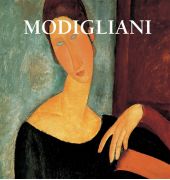 Amedeo Modigliani (Livourne, 1884 – Paris, 1920) Amedeo Modigliani naquit en Italie en 1884 et mourut à Paris à l’âge de trente-cinq ans. Très tôt il s’intéressa à l’étude du nu et à la notion classique de la beauté idéale. En 1900-1901 il visita Naples, Capri, Amalfi et Rome, puis Florence et Venise, et étudia tout d’abord des chefs-d’oeuvre de la Renaissance. Il fut impressionné par les artistes du Trecento (XIVe siècle), parmi lesquels Simone Martini (vers 1284-1344), dont les silhouettes longues et serpentines, représentées avec une grande délicatesse de composition et de couleur et imprégnées d’une tendre tristesse, annonçaient la sinuosité et la luminosité manifestes dans l’oeuvre de Sandro Botticelli (vers 1445-1510). Ces deux artistes influencèrent clairement Modigliani, qui utilisa la pose de la Vénus de Botticelli dans La Naissance de Vénus pour son Nu debout (Vénus) (1917) et sa Femme rousse en chemise (1918), ainsi qu’une inversion de cette pose dans son Nu assis au collier (1917). A la dette de Modigliani à l’art du passé (silhouettes des Cyclades de la Grèce antique principalement) fut ajoutée l’influence de l’art d’autres cultures (africaines par exemple) et du cubisme. Les cercles et courbes équilibrés, bien que voluptueux, y sont soigneusement tracés et non naturalistes. On les retrouve dans l’ondulation des lignes et la géométrie des nus de Modigliani, tels le Nu Allongé. Les dessins des Caryatides lui permirent d’explorer le potentiel ornemental de poses qu’il eut été incapable de traduire en sculpture. Pour ses séries de nus, Modigliani emprunta les compositions de nombreux nus célèbres du grand art, dont ceux de Giorgione (vers 1477-1510), Titien (vers 1488-1576), Ingres (1780-1867), et Velázquez (1599-1660), en faisant abstraction toutefois de leur romantisme et de la lourdeur du décor. Modigliani appréciait également l’oeuvre de Goya (1746-1828) et d’Edouard Manet (1832-1883), qui avaient fait scandale en peignant des femmes de la vie réelle nues, rompant ainsi les conventions artistiques voulant que les nus soient placés dans des cadres mythologiques, allégoriques ou historiques. ... Далее
Amedeo Modigliani (Livourne, 1884 – Paris, 1920) Amedeo Modigliani naquit en Italie en 1884 et mourut à Paris à l’âge de trente-cinq ans. Très tôt il s’intéressa à l’étude du nu et à la notion classique de la beauté idéale. En 1900-1901 il visita Naples, Capri, Amalfi et Rome, puis Florence et Venise, et étudia tout d’abord des chefs-d’oeuvre de la Renaissance. Il fut impressionné par les artistes du Trecento (XIVe siècle), parmi lesquels Simone Martini (vers 1284-1344), dont les silhouettes longues et serpentines, représentées avec une grande délicatesse de composition et de couleur et imprégnées d’une tendre tristesse, annonçaient la sinuosité et la luminosité manifestes dans l’oeuvre de Sandro Botticelli (vers 1445-1510). Ces deux artistes influencèrent clairement Modigliani, qui utilisa la pose de la Vénus de Botticelli dans La Naissance de Vénus pour son Nu debout (Vénus) (1917) et sa Femme rousse en chemise (1918), ainsi qu’une inversion de cette pose dans son Nu assis au collier (1917). A la dette de Modigliani à l’art du passé (silhouettes des Cyclades de la Grèce antique principalement) fut ajoutée l’influence de l’art d’autres cultures (africaines par exemple) et du cubisme. Les cercles et courbes équilibrés, bien que voluptueux, y sont soigneusement tracés et non naturalistes. On les retrouve dans l’ondulation des lignes et la géométrie des nus de Modigliani, tels le Nu Allongé. Les dessins des Caryatides lui permirent d’explorer le potentiel ornemental de poses qu’il eut été incapable de traduire en sculpture. Pour ses séries de nus, Modigliani emprunta les compositions de nombreux nus célèbres du grand art, dont ceux de Giorgione (vers 1477-1510), Titien (vers 1488-1576), Ingres (1780-1867), et Velázquez (1599-1660), en faisant abstraction toutefois de leur romantisme et de la lourdeur du décor. Modigliani appréciait également l’oeuvre de Goya (1746-1828) et d’Edouard Manet (1832-1883), qui avaient fait scandale en peignant des femmes de la vie réelle nues, rompant ainsi les conventions artistiques voulant que les nus soient placés dans des cadres mythologiques, allégoriques ou historiques. ... Далее -
48.
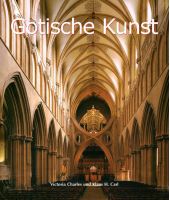 Die Kunst der Gotik findet ihre Wurzeln in der kraftvollen Architektur der Kathedralen Nordfrankreichs. Es handelt sich um eine mittelalterliche Kunstbewegung, die sich in Europa über mehr als 200 Jahre erstreckte. Die Architekten wandten sich von den runden Formen der Romanischen Kunst ab und begannen, Strebebögen und Spitzbögen einzusetzen, um die Kathedralen für das Tageslicht zu öffnen. Die Epoche der Gotik war durch tief greifende wirtschaftliche und soziale Veränderungen gekennzeichnet und brachte darüber hinaus eine neue Ikonographie hervor. An Stelle der angsterfüllten, dunklen Iconographie der Romantischen Epoche trat die Verherrlichung der Heiligen Jungfrau. Die sich auf alle Kunstzweige, die Architektur, die Bildhauerei, die Malerei etc. erstreckende gotische Kunst machte schließlich de italienischen Renaissance Platz. ... Далее
Die Kunst der Gotik findet ihre Wurzeln in der kraftvollen Architektur der Kathedralen Nordfrankreichs. Es handelt sich um eine mittelalterliche Kunstbewegung, die sich in Europa über mehr als 200 Jahre erstreckte. Die Architekten wandten sich von den runden Formen der Romanischen Kunst ab und begannen, Strebebögen und Spitzbögen einzusetzen, um die Kathedralen für das Tageslicht zu öffnen. Die Epoche der Gotik war durch tief greifende wirtschaftliche und soziale Veränderungen gekennzeichnet und brachte darüber hinaus eine neue Ikonographie hervor. An Stelle der angsterfüllten, dunklen Iconographie der Romantischen Epoche trat die Verherrlichung der Heiligen Jungfrau. Die sich auf alle Kunstzweige, die Architektur, die Bildhauerei, die Malerei etc. erstreckende gotische Kunst machte schließlich de italienischen Renaissance Platz. ... Далее -
49.
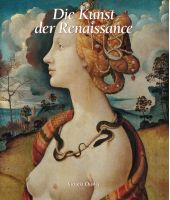 Die Renaissance begann gegen Ende des 14. Jahrhunderts in Italien und breitete sich bis zur zweiten Hälfte des 16. Jahrhunderts über ganz Europa aus. Die Wiederentdeckung der Pracht des griechischen und römischen Altertums markierte den Beginn der Wiedergeburt der Künste nach dem Zusammenbruch der dogmatischen Gewissheiten des Mittelalters. Eine ganze Reihe von Künstlern entwickelte in Malerei, Bildhauerei und Architektur Innovationen. Mit der Darstellung von Idealen und der Wirklichkeit, des Heiligen und des Profanen, etablierte die Bewegung einen Rahmen, der die europäische Kunst und Kultur der folgenden vier Jahrhunderte prägte. Leonardo da Vinci, Michelangelo, Botticelli, Fra Angelico, Giorgione, Mantegna, Raffael, Dürer und Bruegel sind Künstler, die einen wesentlichen Beitrag zur Kunst der Renaissance leisteten. ... Далее
Die Renaissance begann gegen Ende des 14. Jahrhunderts in Italien und breitete sich bis zur zweiten Hälfte des 16. Jahrhunderts über ganz Europa aus. Die Wiederentdeckung der Pracht des griechischen und römischen Altertums markierte den Beginn der Wiedergeburt der Künste nach dem Zusammenbruch der dogmatischen Gewissheiten des Mittelalters. Eine ganze Reihe von Künstlern entwickelte in Malerei, Bildhauerei und Architektur Innovationen. Mit der Darstellung von Idealen und der Wirklichkeit, des Heiligen und des Profanen, etablierte die Bewegung einen Rahmen, der die europäische Kunst und Kultur der folgenden vier Jahrhunderte prägte. Leonardo da Vinci, Michelangelo, Botticelli, Fra Angelico, Giorgione, Mantegna, Raffael, Dürer und Bruegel sind Künstler, die einen wesentlichen Beitrag zur Kunst der Renaissance leisteten. ... Далее -
50.
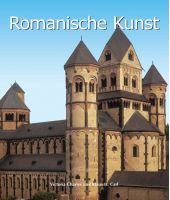 Der Begriff Romanische Kunst bezeichnet in der Kunstgeschichte die Epoche vom 11. bis zum 13. Jahrhundert. Diese Epoche wies eine große Vielfalt an regionalen Schulen auf, die alle spezifische Merkmale hatten. Sowohl in der Architektur als auch in der Bildhauerei wird die Romanische Kunst durch ihre rauen Formen charakterisiert. Dieses Buch lässt den Leser durch den faszinierenden Text und seinen umfangreichen Bildteil diese Kunst des Mittelalters, die heute im Vergleich mit ihrer unmittelbaren Nachfolgerin, der Kunst der Gotik, so häufig verachtet wird, neu entdecken. ... Далее
Der Begriff Romanische Kunst bezeichnet in der Kunstgeschichte die Epoche vom 11. bis zum 13. Jahrhundert. Diese Epoche wies eine große Vielfalt an regionalen Schulen auf, die alle spezifische Merkmale hatten. Sowohl in der Architektur als auch in der Bildhauerei wird die Romanische Kunst durch ihre rauen Formen charakterisiert. Dieses Buch lässt den Leser durch den faszinierenden Text und seinen umfangreichen Bildteil diese Kunst des Mittelalters, die heute im Vergleich mit ihrer unmittelbaren Nachfolgerin, der Kunst der Gotik, so häufig verachtet wird, neu entdecken. ... Далее -
51.
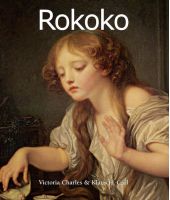 Das Wort Rokoko leitet sich wahrscheinlich von dem vermutlich in französischen Emigrantenkreisen aufgekommenen Wort «„rocaille“» (Muschel) ab. Diese Kunstrichtung entwickelte sich zu Beginn des 18. Jahrhunderts und breitete sich schnell in ganz Europa aus. Ihre verspielten und extravaganten Charakteristika standen im Einklang mit dem feinsinnigen Lebensgefühl der Aristokratie zu jener Zeit. In vielerlei Hinsicht gilt das Barock als Vorläufer dieser oft auch als Spätbarock bezeichneten Kunstrichtung. Während die Werke Tiepolos, Bouchers und Reynolds die Höhepunkte der Rokoko-Kunst darstellen, wurde die Strömung gelegentlich wegen ihrer vermeintlichen Oberflächlichkeit verurteilt. In der zweiten Hälfte des 18. Jahrhunderts verschwand das Rokoko allmählich und machte dem Neoklassizismus Platz. Erst ungefähr ein Jahrhundert später entdeckten Kunsthistoriker den Glanz dieses von Klaus H. Carl und Victoria Charles näher untersuchten goldenen Zeitalters wieder. ... Далее
Das Wort Rokoko leitet sich wahrscheinlich von dem vermutlich in französischen Emigrantenkreisen aufgekommenen Wort «„rocaille“» (Muschel) ab. Diese Kunstrichtung entwickelte sich zu Beginn des 18. Jahrhunderts und breitete sich schnell in ganz Europa aus. Ihre verspielten und extravaganten Charakteristika standen im Einklang mit dem feinsinnigen Lebensgefühl der Aristokratie zu jener Zeit. In vielerlei Hinsicht gilt das Barock als Vorläufer dieser oft auch als Spätbarock bezeichneten Kunstrichtung. Während die Werke Tiepolos, Bouchers und Reynolds die Höhepunkte der Rokoko-Kunst darstellen, wurde die Strömung gelegentlich wegen ihrer vermeintlichen Oberflächlichkeit verurteilt. In der zweiten Hälfte des 18. Jahrhunderts verschwand das Rokoko allmählich und machte dem Neoklassizismus Platz. Erst ungefähr ein Jahrhundert später entdeckten Kunsthistoriker den Glanz dieses von Klaus H. Carl und Victoria Charles näher untersuchten goldenen Zeitalters wieder. ... Далее -
52.
 Die Wiener Secession, gegründet von Gustav Klimt, Carl Moll und Josef Hoffmann, war ein Wegbereiter für die moderne Kunst. Zwanzig Künstler rebellierten gegen den erdrückenden Einfluss des konservativen Künstlerhauses auf die Wiener Kunstszene, gegen die veraltete Kunst einer Epoche und gegen die Mentalität des Kaiserreichs Österreich-Ungarn im Allgemeinen. Als Erben des Art Nouveau waren diese Künstler nicht einfach um ihre eigene Kunstnische bemüht, sondern strebten nach der Verwirklichung eines „Gesamtkunstwerks“, einem umfassenden Kunstbegriff, der Kunsthandwerk, bildende Kunst und Architektur vereinen sollte. Der Kampf der Secession repräsentierte gleichzeitig den Kampf vieler Kunsthandwerker, Architekten und Gestalter dieser Epoche, der Bevölkerung ein neues Kunstverständnis nahezubringen. Die Künstler der Secession kehrten der etablierten Kunst den Rücken, um mit neuen dekorativen Formen und Ideen zu experimentieren und sich für eine sinnträchtige, erotische Ästhetik zu öffnen – ein Weg, der sie auf Kollisionskurs mit dem gutbürgerlichen Empfinden der gehobenen Wiener Gesellschaft brachte. Dieser Bildband eröffnet dem Leser die Vielfalt und die Bildgewaltigkeit einer revolutionären Kunstbewegung, deren Motto „Der Zeit ihre Kunst. Der Kunst ihre Freiheit“ ein Ausdruck eines neuen, innovativen Kunstverständnisses ist, das sich allumfassend in der Malerei, Bildhauerei und Architektur dieser Gruppe widerspiegelt. ... Далее
Die Wiener Secession, gegründet von Gustav Klimt, Carl Moll und Josef Hoffmann, war ein Wegbereiter für die moderne Kunst. Zwanzig Künstler rebellierten gegen den erdrückenden Einfluss des konservativen Künstlerhauses auf die Wiener Kunstszene, gegen die veraltete Kunst einer Epoche und gegen die Mentalität des Kaiserreichs Österreich-Ungarn im Allgemeinen. Als Erben des Art Nouveau waren diese Künstler nicht einfach um ihre eigene Kunstnische bemüht, sondern strebten nach der Verwirklichung eines „Gesamtkunstwerks“, einem umfassenden Kunstbegriff, der Kunsthandwerk, bildende Kunst und Architektur vereinen sollte. Der Kampf der Secession repräsentierte gleichzeitig den Kampf vieler Kunsthandwerker, Architekten und Gestalter dieser Epoche, der Bevölkerung ein neues Kunstverständnis nahezubringen. Die Künstler der Secession kehrten der etablierten Kunst den Rücken, um mit neuen dekorativen Formen und Ideen zu experimentieren und sich für eine sinnträchtige, erotische Ästhetik zu öffnen – ein Weg, der sie auf Kollisionskurs mit dem gutbürgerlichen Empfinden der gehobenen Wiener Gesellschaft brachte. Dieser Bildband eröffnet dem Leser die Vielfalt und die Bildgewaltigkeit einer revolutionären Kunstbewegung, deren Motto „Der Zeit ihre Kunst. Der Kunst ihre Freiheit“ ein Ausdruck eines neuen, innovativen Kunstverständnisses ist, das sich allumfassend in der Malerei, Bildhauerei und Architektur dieser Gruppe widerspiegelt. ... Далее -
53.
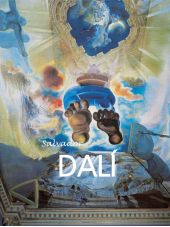 Maler, Designer, Hersteller von seltsamen Gegenständen, Autor und Filmemacher: Dali wurde der Berühmteste der Surrealisten. Bunuel, Lorca, Picasso und Breton hatten einen großen Einfluss auf seine Karriere. Dalis und Bunuels Film «Ein andalusischer Hund» markierte seinen offiziellen Einstieg in die festgefügte Gruppe der Pariser Surrealisten, wo er Gala kennen lernte, seine lebenslange Gefährtin und die Quelle seiner Inspiration. Aber seine Beziehung verfiel bald bis zu ihrem endgültigen Ende mit André Breton im Jahr 1939. Trotz allem blieb Dalis Kunst in ihrer Philosophie und Ausdrucksweise surrealistisch, und ein Schulbeispiel für Humor, Reinheit und Erforschung des Unbewussten. Während seines ganzen Lebens war Dali ein Genie der Selbstvermarktung, indem er seinem Ruf eine mystische Note zufügte und immer beibehielt. ... Далее
Maler, Designer, Hersteller von seltsamen Gegenständen, Autor und Filmemacher: Dali wurde der Berühmteste der Surrealisten. Bunuel, Lorca, Picasso und Breton hatten einen großen Einfluss auf seine Karriere. Dalis und Bunuels Film «Ein andalusischer Hund» markierte seinen offiziellen Einstieg in die festgefügte Gruppe der Pariser Surrealisten, wo er Gala kennen lernte, seine lebenslange Gefährtin und die Quelle seiner Inspiration. Aber seine Beziehung verfiel bald bis zu ihrem endgültigen Ende mit André Breton im Jahr 1939. Trotz allem blieb Dalis Kunst in ihrer Philosophie und Ausdrucksweise surrealistisch, und ein Schulbeispiel für Humor, Reinheit und Erforschung des Unbewussten. Während seines ganzen Lebens war Dali ein Genie der Selbstvermarktung, indem er seinem Ruf eine mystische Note zufügte und immer beibehielt. ... Далее -
54.
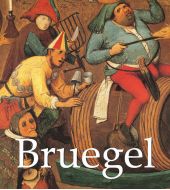 Die Bruegels – allen voran Pieter der Ältere, zusammen mit seinen Söhnen Pieter („Höllenbruegel“) und Jan („Samt– oder Blumenbruegel“) – sind die bedeutendste flämische Malerfamilie. Ihre Werke sind Zeugnisse des unschätzbaren Beitrags, den diese Familie in der Entwicklung der Malerei des nördlichen Europa geleistet hat. Sie entzogen sich bewusst dem Einfluss des italienischen Manierismus und schufen damit einen ganz eigenen, unabhängigen und tief im originellen Charakter der Flamen verwurzelten Stil. In teils volkstümlichen, teils allegorischen Szenen schildern Pieter Bruegel und seine Nachfolger auf unnachahmliche Weise den Alltag der bäuerlichen und der städtischen Bevölkerung zur Zeit der spanischen Herrschaft über die Niederlande. In diesem opulent bebilderten Werk zeichnen die Autoren, Emile Michel und Victoria Charles, ein lebendiges Bild, anhand dessen wir die Entwicklung der niederländischen und flämischen Kunst in der Zeit zwischen dem 15. und dem 17. Jahrhundert nachvollziehen können. ... Далее
Die Bruegels – allen voran Pieter der Ältere, zusammen mit seinen Söhnen Pieter („Höllenbruegel“) und Jan („Samt– oder Blumenbruegel“) – sind die bedeutendste flämische Malerfamilie. Ihre Werke sind Zeugnisse des unschätzbaren Beitrags, den diese Familie in der Entwicklung der Malerei des nördlichen Europa geleistet hat. Sie entzogen sich bewusst dem Einfluss des italienischen Manierismus und schufen damit einen ganz eigenen, unabhängigen und tief im originellen Charakter der Flamen verwurzelten Stil. In teils volkstümlichen, teils allegorischen Szenen schildern Pieter Bruegel und seine Nachfolger auf unnachahmliche Weise den Alltag der bäuerlichen und der städtischen Bevölkerung zur Zeit der spanischen Herrschaft über die Niederlande. In diesem opulent bebilderten Werk zeichnen die Autoren, Emile Michel und Victoria Charles, ein lebendiges Bild, anhand dessen wir die Entwicklung der niederländischen und flämischen Kunst in der Zeit zwischen dem 15. und dem 17. Jahrhundert nachvollziehen können. ... Далее -
55.
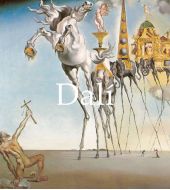 Maler, Designer, Hersteller von seltsamen Gegenständen, Autor und Filmemacher: Dali wurde der Berühmteste der Surrealisten. Bunuel, Lorca, Picasso und Breton hatten einen großen Einfluss auf seine Karriere. Dalis und Bunuels Film «Ein andalusischer Hund» markierte seinen offiziellen Einstieg in die festgefügte Gruppe der Pariser Surrealisten, wo er Gala kennen lernte, seine lebenslange Gefährtin und die Quelle seiner Inspiration. Aber seine Beziehung verfiel bald bis zu ihrem endgültigen Ende mit André Breton im Jahr 1939. Trotz allem blieb Dalis Kunst in ihrer Philosophie und Ausdrucksweise surrealistisch, und ein Schulbeispiel für Humor, Reinheit und Erforschung des Unbewussten. Während seines ganzen Lebens war Dali ein Genie der Selbstvermarktung, indem er seinem Ruf eine mystische Note zufügte und immer beibehielt. ... Далее
Maler, Designer, Hersteller von seltsamen Gegenständen, Autor und Filmemacher: Dali wurde der Berühmteste der Surrealisten. Bunuel, Lorca, Picasso und Breton hatten einen großen Einfluss auf seine Karriere. Dalis und Bunuels Film «Ein andalusischer Hund» markierte seinen offiziellen Einstieg in die festgefügte Gruppe der Pariser Surrealisten, wo er Gala kennen lernte, seine lebenslange Gefährtin und die Quelle seiner Inspiration. Aber seine Beziehung verfiel bald bis zu ihrem endgültigen Ende mit André Breton im Jahr 1939. Trotz allem blieb Dalis Kunst in ihrer Philosophie und Ausdrucksweise surrealistisch, und ein Schulbeispiel für Humor, Reinheit und Erforschung des Unbewussten. Während seines ganzen Lebens war Dali ein Genie der Selbstvermarktung, indem er seinem Ruf eine mystische Note zufügte und immer beibehielt. ... Далее -
56.
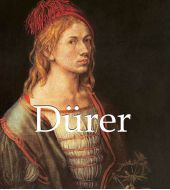 Der vielfach talentierte Albrecht Dürer nimmt einen bedeutenden Platz in der Geschichte der deutschen Kunst ein. In einer Zeit, in der die italienischen Künstler die klassischen Techniken der Ölmalerei, Bildhauerei und Architektur zu neuen Höhen perfektionierten und dadurch glaubten, dass sie das wahre Kunstmonopol besäßen, widmete Dürer sich einem eher vernachlässigten Medium, dass nur im Buchdruck zur Anwendung kam. Er befreite Holzschnitt und Kupferstich von dieser einseitigen Rolle, führte beide Techniken zur Perfektion und räumte ihnen einen Platz im Olymp der angesehenen künstlerischen Techniken ein. Eine Leistung, die sogar Giorgio Vasari in seinen Biographien berühmter Künstler würdigte. In diesem Buch werden nicht nur die bekanntesten seiner Meisterstiche und Stichzyklen aufgeführt, sondern auch seinen weniger beachteten Aquarellen die nötige Aufmerksamkeit gewidmet. ... Далее
Der vielfach talentierte Albrecht Dürer nimmt einen bedeutenden Platz in der Geschichte der deutschen Kunst ein. In einer Zeit, in der die italienischen Künstler die klassischen Techniken der Ölmalerei, Bildhauerei und Architektur zu neuen Höhen perfektionierten und dadurch glaubten, dass sie das wahre Kunstmonopol besäßen, widmete Dürer sich einem eher vernachlässigten Medium, dass nur im Buchdruck zur Anwendung kam. Er befreite Holzschnitt und Kupferstich von dieser einseitigen Rolle, führte beide Techniken zur Perfektion und räumte ihnen einen Platz im Olymp der angesehenen künstlerischen Techniken ein. Eine Leistung, die sogar Giorgio Vasari in seinen Biographien berühmter Künstler würdigte. In diesem Buch werden nicht nur die bekanntesten seiner Meisterstiche und Stichzyklen aufgeführt, sondern auch seinen weniger beachteten Aquarellen die nötige Aufmerksamkeit gewidmet. ... Далее -
57.
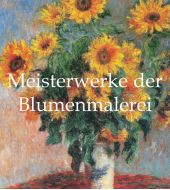 Blumen sind das zentrale Objekt einer Vielzahl von Stillleben in der Malerei. Mit ihren Farben und Formen drücken Künstler von Brueghel bis O’Keeffe Leben, aber auch Vergänglichkeit aus. Van Goghs Sonnenblumen, Monets Seerosen und Matisse’ Bouquets sind unvergessliche Meisterwerke. Dieses Buch versammelt die großen Meister der Blumenmalerei und sein praktisches Format macht es zu einem idealen Geschenk. ... Далее
Blumen sind das zentrale Objekt einer Vielzahl von Stillleben in der Malerei. Mit ihren Farben und Formen drücken Künstler von Brueghel bis O’Keeffe Leben, aber auch Vergänglichkeit aus. Van Goghs Sonnenblumen, Monets Seerosen und Matisse’ Bouquets sind unvergessliche Meisterwerke. Dieses Buch versammelt die großen Meister der Blumenmalerei und sein praktisches Format macht es zu einem idealen Geschenk. ... Далее -
58.
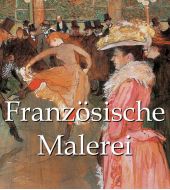 Der Einfluss der Werke französischer Maler zieht sich durch alle Stilrichtungen und viele von ihnen sind zu Klassikern von Weltruhm geworden. Dieses Buch gibt einen Überblick über die französischen Meilensteine der Stillleben, der Portraits und der Landschaftsmalerei, indem es Künstler wie Poussin, Clouet, Moreau, Millet, Courbet, Signac und Rouault umschließt. Sein handliches Format macht diese Mega Square Ausgabe zu einem idealen Geschenk für jeden Kunstliebhaber. ... Далее
Der Einfluss der Werke französischer Maler zieht sich durch alle Stilrichtungen und viele von ihnen sind zu Klassikern von Weltruhm geworden. Dieses Buch gibt einen Überblick über die französischen Meilensteine der Stillleben, der Portraits und der Landschaftsmalerei, indem es Künstler wie Poussin, Clouet, Moreau, Millet, Courbet, Signac und Rouault umschließt. Sein handliches Format macht diese Mega Square Ausgabe zu einem idealen Geschenk für jeden Kunstliebhaber. ... Далее -
59.
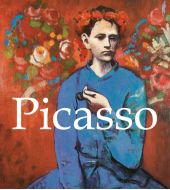 Von Pablo Picasso erzählt man, er hätte zu zeichnen angefangen, noch bevor er sprechen konnte. Geboren wurde er in Málaga, und hier verbrachte er auch die ersten zehn Jahre seines Lebens. Von seinem Vater lernte Pablo die Grundlagen der akademischen Malkunst. Er besuchte eine Kunstschule in Barcelona und schrieb sich 1897 an der Kunstakademie in Madrid ein. Noch keine 18 Jahre alt, erreichte Picasso den Höhepunkt seiner künstlerischen Rebellion und verwarf nicht nur die anämische Ästhetik der akademischen Kunst, sondern auch den prosaischen Realismus und schloss sich den Modernisten, also den nonkonformistischen Künstlern und Schriftstellern an, die Sabartés als die “Elite des katalanischen Denkens” bezeichnete. Picasso beschränkte sich 1899 und 1900 zunächst auf Motive, die für ihn die “endgültige Wahrheit” bedeuteten: die Vergänglichkeit des Lebens und die Unvermeidbarkeit des Todes. Seine frühen Werke, die “blaue Epoche” (1901-1904) waren auf blauen Ton gestimmt und von einer Reise durch Spanien sowie den Tod seines Freundes Casagemas beeinflusst. Er übersiedelte 1904 nach Paris, wo sich 1905 bis 1907 eine neue Phase abzeichnet, die période rose, erkennbar an einem fröhlicheren Stil mit reicherer Farbskala, vor allem Orange und Rosa. Während eines Sommeraufenthalts 1906 in Gosol (Spanien) nahm der weibliche Akt eine überragende Bedeutung für ihn ein. Er reduzierte die Formen radikal auf geometrische Strukturen und zeigte den weiblichen Körper auf unpersönliche Art: die “Frau” als Konzept. Exemplarisch für diesen Stilwandel ist das “skandalöse” im Winter und Frühling 1907 geschaffene Werk Les Demoiselles d’Avignon. Während sich Picassos ästhetischer Wandel 1907 auf die afrikanische Kunst zurückführen lässt, wird danach der Einfluss Cézannes entscheidend. Dies bezieht sich in erster Linie auf die einem konstruktiven System unterworfene räumliche Gestaltung der Leinwand als einer komponierten Einheit. Nach der Bombardierung von Guernica im Jahr 1937 schuf Picasso sein gleichnamiges Gemälde als Symbol gegen den Terror des Krieges. Sein Spätwerk zeigt eine Vielfalt von Stilen, seine Werke sind bunter, ausdrucksstärker und optimistischer. In einer Folge von Radierungen nimmt er die zentralen Themen seines Werks noch einmal auf: Akte, Zirkus, Stierkampf. Neben Bildern schafft er Unmengen von figürlichen Keramiken und auch plastische Werke. Er stirbt 1973 in seiner Villa in Mougins. ... Далее
Von Pablo Picasso erzählt man, er hätte zu zeichnen angefangen, noch bevor er sprechen konnte. Geboren wurde er in Málaga, und hier verbrachte er auch die ersten zehn Jahre seines Lebens. Von seinem Vater lernte Pablo die Grundlagen der akademischen Malkunst. Er besuchte eine Kunstschule in Barcelona und schrieb sich 1897 an der Kunstakademie in Madrid ein. Noch keine 18 Jahre alt, erreichte Picasso den Höhepunkt seiner künstlerischen Rebellion und verwarf nicht nur die anämische Ästhetik der akademischen Kunst, sondern auch den prosaischen Realismus und schloss sich den Modernisten, also den nonkonformistischen Künstlern und Schriftstellern an, die Sabartés als die “Elite des katalanischen Denkens” bezeichnete. Picasso beschränkte sich 1899 und 1900 zunächst auf Motive, die für ihn die “endgültige Wahrheit” bedeuteten: die Vergänglichkeit des Lebens und die Unvermeidbarkeit des Todes. Seine frühen Werke, die “blaue Epoche” (1901-1904) waren auf blauen Ton gestimmt und von einer Reise durch Spanien sowie den Tod seines Freundes Casagemas beeinflusst. Er übersiedelte 1904 nach Paris, wo sich 1905 bis 1907 eine neue Phase abzeichnet, die période rose, erkennbar an einem fröhlicheren Stil mit reicherer Farbskala, vor allem Orange und Rosa. Während eines Sommeraufenthalts 1906 in Gosol (Spanien) nahm der weibliche Akt eine überragende Bedeutung für ihn ein. Er reduzierte die Formen radikal auf geometrische Strukturen und zeigte den weiblichen Körper auf unpersönliche Art: die “Frau” als Konzept. Exemplarisch für diesen Stilwandel ist das “skandalöse” im Winter und Frühling 1907 geschaffene Werk Les Demoiselles d’Avignon. Während sich Picassos ästhetischer Wandel 1907 auf die afrikanische Kunst zurückführen lässt, wird danach der Einfluss Cézannes entscheidend. Dies bezieht sich in erster Linie auf die einem konstruktiven System unterworfene räumliche Gestaltung der Leinwand als einer komponierten Einheit. Nach der Bombardierung von Guernica im Jahr 1937 schuf Picasso sein gleichnamiges Gemälde als Symbol gegen den Terror des Krieges. Sein Spätwerk zeigt eine Vielfalt von Stilen, seine Werke sind bunter, ausdrucksstärker und optimistischer. In einer Folge von Radierungen nimmt er die zentralen Themen seines Werks noch einmal auf: Akte, Zirkus, Stierkampf. Neben Bildern schafft er Unmengen von figürlichen Keramiken und auch plastische Werke. Er stirbt 1973 in seiner Villa in Mougins. ... Далее -
60.
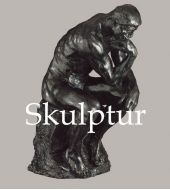 Die Mega Square-Ausgabe Skulptur umschließt 23.000 Jahre dieser Kunstform und mehr als 120 der beeindruckendsten Skulpturen der Welt: von prähistorischer Kunst über ägyptische Statuen und Michelangelo zu Henry Moore und Niki de Saint-Phalle. Das Buch beleuchtet die große Auswahl an Werken, die Evolution von Stilen über die Jahrhunderte und die Besonderheiten der wichtigsten Bildhauer. Sein praktisches Format macht es zu einem idealen Geschenk. ... Далее
Die Mega Square-Ausgabe Skulptur umschließt 23.000 Jahre dieser Kunstform und mehr als 120 der beeindruckendsten Skulpturen der Welt: von prähistorischer Kunst über ägyptische Statuen und Michelangelo zu Henry Moore und Niki de Saint-Phalle. Das Buch beleuchtet die große Auswahl an Werken, die Evolution von Stilen über die Jahrhunderte und die Besonderheiten der wichtigsten Bildhauer. Sein praktisches Format macht es zu einem idealen Geschenk. ... Далее -
61.
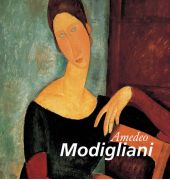 Amedeo Modigliani wurde 1884 in Livorno (Italien) geboren und starb im Alter von 35 Jahren in Paris. Die einzigartige visionäre Kraft des Künstlers speiste sich aus drei Quellen: Neben seiner Aufgeschlossenheit gegenüber seinem italienischen und klassischen Erbe zeigte er Verständnis für französischen Stil und französisches Feingefühl – besonders für die dichte künstlerische Atmosphäre im Paris des ausgehenden 19. Jahrhunderts – und ein von der jüdischen Tradition inspiriertes intellektuelles Problembewusstsein. Modigliani malte vor allem Portraits, die er in seinem ganz eigenen, melancholischen Stil verfremdete und in die Länge zog, sowie Akte von erhabener Schönheit und fremdartiger Erotik. Im Jahre 1906 zog es Modigliani nach Paris, dem Zentrum der künstlerischen Innovation und des internationalen Kunsthandels. Schon bald schloss er Freundschaft mit dem neoimpressionistischen Maler Maurice Utrillo (1883 bis 1955) und dem deutschen Maler Ludwig Meidner (1844 bis 1966). Bereits früh interessierte sich Modigliani für Aktstudien und das klassische Konzept der idealen Schönheit. Seine verwundenen Kompositionen und überdehnten Figuren wurden mit denen der Manieristen der Renaissance verglichen, besonders mit Parmigianino (1503 bis 1540) und El Greco (1541 bis 1614). Für seine Aktreihen übernahm Modigliani den Aufbau vieler berühmter Akte der Hochrenaissance, darunter solche von Giorgione (etwa 1477 bis 1510), Tizian (etwa 1488 bis 1576), Jean-Auguste-Dominique Ingres (1780 bis 1867) und Velázquez (1599 bis 1660), vermied aber deren Romantisierung und kunstvoll dekorativen Charakter. Darüber hinaus war Modigliani auch mit den Arbeiten von Francisco de Goya (1746 bis 1828) und Edouard Manet (1832 bis 1883) vertraut – Künstler, die Kontroversen entfacht hatten, weil sie weibliche Akte realistisch malten und damit die künstlerische Konvention brachen, nach der Akte in mythologische, allegorische oder historische Szenen einzuordnen seien. ... Далее
Amedeo Modigliani wurde 1884 in Livorno (Italien) geboren und starb im Alter von 35 Jahren in Paris. Die einzigartige visionäre Kraft des Künstlers speiste sich aus drei Quellen: Neben seiner Aufgeschlossenheit gegenüber seinem italienischen und klassischen Erbe zeigte er Verständnis für französischen Stil und französisches Feingefühl – besonders für die dichte künstlerische Atmosphäre im Paris des ausgehenden 19. Jahrhunderts – und ein von der jüdischen Tradition inspiriertes intellektuelles Problembewusstsein. Modigliani malte vor allem Portraits, die er in seinem ganz eigenen, melancholischen Stil verfremdete und in die Länge zog, sowie Akte von erhabener Schönheit und fremdartiger Erotik. Im Jahre 1906 zog es Modigliani nach Paris, dem Zentrum der künstlerischen Innovation und des internationalen Kunsthandels. Schon bald schloss er Freundschaft mit dem neoimpressionistischen Maler Maurice Utrillo (1883 bis 1955) und dem deutschen Maler Ludwig Meidner (1844 bis 1966). Bereits früh interessierte sich Modigliani für Aktstudien und das klassische Konzept der idealen Schönheit. Seine verwundenen Kompositionen und überdehnten Figuren wurden mit denen der Manieristen der Renaissance verglichen, besonders mit Parmigianino (1503 bis 1540) und El Greco (1541 bis 1614). Für seine Aktreihen übernahm Modigliani den Aufbau vieler berühmter Akte der Hochrenaissance, darunter solche von Giorgione (etwa 1477 bis 1510), Tizian (etwa 1488 bis 1576), Jean-Auguste-Dominique Ingres (1780 bis 1867) und Velázquez (1599 bis 1660), vermied aber deren Romantisierung und kunstvoll dekorativen Charakter. Darüber hinaus war Modigliani auch mit den Arbeiten von Francisco de Goya (1746 bis 1828) und Edouard Manet (1832 bis 1883) vertraut – Künstler, die Kontroversen entfacht hatten, weil sie weibliche Akte realistisch malten und damit die künstlerische Konvention brachen, nach der Akte in mythologische, allegorische oder historische Szenen einzuordnen seien. ... Далее -
62.
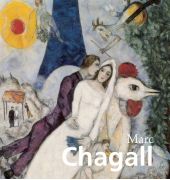 Chagall wurde in einer strenggläubigen jüdischen Familie geboren, in der das Verbot, den Menschen bildlich darzustellen, zum religiösen Dogma gehörte. Zwar lebte Chagalls Familie in ärmlichen Verhältnissen, litt jedoch keine Not. Nachdem er zunächst bei der Aufnahmeprüfung für die Kunstschule des Barons Stieglitz durchgefallen war, gelang es ihm, in die von Nikolai Roerich geleitete Schule der Kaiserlichen Gesellschaft zur Förderung der Künste aufgenommen zu werden. Chagall wählte später als Wohnsitz Paris. In dem Künstlerviertel La Ruche traf er viele Landsleute – u.a. Lipschitz, Zadkine, Soutine und Archipenko –, die, angezogen vom Ruhm der Weltstadt, ebenfalls nach Paris gekommen waren. Bereits in den ersten Schriften über Chagall, die in den 1920er Jahren erschienen, wurde mit Recht behauptet, dass Paris seiner Malkunst den nötigen Schliff gegeben habe, eine sensible Sprödigkeit und Bestimmtheit der Linien, die nun eine sichere und genaue Stimmigkeit mit dem Farbklang bekamen, so dass die Linie gegenüber der Farbe oft zum beherrschenden Element wurde. Chagall besaß von Natur aus eine “stilistische Immunität”, er ließ sich in seinem Schaffen anregen und bereichern, jedoch ohne seinem eigenen Stil untreu zu werden. Er begeisterte sich für das Werk anderer Künstler, lernte von ihnen und streifte seine jugendliche Unbeholfenheit ab, seinen “Archimedespunkt” aber verlor er nie. Bezeichnend ist, dass Kritiker und Forscher in ihren Abhandlungen über Chagalls Kunst häufig zur musikalischen Terminologie greifen. Chagalls Motive und Gestalten verfügen über eine klangliche Wirkung. So erscheint die Farbe als Rhythmus, die Linie als Melodie. Diese Metaphorik entspricht einer Malkunst, die gleich der Musik auf den Begriff der Zeit bezogen ist. ... Далее
Chagall wurde in einer strenggläubigen jüdischen Familie geboren, in der das Verbot, den Menschen bildlich darzustellen, zum religiösen Dogma gehörte. Zwar lebte Chagalls Familie in ärmlichen Verhältnissen, litt jedoch keine Not. Nachdem er zunächst bei der Aufnahmeprüfung für die Kunstschule des Barons Stieglitz durchgefallen war, gelang es ihm, in die von Nikolai Roerich geleitete Schule der Kaiserlichen Gesellschaft zur Förderung der Künste aufgenommen zu werden. Chagall wählte später als Wohnsitz Paris. In dem Künstlerviertel La Ruche traf er viele Landsleute – u.a. Lipschitz, Zadkine, Soutine und Archipenko –, die, angezogen vom Ruhm der Weltstadt, ebenfalls nach Paris gekommen waren. Bereits in den ersten Schriften über Chagall, die in den 1920er Jahren erschienen, wurde mit Recht behauptet, dass Paris seiner Malkunst den nötigen Schliff gegeben habe, eine sensible Sprödigkeit und Bestimmtheit der Linien, die nun eine sichere und genaue Stimmigkeit mit dem Farbklang bekamen, so dass die Linie gegenüber der Farbe oft zum beherrschenden Element wurde. Chagall besaß von Natur aus eine “stilistische Immunität”, er ließ sich in seinem Schaffen anregen und bereichern, jedoch ohne seinem eigenen Stil untreu zu werden. Er begeisterte sich für das Werk anderer Künstler, lernte von ihnen und streifte seine jugendliche Unbeholfenheit ab, seinen “Archimedespunkt” aber verlor er nie. Bezeichnend ist, dass Kritiker und Forscher in ihren Abhandlungen über Chagalls Kunst häufig zur musikalischen Terminologie greifen. Chagalls Motive und Gestalten verfügen über eine klangliche Wirkung. So erscheint die Farbe als Rhythmus, die Linie als Melodie. Diese Metaphorik entspricht einer Malkunst, die gleich der Musik auf den Begriff der Zeit bezogen ist. ... Далее -
63.
 Goya ist einer der zugänglichsten Maler. Seine Kunst ist wie sein Leben ein offenes Buch und es ist nicht die Kunst einer idealen, sondern einer garstigen und unheimlichen Welt. Er kam als Sohn eines Vergolders in einem kleinen Bergdorf mit hundert Einwohnern zur Welt. Als Kind arbeitete er zusammen mit seinen Geschwistern auf dem Feld, bis sein Zeichentalent entdeckt wurde. Dank der Vermittlung eines Gönners kam er als 14-Jähriger zu einem Hofmaler in Saragossa in die Lehre und zog als 19-Jähriger nach Madrid. Abgesehen von wunderbar dekorativen Kartons für die Gobelinmanufaktur und fünf kleinen Bildern malte Goya bis zu seinem 37. Jahr nichts Bedeutendes, doch nach seiner Bestellung zum Hofmaler entfaltet er eine Produktivität, die der von Rubens nicht nachsteht. Es folgt ein zeitweise von Krankheit getrübtes Jahrzehnt unglaublichen Schaffens und der Skandale. In seinen Radierungen zeigt er sich als herausragender Zeichenkünstler. In seiner Malerei ist er stark von Velásquez beeinflusst und wie dieser von seinem Modell abhängig, wobei er sich einer rücksichtslosen Wirklichkeitstreue befleißigt, die gelegentlich auch in die Karikatur umschlägt. Hässlichkeit wird genau so dramatisiert wie Liebreiz und Schönheit. Seine Grafikzyklen, die Kaprizen und die Kapriolen sind aufs Sorgfältigste durchdacht und psychologische Meisterwerke. Seine “fantastischen Figuren” erfüllen uns mit einer hämischen Freude, regen unsere diabolischen Instinkte an und lassen uns erschauern. Am deutlichsten offenbar wird sein Genie in seinen Radierungen über die Schrecken des Krieges. Neben diesen Darstellungen wirkt jedes andere Kriegsbild blass und sentimental. Er konzentriert sich auf vereinzelte Szenen der Grausamkeit. Nirgendwo sonst zeigt er eine solche Beherrschung von Form und Bewegung, so dramatische Gesten und eine so gekonnte Wirkung von Licht und Dunkel wie in diesem Aufbegehren gegen die Gewalt. Doch malte er auch volksnahe Vergnügungen sowie Portraits. Vergessen wir nicht, dass dieser außerordentlich vielseitige Künstler auch das schönste spanische Aktbild, die Nackte Maja, schuf. ... Далее
Goya ist einer der zugänglichsten Maler. Seine Kunst ist wie sein Leben ein offenes Buch und es ist nicht die Kunst einer idealen, sondern einer garstigen und unheimlichen Welt. Er kam als Sohn eines Vergolders in einem kleinen Bergdorf mit hundert Einwohnern zur Welt. Als Kind arbeitete er zusammen mit seinen Geschwistern auf dem Feld, bis sein Zeichentalent entdeckt wurde. Dank der Vermittlung eines Gönners kam er als 14-Jähriger zu einem Hofmaler in Saragossa in die Lehre und zog als 19-Jähriger nach Madrid. Abgesehen von wunderbar dekorativen Kartons für die Gobelinmanufaktur und fünf kleinen Bildern malte Goya bis zu seinem 37. Jahr nichts Bedeutendes, doch nach seiner Bestellung zum Hofmaler entfaltet er eine Produktivität, die der von Rubens nicht nachsteht. Es folgt ein zeitweise von Krankheit getrübtes Jahrzehnt unglaublichen Schaffens und der Skandale. In seinen Radierungen zeigt er sich als herausragender Zeichenkünstler. In seiner Malerei ist er stark von Velásquez beeinflusst und wie dieser von seinem Modell abhängig, wobei er sich einer rücksichtslosen Wirklichkeitstreue befleißigt, die gelegentlich auch in die Karikatur umschlägt. Hässlichkeit wird genau so dramatisiert wie Liebreiz und Schönheit. Seine Grafikzyklen, die Kaprizen und die Kapriolen sind aufs Sorgfältigste durchdacht und psychologische Meisterwerke. Seine “fantastischen Figuren” erfüllen uns mit einer hämischen Freude, regen unsere diabolischen Instinkte an und lassen uns erschauern. Am deutlichsten offenbar wird sein Genie in seinen Radierungen über die Schrecken des Krieges. Neben diesen Darstellungen wirkt jedes andere Kriegsbild blass und sentimental. Er konzentriert sich auf vereinzelte Szenen der Grausamkeit. Nirgendwo sonst zeigt er eine solche Beherrschung von Form und Bewegung, so dramatische Gesten und eine so gekonnte Wirkung von Licht und Dunkel wie in diesem Aufbegehren gegen die Gewalt. Doch malte er auch volksnahe Vergnügungen sowie Portraits. Vergessen wir nicht, dass dieser außerordentlich vielseitige Künstler auch das schönste spanische Aktbild, die Nackte Maja, schuf. ... Далее -
64.
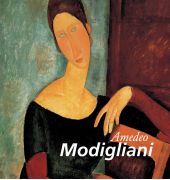 Amedeo Modigliani wurde 1884 in Livorno (Italien) geboren und starb im Alter von 35 Jahren in Paris. Die einzigartige visionäre Kraft des Künstlers speiste sich aus drei Quellen: Neben seiner Aufgeschlossenheit gegenüber seinem italienischen und klassischen Erbe zeigte er Verständnis für französischen Stil und französisches Feingefühl – besonders für die dichte künstlerische Atmosphäre im Paris des ausgehenden 19. Jahrhunderts – und ein von der jüdischen Tradition inspiriertes intellektuelles Problembewusstsein. Modigliani malte vor allem Portraits, die er in seinem ganz eigenen, melancholischen Stil verfremdete und in die Länge zog, sowie Akte von erhabener Schönheit und fremdartiger Erotik. Im Jahre 1906 zog es Modigliani nach Paris, dem Zentrum der künstlerischen Innovation und des internationalen Kunsthandels. Schon bald schloss er Freundschaft mit dem neoimpressionistischen Maler Maurice Utrillo (1883 bis 1955) und dem deutschen Maler Ludwig Meidner (1844 bis 1966). Bereits früh interessierte sich Modigliani für Aktstudien und das klassische Konzept der idealen Schönheit. Seine verwundenen Kompositionen und überdehnten Figuren wurden mit denen der Manieristen der Renaissance verglichen, besonders mit Parmigianino (1503 bis 1540) und El Greco (1541 bis 1614). Für seine Aktreihen übernahm Modigliani den Aufbau vieler berühmter Akte der Hochrenaissance, darunter solche von Giorgione (etwa 1477 bis 1510), Tizian (etwa 1488 bis 1576), Jean-Auguste-Dominique Ingres (1780 bis 1867) und Velázquez (1599 bis 1660), vermied aber deren Romantisierung und kunstvoll dekorativen Charakter. Darüber hinaus war Modigliani auch mit den Arbeiten von Francisco de Goya (1746 bis 1828) und Edouard Manet (1832 bis 1883) vertraut – Künstler, die Kontroversen entfacht hatten, weil sie weibliche Akte realistisch malten und damit die künstlerische Konvention brachen, nach der Akte in mythologische, allegorische oder historische Szenen einzuordnen seien. ... Далее
Amedeo Modigliani wurde 1884 in Livorno (Italien) geboren und starb im Alter von 35 Jahren in Paris. Die einzigartige visionäre Kraft des Künstlers speiste sich aus drei Quellen: Neben seiner Aufgeschlossenheit gegenüber seinem italienischen und klassischen Erbe zeigte er Verständnis für französischen Stil und französisches Feingefühl – besonders für die dichte künstlerische Atmosphäre im Paris des ausgehenden 19. Jahrhunderts – und ein von der jüdischen Tradition inspiriertes intellektuelles Problembewusstsein. Modigliani malte vor allem Portraits, die er in seinem ganz eigenen, melancholischen Stil verfremdete und in die Länge zog, sowie Akte von erhabener Schönheit und fremdartiger Erotik. Im Jahre 1906 zog es Modigliani nach Paris, dem Zentrum der künstlerischen Innovation und des internationalen Kunsthandels. Schon bald schloss er Freundschaft mit dem neoimpressionistischen Maler Maurice Utrillo (1883 bis 1955) und dem deutschen Maler Ludwig Meidner (1844 bis 1966). Bereits früh interessierte sich Modigliani für Aktstudien und das klassische Konzept der idealen Schönheit. Seine verwundenen Kompositionen und überdehnten Figuren wurden mit denen der Manieristen der Renaissance verglichen, besonders mit Parmigianino (1503 bis 1540) und El Greco (1541 bis 1614). Für seine Aktreihen übernahm Modigliani den Aufbau vieler berühmter Akte der Hochrenaissance, darunter solche von Giorgione (etwa 1477 bis 1510), Tizian (etwa 1488 bis 1576), Jean-Auguste-Dominique Ingres (1780 bis 1867) und Velázquez (1599 bis 1660), vermied aber deren Romantisierung und kunstvoll dekorativen Charakter. Darüber hinaus war Modigliani auch mit den Arbeiten von Francisco de Goya (1746 bis 1828) und Edouard Manet (1832 bis 1883) vertraut – Künstler, die Kontroversen entfacht hatten, weil sie weibliche Akte realistisch malten und damit die künstlerische Konvention brachen, nach der Akte in mythologische, allegorische oder historische Szenen einzuordnen seien. ... Далее -
65.
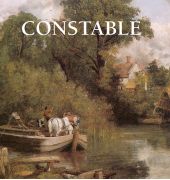 John Constable ist der erste englische Landschaftsmaler, der den Holländern in nichts nachsteht. Er übernimmt zwar einiges von Rubens Landschaften, doch sein eigentliches Vorbild ist Gainsborough. Constable bringt einen frischen Wind in die Malerei, zum einen, was die Technik, zum anderen, was das Gefühl anbelangt. Mit Ausnahme der Franzosen war Constable der erste Landschaftsmaler, der es als wichtigste Aufgabe erachtete, zunächst in einer einzigen Sitzung in der Natur eine erste Skizze anzufertigen. Diese Idee ist der Keim für die Entwicklung der modernen Landschaftsmalerei – ja vielleicht sogar der modernen Malerei überhaupt. Es ist diese spontane Momentaufnahme, das flüchtigste, persönlichste und am wenigsten reproduzierbare Element, das dem zukünftigen Bild seine Seele gibt. Beim späteren gemächlichen Arbeiten an der Leinwand kann die Absicht des Künstlers nur darin bestehen, diese erste Skizze zu bereichern und zu vervollkommnen, ohne jedoch die jungfräuliche Frische zu verlieren. Diesen zwei Prozessen widmete sich Constable mit dem Ziel, die Fülle des Lebens in den ländlichen Gegenden zu entdecken. ... Далее
John Constable ist der erste englische Landschaftsmaler, der den Holländern in nichts nachsteht. Er übernimmt zwar einiges von Rubens Landschaften, doch sein eigentliches Vorbild ist Gainsborough. Constable bringt einen frischen Wind in die Malerei, zum einen, was die Technik, zum anderen, was das Gefühl anbelangt. Mit Ausnahme der Franzosen war Constable der erste Landschaftsmaler, der es als wichtigste Aufgabe erachtete, zunächst in einer einzigen Sitzung in der Natur eine erste Skizze anzufertigen. Diese Idee ist der Keim für die Entwicklung der modernen Landschaftsmalerei – ja vielleicht sogar der modernen Malerei überhaupt. Es ist diese spontane Momentaufnahme, das flüchtigste, persönlichste und am wenigsten reproduzierbare Element, das dem zukünftigen Bild seine Seele gibt. Beim späteren gemächlichen Arbeiten an der Leinwand kann die Absicht des Künstlers nur darin bestehen, diese erste Skizze zu bereichern und zu vervollkommnen, ohne jedoch die jungfräuliche Frische zu verlieren. Diesen zwei Prozessen widmete sich Constable mit dem Ziel, die Fülle des Lebens in den ländlichen Gegenden zu entdecken. ... Далее -
66.
 Sein Vater war ein wohlhabender Bürger, der darauf bestand, dass er "in allem unterrichtet wurde, was man Kinder lehrt”. Doch der Junge hatte nicht viel für Lesen, Schreiben oder Mathematik übrig, so dass sein Vater die Hoffnung aufgab, ihn zu einem Gelehrten zu machen, und ihn stattdessen zum Goldschmied Botticelli in die Lehre gab, unter dessen Namen ihn die Welt kennt. Doch Sandro, ein eigenwillig blickender Junge mit großen, neugierigen Augen und einem blonden Haarschopf bestand darauf, Maler zu werden und kam deshalb schließlich zu dem Karmelitermönch Fra Lippo Lippi in die Lehre. Dem Frate lag Sandros Ausbildung besonders am Herzen, da er ihm auch persönlich sehr zugetan war. Wie dies inzwischen unter den Malern Mode geworden war, wandte sich der junge Maler nicht religiösen Motiven zu, sondern dem Studium der Schönheit und des menschlichen Charakters. Sandro machte schnelle Fortschritte, liebte und verehrte seinen Meister und brachte später dessen Sohn, Filippino Lippi, das Malen bei. Trotz seines realistischen Ansatzes war Sandro ein Träumer und Poet, nicht ein Maler von Fakten, sondern von Ideen. Deshalb sind auch seine Bilder weniger eine Darstellung von bestimmten Objekten, als von Mustern und Formen. Auch seine Farbgebung ist weder reich noch lebensnah, sondern untersteht immer der Form und bleibt oft nur eine Andeutung. Er interessierte sich für die abstrakten Möglichkeiten der Kunst, weniger für das Konkrete. So sind seine Kompositionen eher Muster; seine Gestalten besetzen nicht wohl definierte Plätze im Raum, sie wirken nicht durch massige Körperhaftigkeit, sondern eher flächig. Die Linien, die seine Konturen umgeben, verfolgen wohl einen dekorativen Zweck. Man sagt Botticelli nach, dass er “…obwohl einer der schlechtesten Anatomen, so doch einer der größten Zeichner der Renaissance” gewesen sei. Ein Beispiel fehlerhafter anatomischer Wiedergabe ist die unmögliche Art und Weise, in der der Kopf der Madonna am Hals befestigt ist und verschiedene merkwürdige Gelenke sowie eigentümlich geformte Glieder. Trotzdem gilt er als einer der größten Zeichner, weil er es nicht nur verstand, bloße äußere, sondern auch innere Schönheit wiederzugeben. Mathematisch ausgedrückt, löste er die Bewegung der Figur in ihre Faktoren – die einfachsten Ausdrucksformen – auf und kombinierte diese verschiedenen Formen in ein Muster, das durch rhythmische und harmonische Linien auf unsere Einbildung die poetischen Gefühle des Künstlers projiziert. Diese Fertigkeit, jeder Linie eine Bedeutung zu verleihen, unterscheidet den großen Zeichenkünstler von den vielen, die die Linie nur als ein notwendiges Mittel zur Darstellung von konkreten Gegenständen nutzen. Zu seinen wichtigsten Werken gehören: Der Frühling (1478), Madonna mit Kind (1480), Geburt der Venus (1485), Madonna della Melagrana (1487) ... Далее
Sein Vater war ein wohlhabender Bürger, der darauf bestand, dass er "in allem unterrichtet wurde, was man Kinder lehrt”. Doch der Junge hatte nicht viel für Lesen, Schreiben oder Mathematik übrig, so dass sein Vater die Hoffnung aufgab, ihn zu einem Gelehrten zu machen, und ihn stattdessen zum Goldschmied Botticelli in die Lehre gab, unter dessen Namen ihn die Welt kennt. Doch Sandro, ein eigenwillig blickender Junge mit großen, neugierigen Augen und einem blonden Haarschopf bestand darauf, Maler zu werden und kam deshalb schließlich zu dem Karmelitermönch Fra Lippo Lippi in die Lehre. Dem Frate lag Sandros Ausbildung besonders am Herzen, da er ihm auch persönlich sehr zugetan war. Wie dies inzwischen unter den Malern Mode geworden war, wandte sich der junge Maler nicht religiösen Motiven zu, sondern dem Studium der Schönheit und des menschlichen Charakters. Sandro machte schnelle Fortschritte, liebte und verehrte seinen Meister und brachte später dessen Sohn, Filippino Lippi, das Malen bei. Trotz seines realistischen Ansatzes war Sandro ein Träumer und Poet, nicht ein Maler von Fakten, sondern von Ideen. Deshalb sind auch seine Bilder weniger eine Darstellung von bestimmten Objekten, als von Mustern und Formen. Auch seine Farbgebung ist weder reich noch lebensnah, sondern untersteht immer der Form und bleibt oft nur eine Andeutung. Er interessierte sich für die abstrakten Möglichkeiten der Kunst, weniger für das Konkrete. So sind seine Kompositionen eher Muster; seine Gestalten besetzen nicht wohl definierte Plätze im Raum, sie wirken nicht durch massige Körperhaftigkeit, sondern eher flächig. Die Linien, die seine Konturen umgeben, verfolgen wohl einen dekorativen Zweck. Man sagt Botticelli nach, dass er “…obwohl einer der schlechtesten Anatomen, so doch einer der größten Zeichner der Renaissance” gewesen sei. Ein Beispiel fehlerhafter anatomischer Wiedergabe ist die unmögliche Art und Weise, in der der Kopf der Madonna am Hals befestigt ist und verschiedene merkwürdige Gelenke sowie eigentümlich geformte Glieder. Trotzdem gilt er als einer der größten Zeichner, weil er es nicht nur verstand, bloße äußere, sondern auch innere Schönheit wiederzugeben. Mathematisch ausgedrückt, löste er die Bewegung der Figur in ihre Faktoren – die einfachsten Ausdrucksformen – auf und kombinierte diese verschiedenen Formen in ein Muster, das durch rhythmische und harmonische Linien auf unsere Einbildung die poetischen Gefühle des Künstlers projiziert. Diese Fertigkeit, jeder Linie eine Bedeutung zu verleihen, unterscheidet den großen Zeichenkünstler von den vielen, die die Linie nur als ein notwendiges Mittel zur Darstellung von konkreten Gegenständen nutzen. Zu seinen wichtigsten Werken gehören: Der Frühling (1478), Madonna mit Kind (1480), Geburt der Venus (1485), Madonna della Melagrana (1487) ... Далее -
67.
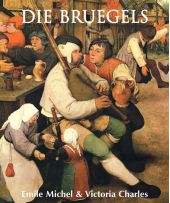 Die Bruegels – allen voran Pieter der Ältere, zusammen mit seinen Söhnen Pieter („Höllenbruegel“) und Jan („Samt– oder Blumenbruegel“) – sind die bedeutendste flämische Malerfamilie. Ihre Werke sind Zeugnisse des unschätzbaren Beitrags, den diese Familie in der Entwicklung der Malerei des nördlichen Europa geleistet hat. Sie entzogen sich bewusst dem Einfluss des italienischen Manierismus und schufen damit einen ganz eigenen, unabhängigen und tief im originellen Charakter der Flamen verwurzelten Stil. In teils volkstümlichen, teils allegorischen Szenen schildern Pieter Bruegel und seine Nachfolger auf unnachahmliche Weise den Alltag der bäuerlichen und der städtischen Bevölkerung zur Zeit der spanischen Herrschaft über die Niederlande. In diesem opulent bebilderten Werk zeichnen die Autoren, Emile Michel und Victoria Charles, ein lebendiges Bild, anhand dessen wir die Entwicklung der niederländischen und flämischen Kunst in der Zeit zwischen dem 15. und dem 17. Jahrhundert nachvollziehen können. ... Далее
Die Bruegels – allen voran Pieter der Ältere, zusammen mit seinen Söhnen Pieter („Höllenbruegel“) und Jan („Samt– oder Blumenbruegel“) – sind die bedeutendste flämische Malerfamilie. Ihre Werke sind Zeugnisse des unschätzbaren Beitrags, den diese Familie in der Entwicklung der Malerei des nördlichen Europa geleistet hat. Sie entzogen sich bewusst dem Einfluss des italienischen Manierismus und schufen damit einen ganz eigenen, unabhängigen und tief im originellen Charakter der Flamen verwurzelten Stil. In teils volkstümlichen, teils allegorischen Szenen schildern Pieter Bruegel und seine Nachfolger auf unnachahmliche Weise den Alltag der bäuerlichen und der städtischen Bevölkerung zur Zeit der spanischen Herrschaft über die Niederlande. In diesem opulent bebilderten Werk zeichnen die Autoren, Emile Michel und Victoria Charles, ein lebendiges Bild, anhand dessen wir die Entwicklung der niederländischen und flämischen Kunst in der Zeit zwischen dem 15. und dem 17. Jahrhundert nachvollziehen können. ... Далее -
68.
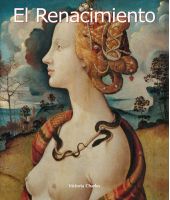 El Renacimiento se inició a finales del siglo catorce en Italia y ya estaba extendido por toda Europa en la segunda mitad del siglo dieciséis. El redescubrimiento del esplendor de la antigua Grecia y Roma supuso el comienzo del renacimiento de las artes como consecuencia de la descomposición de la certeza dogmática de la Edad Media. Surgió una generación de artistas que comenzaron a innovar dentro del ámbito de la pintura, así como de la escultura y arquitectura. Representando lo ideal y lo actual, lo sacro y lo profano, este período supuso un marco de referencia que ejercería su influencia sobre el arte europeo a lo largo de los siguientes cuatro siglos. Leonardo da Vinci, Miguel Ángel, Botticelli, Fra Angélico, Giorgione, Mantegna, Rafael, Durero y Bruegel se encuentran entre los artistas que hicieron contribuciones considerables al arte del Renacimiento. ... Далее
El Renacimiento se inició a finales del siglo catorce en Italia y ya estaba extendido por toda Europa en la segunda mitad del siglo dieciséis. El redescubrimiento del esplendor de la antigua Grecia y Roma supuso el comienzo del renacimiento de las artes como consecuencia de la descomposición de la certeza dogmática de la Edad Media. Surgió una generación de artistas que comenzaron a innovar dentro del ámbito de la pintura, así como de la escultura y arquitectura. Representando lo ideal y lo actual, lo sacro y lo profano, este período supuso un marco de referencia que ejercería su influencia sobre el arte europeo a lo largo de los siguientes cuatro siglos. Leonardo da Vinci, Miguel Ángel, Botticelli, Fra Angélico, Giorgione, Mantegna, Rafael, Durero y Bruegel se encuentran entre los artistas que hicieron contribuciones considerables al arte del Renacimiento. ... Далее -
69.
 Pintor, diseñador, creador de objetos extraños, autor y cineasta, Dalí se convirtió en el más famoso de los surrealistas. Buñuel, Lorca, Picasso y Breton tuvieron una gran influencia en su vida artística. La película de Dalí, Un perro andaluz, que produjo Buñuel, marcó su entrada oficial en el cerrado grupo de los surrealistas parisinos, donde conoció a Gala, la mujer que se convertiría en su compañera de toda la vida y en su fuente de inspiración. Sin embargo, su relación con el grupo pronto se deterioró, hasta su ruptura final con André Breton en 1939. El arte de Dalí, empero, siguió siendo surrealista en su filosofía y expresión, así como el principal ejemplo de su frescura, humor y exploración de la mente subconsciente. A través de su vida, Dalí fue un genio de la promoción de sí mismo: creó y mantuvo una reputación como una figura casi mítica. ... Далее
Pintor, diseñador, creador de objetos extraños, autor y cineasta, Dalí se convirtió en el más famoso de los surrealistas. Buñuel, Lorca, Picasso y Breton tuvieron una gran influencia en su vida artística. La película de Dalí, Un perro andaluz, que produjo Buñuel, marcó su entrada oficial en el cerrado grupo de los surrealistas parisinos, donde conoció a Gala, la mujer que se convertiría en su compañera de toda la vida y en su fuente de inspiración. Sin embargo, su relación con el grupo pronto se deterioró, hasta su ruptura final con André Breton en 1939. El arte de Dalí, empero, siguió siendo surrealista en su filosofía y expresión, así como el principal ejemplo de su frescura, humor y exploración de la mente subconsciente. A través de su vida, Dalí fue un genio de la promoción de sí mismo: creó y mantuvo una reputación como una figura casi mítica. ... Далее -
70.
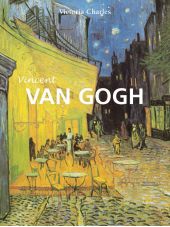 La vida y obra de Vincent van Gogh están tan entremezcladas que es prácticamente imposible observar una sin pensar en la otra. Van Gogh se ha convertido en la encarnación del sufrimiento, en el mártir incomprendido del arte moderno, el emblema del artista como alguien ajeno. En 1890 se publicó un artículo que daba detalles acerca de la enfermedad de van Gogh. Su autor consideraba que el pintor era “un genio demente y terrible, con frecuencia sublime, en ocasiones grotesco, siempre al borde de lo patológico”. Se sabe muy poco de la niñez de Vincent. A la edad de once años, tuvo que abandonar “el nido humano”, como lo llamaba él mismo, para ir a vivir a una serie de escuelas con internado. Su primer retrato nos muestra a van Gogh como un joven serio de diecinueve años. Para entonces ya llevaba tres años trabajando en La Haya y posteriormente trabajó también en Londres, en la galería Goupil & Co. En 1874, su amor por Ursula Loyer terminó en desastre y un año después, fue transferido a París en contra de su voluntad. Después de una discusión particularmente acalorada durante las vacaciones navideñas, en 1881, su padre, que era pastor, ordenó a Vincent que se marchara. Con esta ruptura final, decidió dejar de lado su apellido y comenzó a firmar sus lienzos simplemente con “Vincent”. Se marchó a París y jamás volvió a Holanda. En París conoció a Paul Gauguin, cuyas pinturas admiraba mucho. De 1886 a 1888, el autorretrato fue el principal tema de la obra de Vincent. En febrero de 1888, Vincent dejó París; se marchó para Arles y trató de convencer a Gauguin de que hiciera lo mismo. Los meses durante los cuales esperó que llegara Gauguin fueron los más productivos de la vida de van Gogh. Quería mostrarle a su amigo tantos cuadros como le fuera posible y decorar la Casa Amarilla. Sin embargo, Gauguin no compartía sus puntos de vista artísticos y finalmente volvió a París. El 7 de enero de 1889, catorce días después de su famosa auto mutilación, Vincent dejó el hospital donde convalecía. Aunque esperaba recuperarse y olvidar su locura, de hecho volvió al hospital dos veces más ese mismo año. Durante su última estancia en el hospital, Vincent pintó paisajes en los que recreó el mundo de su niñez. Se dice que Vincent van Gogh se disparó en un costado, mientras estaba en el campo, pero decidió volver a la posada y acostarse a dormir. El dueño de la casa le informó al Dr. Gachet y a su hermano Theo, quien describió los últimos momentos de su vida, que se extinguió el 29 de julio de 1890: “Tenía ganas de morir. Mientras estaba sentado a su lado, prometiéndole que trataríamos de curarlo […], él me respondió, ‘La tristesse durera toujours’ (La tristeza durará para siempre)”. ... Далее
La vida y obra de Vincent van Gogh están tan entremezcladas que es prácticamente imposible observar una sin pensar en la otra. Van Gogh se ha convertido en la encarnación del sufrimiento, en el mártir incomprendido del arte moderno, el emblema del artista como alguien ajeno. En 1890 se publicó un artículo que daba detalles acerca de la enfermedad de van Gogh. Su autor consideraba que el pintor era “un genio demente y terrible, con frecuencia sublime, en ocasiones grotesco, siempre al borde de lo patológico”. Se sabe muy poco de la niñez de Vincent. A la edad de once años, tuvo que abandonar “el nido humano”, como lo llamaba él mismo, para ir a vivir a una serie de escuelas con internado. Su primer retrato nos muestra a van Gogh como un joven serio de diecinueve años. Para entonces ya llevaba tres años trabajando en La Haya y posteriormente trabajó también en Londres, en la galería Goupil & Co. En 1874, su amor por Ursula Loyer terminó en desastre y un año después, fue transferido a París en contra de su voluntad. Después de una discusión particularmente acalorada durante las vacaciones navideñas, en 1881, su padre, que era pastor, ordenó a Vincent que se marchara. Con esta ruptura final, decidió dejar de lado su apellido y comenzó a firmar sus lienzos simplemente con “Vincent”. Se marchó a París y jamás volvió a Holanda. En París conoció a Paul Gauguin, cuyas pinturas admiraba mucho. De 1886 a 1888, el autorretrato fue el principal tema de la obra de Vincent. En febrero de 1888, Vincent dejó París; se marchó para Arles y trató de convencer a Gauguin de que hiciera lo mismo. Los meses durante los cuales esperó que llegara Gauguin fueron los más productivos de la vida de van Gogh. Quería mostrarle a su amigo tantos cuadros como le fuera posible y decorar la Casa Amarilla. Sin embargo, Gauguin no compartía sus puntos de vista artísticos y finalmente volvió a París. El 7 de enero de 1889, catorce días después de su famosa auto mutilación, Vincent dejó el hospital donde convalecía. Aunque esperaba recuperarse y olvidar su locura, de hecho volvió al hospital dos veces más ese mismo año. Durante su última estancia en el hospital, Vincent pintó paisajes en los que recreó el mundo de su niñez. Se dice que Vincent van Gogh se disparó en un costado, mientras estaba en el campo, pero decidió volver a la posada y acostarse a dormir. El dueño de la casa le informó al Dr. Gachet y a su hermano Theo, quien describió los últimos momentos de su vida, que se extinguió el 29 de julio de 1890: “Tenía ganas de morir. Mientras estaba sentado a su lado, prometiéndole que trataríamos de curarlo […], él me respondió, ‘La tristesse durera toujours’ (La tristeza durará para siempre)”. ... Далее -
71.
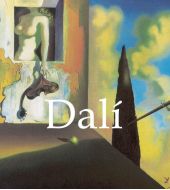 Pintor, diseñador, creador de objetos extraños, autor y cineasta, Dalí se convirtió en el más famoso de los surrealistas. Buñuel, Lorca, Picasso y Breton tuvieron una gran influencia en su vida artística. La película de Dalí, Un perro andaluz, que produjo Buñuel, marcó su entrada oficial en el cerrado grupo de los surrealistas parisinos, donde conoció a Gala, la mujer que se convertiría en su compañera de toda la vida y en su fuente de inspiración. Sin embargo, su relación con el grupo pronto se deterioró, hasta su ruptura final con André Breton en 1939. El arte de Dalí, empero, siguió siendo surrealista en su filosofía y expresión, así como el principal ejemplo de su frescura, humor y exploración de la mente subconsciente. A través de su vida, Dalí fue un genio de la promoción de sí mismo: creó y mantuvo una reputación como una figura casi mítica. ... Далее
Pintor, diseñador, creador de objetos extraños, autor y cineasta, Dalí se convirtió en el más famoso de los surrealistas. Buñuel, Lorca, Picasso y Breton tuvieron una gran influencia en su vida artística. La película de Dalí, Un perro andaluz, que produjo Buñuel, marcó su entrada oficial en el cerrado grupo de los surrealistas parisinos, donde conoció a Gala, la mujer que se convertiría en su compañera de toda la vida y en su fuente de inspiración. Sin embargo, su relación con el grupo pronto se deterioró, hasta su ruptura final con André Breton en 1939. El arte de Dalí, empero, siguió siendo surrealista en su filosofía y expresión, así como el principal ejemplo de su frescura, humor y exploración de la mente subconsciente. A través de su vida, Dalí fue un genio de la promoción de sí mismo: creó y mantuvo una reputación como una figura casi mítica. ... Далее -
72.
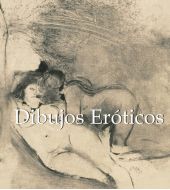 De Miguel Ángel a Picasso, pasando por Rubens y Degas, el arte erótico ha atraído la atención de muchos grandes maestros, cuyas obras son capaces de cautivar al observador de forma especial. A pesar de esta atracción, o quizá precisamente debido a ella, el arte erótico nunca ha dejado de suscitar polémica y se ha tenido que defender en muchas ocasiones de comparaciones con la pornografía. Este libro, que engloba una gran variedad de estilos y técnicas, guía a los lectores desde las primeras representaciones de escenas eróticas, que se remontan a los siglos XVI y XVII, hasta obras contemporáneas consagradas como los dibujos de los cuadernos de Picasso. ... Далее
De Miguel Ángel a Picasso, pasando por Rubens y Degas, el arte erótico ha atraído la atención de muchos grandes maestros, cuyas obras son capaces de cautivar al observador de forma especial. A pesar de esta atracción, o quizá precisamente debido a ella, el arte erótico nunca ha dejado de suscitar polémica y se ha tenido que defender en muchas ocasiones de comparaciones con la pornografía. Este libro, que engloba una gran variedad de estilos y técnicas, guía a los lectores desde las primeras representaciones de escenas eróticas, que se remontan a los siglos XVI y XVII, hasta obras contemporáneas consagradas como los dibujos de los cuadernos de Picasso. ... Далее -
73.
 Las flores constituyen el elemento fundamental en la mayoría de las representaciones pictóricas de naturalezas muertas. Al trazar sus formas y colores, numerosos artistas desde Brueghel a O’Keeffe han creado símbolos tanto de vida como de mortalidad. Los girasoles de Van Gogh, los nenúfares de Monet y los ramos de Matisse permanecerán en nuestra memoria para siempre. La mayor parte de los trabajos incluidos en Flores son verdaderas obras maestras que, a menudo, han marcado estilos y épocas enteras. Con el formato práctico y compacto característico de Mega Square, este título constituye un regalo ideal. ... Далее
Las flores constituyen el elemento fundamental en la mayoría de las representaciones pictóricas de naturalezas muertas. Al trazar sus formas y colores, numerosos artistas desde Brueghel a O’Keeffe han creado símbolos tanto de vida como de mortalidad. Los girasoles de Van Gogh, los nenúfares de Monet y los ramos de Matisse permanecerán en nuestra memoria para siempre. La mayor parte de los trabajos incluidos en Flores son verdaderas obras maestras que, a menudo, han marcado estilos y épocas enteras. Con el formato práctico y compacto característico de Mega Square, este título constituye un regalo ideal. ... Далее -
74.
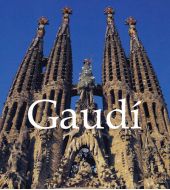 El arquitecto y diseñador español Antoni Gaudí (1852-1926) es una importante e influyente figura en la historia del arte contemporáneo de España. El uso del color, la utilización de diferentes materiales y la introducción de movimiento en sus construcciones fueron toda una innovación en el terreno de la arquitectura. En su diario, Gaudí expresó sus propios sentimientos sobre el arte: “los colores usados en arquitectura tienen que ser intensos, lógicos y fértiles”. El autor, Jeremy Roe, utiliza una amplia gama de detalles fotográficos y arquitectónicos que le permiten revelar el contexto del arte de Barcelona mientras nos introduce en el mundo de Gaudí, maestro de algunas de las más famosas construcciones, objetos de diseño y grandes obras de la arquitectura española. Este libro ayuda a comprender a Gaudí y su legado. ... Далее
El arquitecto y diseñador español Antoni Gaudí (1852-1926) es una importante e influyente figura en la historia del arte contemporáneo de España. El uso del color, la utilización de diferentes materiales y la introducción de movimiento en sus construcciones fueron toda una innovación en el terreno de la arquitectura. En su diario, Gaudí expresó sus propios sentimientos sobre el arte: “los colores usados en arquitectura tienen que ser intensos, lógicos y fértiles”. El autor, Jeremy Roe, utiliza una amplia gama de detalles fotográficos y arquitectónicos que le permiten revelar el contexto del arte de Barcelona mientras nos introduce en el mundo de Gaudí, maestro de algunas de las más famosas construcciones, objetos de diseño y grandes obras de la arquitectura española. Este libro ayuda a comprender a Gaudí y su legado. ... Далее -
75.
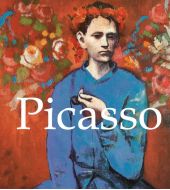 Picasso era español y por eso, según dicen, comenzó a dibujar antes que a hablar. Cuando niño, se sintió atraído de manera instintiva hacia las herramientas del artista. En sus primeros años pasaba horas en feliz concentración dibujando espirales con un sentido y un significado que sólo él conocía. Otras veces dejaba de lado sus juegos infantiles para trazar sus primeras imágenes en la arena. Tan temprana expresión artística encerraba la promesa de un raro don. No hay que olvidar hacer mención de Málaga, pues fue ahí donde, el 25 de octubre de 1881, nació Pablo Ruiz Picasso, y fue ahí donde pasó los primeros diez años de su vida. El padre de Picasso era pintor y profesor en la Escuela de Bellas Artes y Oficios. Picasso aprendió de él los rudimentos del entrenamiento académico formal en arte. Luego fue a estudiar a la Academia de las Artes en Madrid, pero no se graduó. Antes de cumplir los dieciocho años había llegado al punto de mayor rebeldía; repudió la estética anémica de la academia junto con la prosa pedestre del realismo y, naturalmente, se unió a aquellos artistas y escritores que se llamaban a sí mismos modernistas, a los inconformistas, aquellos a los que Sabartés llamó “la élite del pensamiento catalán” y que se habían agrupado en torno al café de artistas Els Quatre Gats. Durante 1899 y 1900 los únicos temas que Picasso consideró meritorios fueron aquellos que reflejaban la “verdad final”, la fugacidad de la vida humana y la inevitabilidad de la muerte. Sus primeras obras, agrupadas bajo el nombre de “Periodo Azul” (1901-1904), consisten en pinturas con matices azulados y fueron el resultado de la influencia de un viaje que realizó por España y de la muerte de su amigo Casagemas. Aunque Picasso mismo insistió varias veces en la naturaleza subjetiva e interna de su Periodo Azul, su génesis y, en especial, el azul monocromático se explicaron durante muchos años como el simple resultado de varias influencias estéticas. Entre 1905 y 1907, Picasso inició un nuevo periodo, conocido como el “Periodo Rosa”, que se caracterizó por un estilo más alegre con colores rosados y anaranjados. En Gosol, en el verano de 1906, la forma del desnudo femenino asumió una importancia extraordinaria para Picasso; identificó una desnudez despersonalizada, original y simple con el concepto de “mujer”. La importancia que los desnudos femeninos tendrían para Picasso en cuanto a temática durante los siguientes meses (en el invierno y la primavera de 1907) se hizo patente cuando creó la composición de una pintura grande titulada Las señoritas de Aviñón. De la misma manera que el arte africano se considera como el factor que llevó al desarrollo de la estética clásica de Picasso en 1907, las lecciones de Cézanne se perciben como la piedra angular de este nuevo avance. Esto se relaciona, en primer lugar, con la concepción espacial del lienzo como una entidad compuesta, sujeta a un determinado sistema de construcción. Georges Braque, a quien Picasso conoció en el otoño de 1908 y con quien encabezó el movimiento cubista durante los seis años de su apogeo, quedó asombrado por la semejanza que los experimentos pictóricos de Picasso guardaban con los suyos. En cierto momento, explicó: “La dirección principal del cubismo era la materialización del espacio”. Después de su periodo cubista, en la década de 1920, Picasso volvió a un estilo artístico más figurativo y se acercó más al movimiento surrealista. Representó cuerpos monstruosos y distorsionados, pero en un estilo muy personal. Después del bombardeo de Guernica en 1937, Picasso creó una de sus obras más famosas, que se convirtió en símbolo crudo de los horrores de esa guerra y, de hecho, de todas las guerras. En la década de 1960, su estilo artístico cambió de nuevo y Picasso comenzó a volver la mirada al arte de los grandes maestros y a basar sus pinturas en la obra de Velázquez, Poussin, Goya, Manet, Courbet y Delacroix. Los últimos trabajos de Picasso fueron una mezcla de estilos que dio lugar a una obra más colorida, expresiva y optimista. Picasso murió en 1973, en su villa de Mougins. El simbolista ruso Georgy Chulkov escribió: “La muerte de Picasso es una tragedia. Sin embargo, aquellos que creen que pueden imitar a Picasso y aprender de él son ciegos e inocentes. ¿Aprender qué? Estas formas no tienen una contraparte emocional fuera del infierno, pero estar en el infierno significa anticipar la muerte. Los cubistas difícilmente cuentan con un conocimiento tan ilimitado”. ... Далее
Picasso era español y por eso, según dicen, comenzó a dibujar antes que a hablar. Cuando niño, se sintió atraído de manera instintiva hacia las herramientas del artista. En sus primeros años pasaba horas en feliz concentración dibujando espirales con un sentido y un significado que sólo él conocía. Otras veces dejaba de lado sus juegos infantiles para trazar sus primeras imágenes en la arena. Tan temprana expresión artística encerraba la promesa de un raro don. No hay que olvidar hacer mención de Málaga, pues fue ahí donde, el 25 de octubre de 1881, nació Pablo Ruiz Picasso, y fue ahí donde pasó los primeros diez años de su vida. El padre de Picasso era pintor y profesor en la Escuela de Bellas Artes y Oficios. Picasso aprendió de él los rudimentos del entrenamiento académico formal en arte. Luego fue a estudiar a la Academia de las Artes en Madrid, pero no se graduó. Antes de cumplir los dieciocho años había llegado al punto de mayor rebeldía; repudió la estética anémica de la academia junto con la prosa pedestre del realismo y, naturalmente, se unió a aquellos artistas y escritores que se llamaban a sí mismos modernistas, a los inconformistas, aquellos a los que Sabartés llamó “la élite del pensamiento catalán” y que se habían agrupado en torno al café de artistas Els Quatre Gats. Durante 1899 y 1900 los únicos temas que Picasso consideró meritorios fueron aquellos que reflejaban la “verdad final”, la fugacidad de la vida humana y la inevitabilidad de la muerte. Sus primeras obras, agrupadas bajo el nombre de “Periodo Azul” (1901-1904), consisten en pinturas con matices azulados y fueron el resultado de la influencia de un viaje que realizó por España y de la muerte de su amigo Casagemas. Aunque Picasso mismo insistió varias veces en la naturaleza subjetiva e interna de su Periodo Azul, su génesis y, en especial, el azul monocromático se explicaron durante muchos años como el simple resultado de varias influencias estéticas. Entre 1905 y 1907, Picasso inició un nuevo periodo, conocido como el “Periodo Rosa”, que se caracterizó por un estilo más alegre con colores rosados y anaranjados. En Gosol, en el verano de 1906, la forma del desnudo femenino asumió una importancia extraordinaria para Picasso; identificó una desnudez despersonalizada, original y simple con el concepto de “mujer”. La importancia que los desnudos femeninos tendrían para Picasso en cuanto a temática durante los siguientes meses (en el invierno y la primavera de 1907) se hizo patente cuando creó la composición de una pintura grande titulada Las señoritas de Aviñón. De la misma manera que el arte africano se considera como el factor que llevó al desarrollo de la estética clásica de Picasso en 1907, las lecciones de Cézanne se perciben como la piedra angular de este nuevo avance. Esto se relaciona, en primer lugar, con la concepción espacial del lienzo como una entidad compuesta, sujeta a un determinado sistema de construcción. Georges Braque, a quien Picasso conoció en el otoño de 1908 y con quien encabezó el movimiento cubista durante los seis años de su apogeo, quedó asombrado por la semejanza que los experimentos pictóricos de Picasso guardaban con los suyos. En cierto momento, explicó: “La dirección principal del cubismo era la materialización del espacio”. Después de su periodo cubista, en la década de 1920, Picasso volvió a un estilo artístico más figurativo y se acercó más al movimiento surrealista. Representó cuerpos monstruosos y distorsionados, pero en un estilo muy personal. Después del bombardeo de Guernica en 1937, Picasso creó una de sus obras más famosas, que se convirtió en símbolo crudo de los horrores de esa guerra y, de hecho, de todas las guerras. En la década de 1960, su estilo artístico cambió de nuevo y Picasso comenzó a volver la mirada al arte de los grandes maestros y a basar sus pinturas en la obra de Velázquez, Poussin, Goya, Manet, Courbet y Delacroix. Los últimos trabajos de Picasso fueron una mezcla de estilos que dio lugar a una obra más colorida, expresiva y optimista. Picasso murió en 1973, en su villa de Mougins. El simbolista ruso Georgy Chulkov escribió: “La muerte de Picasso es una tragedia. Sin embargo, aquellos que creen que pueden imitar a Picasso y aprender de él son ciegos e inocentes. ¿Aprender qué? Estas formas no tienen una contraparte emocional fuera del infierno, pero estar en el infierno significa anticipar la muerte. Los cubistas difícilmente cuentan con un conocimiento tan ilimitado”. ... Далее -
76.
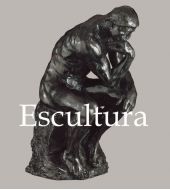 El volumen de Mega Square Escultura abarca más de 23.000 años y contiene más de 120 ejemplos de las esculturas más hermosas del mundo, desde el arte prehistórico y las estatuas egipcias hasta las obras de Miguel Ángel, Henry Moore y Niki de Saint-Phalle. Describe la gran variedad de materiales empleados y la evolución de los estilos a lo largo de los siglos, así como las peculiaridades de los principales escultores. Su formato práctico y compacto lo convierte en un regalo ideal. ... Далее
El volumen de Mega Square Escultura abarca más de 23.000 años y contiene más de 120 ejemplos de las esculturas más hermosas del mundo, desde el arte prehistórico y las estatuas egipcias hasta las obras de Miguel Ángel, Henry Moore y Niki de Saint-Phalle. Describe la gran variedad de materiales empleados y la evolución de los estilos a lo largo de los siglos, así como las peculiaridades de los principales escultores. Su formato práctico y compacto lo convierte en un regalo ideal. ... Далее -
77.
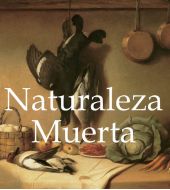 Cézanne fue capaz de transformar una taza de té en algo vivo, elevando el género de naturaleza muerta a un nivel en el que sus elementos dejan de ser objetos inanimados. Wassily Kandinsky dijo de este artista francés: “Pintó estos elementos como seres humanos porque poseía el don de adivinar la vida interior que se oculta en todas las cosas”. Además de las naturalezas muertas de Cézanne, este libro incluye también obras de artistas como Van Gogh, Matisse, Chardin y Picasso. Su formato, de gran comodidad, lo convierte en el regalo ideal. ... Далее
Cézanne fue capaz de transformar una taza de té en algo vivo, elevando el género de naturaleza muerta a un nivel en el que sus elementos dejan de ser objetos inanimados. Wassily Kandinsky dijo de este artista francés: “Pintó estos elementos como seres humanos porque poseía el don de adivinar la vida interior que se oculta en todas las cosas”. Además de las naturalezas muertas de Cézanne, este libro incluye también obras de artistas como Van Gogh, Matisse, Chardin y Picasso. Su formato, de gran comodidad, lo convierte en el regalo ideal. ... Далее -
78.
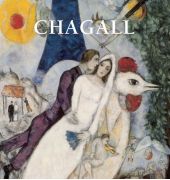 Marc Chagall nació en el seno de una familia judía sumamente estricta, para la cual la prohibición de la representación de la figura humana tenía la fuerza de un dogma. El no haber pasado el examen de admisión de la escuela Stieglitz no evitó que Chagall se uniera posteriormente a esa famosa escuela fundada por la sociedad imperial para el fomento de las artes, dirigida por Nicholas Roerich. En 1910, Chagall se mudó a París. La ciudad fue su “segunda Vitebsk”. Al principio, aislado en su pequeña habitación de Impasse du Maine en La Ruche, Chagall encontró numerosos compatriotas a los que también había atraído el prestigio de París: Lipchitz, Zadkine, Archipenko y Sutin, todos ellos destinados a mantener el “aroma” de su tierra natal. Desde su llegada, Chagall quería “descubrirlo todo”. Ante sus sorprendidos ojos, la pintura se le reveló. Aun el observador más atento y parcial tiene dificultad, en ocasiones, para distinguir al Chagal parisino del de Vitebsk. El artista no estaba lleno de contradicciones, ni tenía una personalidad dividida, pero siempre era distinto; miraba a su alrededor y en su interior, así como al mundo que le rodeaba y usaba sus ideas del momento y sus recuerdos. Tenía un estilo de pensamiento sumamente poético que le permitía seguir un camino tan complejo. Chagall estaba dotado de una cierta inmunidad estilística: se enriquecía a sí mismo sin destruir nada de su propia estructura interna. Admiró la obra de otros y la estudió con inventiva, librándose de su juvenil torpeza, pero sin perder un solo instante su autenticidad. Por momentos, Chagall parecía mirar al mundo a través del cristal mágico, sobrecargado de experimentación artística, de la Ecole de París. En tales casos, se embarcaba en un sutil y serio juego con los diversos descubrimientos del fin de siglo y volvía su mirada profética, como la de un joven bíblico, para mirarse a sí mismo con ironía y de manera pensativa en el espejo. Naturalmente, reflejó por completo y de manera extrema los descubrimientos pictóricos de Cézanne, la delicada inspiración de Modigliani y los ritmos superficiales complejos que recordaban la experimentación de los primeros cubistas (Véase Retrato en el caballete, 1914). A pesar de los análisis recientes que mencionan las fuentes judeo-rusas del pintor, heredadas o prestadas pero siempre sublimes, así como de sus relaciones formales, siempre hay algo de misterio en el arte de Chagall. Un misterio que tal vez descansa en la naturaleza misma de su arte, en el que utiliza sus experiencias y recuerdos. Pintar es la vida, y tal vez, la vida es pintar. ... Далее
Marc Chagall nació en el seno de una familia judía sumamente estricta, para la cual la prohibición de la representación de la figura humana tenía la fuerza de un dogma. El no haber pasado el examen de admisión de la escuela Stieglitz no evitó que Chagall se uniera posteriormente a esa famosa escuela fundada por la sociedad imperial para el fomento de las artes, dirigida por Nicholas Roerich. En 1910, Chagall se mudó a París. La ciudad fue su “segunda Vitebsk”. Al principio, aislado en su pequeña habitación de Impasse du Maine en La Ruche, Chagall encontró numerosos compatriotas a los que también había atraído el prestigio de París: Lipchitz, Zadkine, Archipenko y Sutin, todos ellos destinados a mantener el “aroma” de su tierra natal. Desde su llegada, Chagall quería “descubrirlo todo”. Ante sus sorprendidos ojos, la pintura se le reveló. Aun el observador más atento y parcial tiene dificultad, en ocasiones, para distinguir al Chagal parisino del de Vitebsk. El artista no estaba lleno de contradicciones, ni tenía una personalidad dividida, pero siempre era distinto; miraba a su alrededor y en su interior, así como al mundo que le rodeaba y usaba sus ideas del momento y sus recuerdos. Tenía un estilo de pensamiento sumamente poético que le permitía seguir un camino tan complejo. Chagall estaba dotado de una cierta inmunidad estilística: se enriquecía a sí mismo sin destruir nada de su propia estructura interna. Admiró la obra de otros y la estudió con inventiva, librándose de su juvenil torpeza, pero sin perder un solo instante su autenticidad. Por momentos, Chagall parecía mirar al mundo a través del cristal mágico, sobrecargado de experimentación artística, de la Ecole de París. En tales casos, se embarcaba en un sutil y serio juego con los diversos descubrimientos del fin de siglo y volvía su mirada profética, como la de un joven bíblico, para mirarse a sí mismo con ironía y de manera pensativa en el espejo. Naturalmente, reflejó por completo y de manera extrema los descubrimientos pictóricos de Cézanne, la delicada inspiración de Modigliani y los ritmos superficiales complejos que recordaban la experimentación de los primeros cubistas (Véase Retrato en el caballete, 1914). A pesar de los análisis recientes que mencionan las fuentes judeo-rusas del pintor, heredadas o prestadas pero siempre sublimes, así como de sus relaciones formales, siempre hay algo de misterio en el arte de Chagall. Un misterio que tal vez descansa en la naturaleza misma de su arte, en el que utiliza sus experiencias y recuerdos. Pintar es la vida, y tal vez, la vida es pintar. ... Далее -
79.
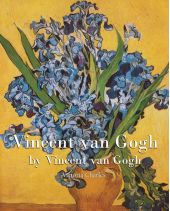 The incarnation of the myth of a cursed artist, Vincent van Gogh (1853-1890) is a legend who became a reference for modern art. An Expressionist during the Post-Impressionist movement, his art was misunderstood during his lifetime. In Holland, he partook in the Dutch realist painting movement by studying peasant characters. Anxious and depressed, Vincent van Gogh produced more than 2000 artworks, yet sold only one in his lifetime. A self-made artist, his work is known for its rough and emotional beauty and is amongst the most popular in the art market today. ... Далее
The incarnation of the myth of a cursed artist, Vincent van Gogh (1853-1890) is a legend who became a reference for modern art. An Expressionist during the Post-Impressionist movement, his art was misunderstood during his lifetime. In Holland, he partook in the Dutch realist painting movement by studying peasant characters. Anxious and depressed, Vincent van Gogh produced more than 2000 artworks, yet sold only one in his lifetime. A self-made artist, his work is known for its rough and emotional beauty and is amongst the most popular in the art market today. ... Далее -
80.
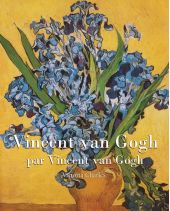 Incarnation du mythe de l artiste maudit, Vincent van Gogh (1853-1890) est devenu une référence de l art contemporain. Expressionniste pendant le courant postimpressioniste, son art fut incompris tout au long de sa vie. Vincent van Gogh réalisa plus de 2000 ?uvres mais n en vendra qu une seule tout au long de sa vie. Peintre autodidacte, sa peinture est reconnue pour sa beauté à la fois sensible et âpre. Il est aujourd hui l un des artistes les plus en vogue sur le marché de l art. ... Далее
Incarnation du mythe de l artiste maudit, Vincent van Gogh (1853-1890) est devenu une référence de l art contemporain. Expressionniste pendant le courant postimpressioniste, son art fut incompris tout au long de sa vie. Vincent van Gogh réalisa plus de 2000 ?uvres mais n en vendra qu une seule tout au long de sa vie. Peintre autodidacte, sa peinture est reconnue pour sa beauté à la fois sensible et âpre. Il est aujourd hui l un des artistes les plus en vogue sur le marché de l art. ... Далее -
81.
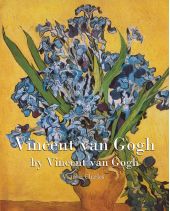 The incarnation of the myth of a cursed artist, Vincent van Gogh (1853-1890) is a legend who became a reference for modern art. An Expressionist during the Post-Impressionist movement, his art was misunderstood during his lifetime. In Holland, he partook in the Dutch realist painting movement by studying peasant characters. Anxious and depressed, Vincent van Gogh produced more than 2000 artworks, yet sold only one in his lifetime. A self-made artist, his work is known for its rough and emotional beauty and is amongst the most popular in the art market today. ... Далее
The incarnation of the myth of a cursed artist, Vincent van Gogh (1853-1890) is a legend who became a reference for modern art. An Expressionist during the Post-Impressionist movement, his art was misunderstood during his lifetime. In Holland, he partook in the Dutch realist painting movement by studying peasant characters. Anxious and depressed, Vincent van Gogh produced more than 2000 artworks, yet sold only one in his lifetime. A self-made artist, his work is known for its rough and emotional beauty and is amongst the most popular in the art market today. ... Далее -
82.
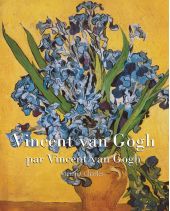 Incarnation du mythe de l artiste maudit, Vincent van Gogh (1853-1890) est devenu une référence de l art contemporain. Expressionniste pendant le courant postimpressioniste, son art fut incompris tout au long de sa vie. Vincent van Gogh réalisa plus de 2000 ?uvres mais n en vendra qu une seule tout au long de sa vie. Peintre autodidacte, sa peinture est reconnue pour sa beauté à la fois sensible et âpre. Il est aujourd hui l un des artistes les plus en vogue sur le marché de l art. ... Далее
Incarnation du mythe de l artiste maudit, Vincent van Gogh (1853-1890) est devenu une référence de l art contemporain. Expressionniste pendant le courant postimpressioniste, son art fut incompris tout au long de sa vie. Vincent van Gogh réalisa plus de 2000 ?uvres mais n en vendra qu une seule tout au long de sa vie. Peintre autodidacte, sa peinture est reconnue pour sa beauté à la fois sensible et âpre. Il est aujourd hui l un des artistes les plus en vogue sur le marché de l art. ... Далее -
83.
 Long thought of as the neglected stepchild of painting, the art of Drawing has recently begun to enjoy a place in the sun. With major museums around the world, from the Met to the Uffizi, mounting exhibitions focussed on the art of draughtsmanship, Drawing is receiving more critical and academic attention than ever before. This captivating text gives readers a sweeping analysis of the history of Drawing, from Renaissance greats like Leonardo da Vinci and Michelangelo, to Modernist masters like M.C. Escher, Pablo Picasso, and everyone in between. ... Далее
Long thought of as the neglected stepchild of painting, the art of Drawing has recently begun to enjoy a place in the sun. With major museums around the world, from the Met to the Uffizi, mounting exhibitions focussed on the art of draughtsmanship, Drawing is receiving more critical and academic attention than ever before. This captivating text gives readers a sweeping analysis of the history of Drawing, from Renaissance greats like Leonardo da Vinci and Michelangelo, to Modernist masters like M.C. Escher, Pablo Picasso, and everyone in between. ... Далее -
84.
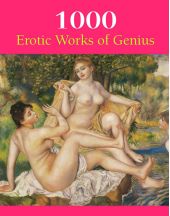 Different eras and civilisations have treated erotic images with varying acceptance and different concepts of erotica and these tendencies are reflected within the works themselves. From ancient statues devoted to fertility to Renaissance engravings designed to encourage procreation within marriage, erotic art has always held an important place in society. Here, for the first time, 1,000 authentic images of erotic art have been brought together, spanning the centuries and civilisations to demonstrate the evolution of the genre. In an era such as ours when eroticism is abundant in advertising and the media, this book gives a refreshing insight into the background of erotic imagery, highlighting the artistic value of beautiful works of eroticism executed with skill. ... Далее
Different eras and civilisations have treated erotic images with varying acceptance and different concepts of erotica and these tendencies are reflected within the works themselves. From ancient statues devoted to fertility to Renaissance engravings designed to encourage procreation within marriage, erotic art has always held an important place in society. Here, for the first time, 1,000 authentic images of erotic art have been brought together, spanning the centuries and civilisations to demonstrate the evolution of the genre. In an era such as ours when eroticism is abundant in advertising and the media, this book gives a refreshing insight into the background of erotic imagery, highlighting the artistic value of beautiful works of eroticism executed with skill. ... Далее -
85.
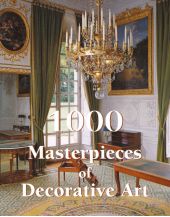 From ancient Sumerian pottery to Tiffany stained glass, Decorative Art had been a fundamental part of the human experience for generations. While Fine Art is confined to galleries and museums, Decorative Art is the art of the every day, combining beauty with functionality in objects ranging from the prosaic to the fantastical. In this work, authors Albert Jacquemart and Émile Bayard celebrate the beauty and artistic potential behind even the most quotidian object. Readers will walk away from this text with a newfound appreciation for the subtle artistry of the manufactured world. ... Далее
From ancient Sumerian pottery to Tiffany stained glass, Decorative Art had been a fundamental part of the human experience for generations. While Fine Art is confined to galleries and museums, Decorative Art is the art of the every day, combining beauty with functionality in objects ranging from the prosaic to the fantastical. In this work, authors Albert Jacquemart and Émile Bayard celebrate the beauty and artistic potential behind even the most quotidian object. Readers will walk away from this text with a newfound appreciation for the subtle artistry of the manufactured world. ... Далее -
86.
 Featuring 1,000 internationally recognised paintings, this collection spans the history of art from the 13th century to the present, from the early stirrings of the Renaissance movement in Italy to the boundary-pushing experiments of the Abstract Expressionists in post-World War II America. These cultural treasures are presented in historical context, along with extended captions and biographies of one hundred of the most influential artists. Each chapter reviews major events that had an impact on the art world, defines significant techniques, and comments on relevant innovations. An artistic, cultural, and educational resource, this book invites us to consider the interaction between history and art, and the influence artists through the ages have had on each other, as well as the future of the discipline. The traditional and the controversial, the mythic and the understated, the quietly subversive and the deliberately challenging – all are thought-provoking if only for their persistence, and together they document the progress of Western history through the eyes of our most creative visionaries. ... Далее
Featuring 1,000 internationally recognised paintings, this collection spans the history of art from the 13th century to the present, from the early stirrings of the Renaissance movement in Italy to the boundary-pushing experiments of the Abstract Expressionists in post-World War II America. These cultural treasures are presented in historical context, along with extended captions and biographies of one hundred of the most influential artists. Each chapter reviews major events that had an impact on the art world, defines significant techniques, and comments on relevant innovations. An artistic, cultural, and educational resource, this book invites us to consider the interaction between history and art, and the influence artists through the ages have had on each other, as well as the future of the discipline. The traditional and the controversial, the mythic and the understated, the quietly subversive and the deliberately challenging – all are thought-provoking if only for their persistence, and together they document the progress of Western history through the eyes of our most creative visionaries. ... Далее -
87.
 According to the predominant standards, a portrait should be a faithful representation of its model. However, this is not always the case. This gallery of 1,000 portraits illustrates how the genre has been transformed throughout history, and has proven itself to be much more complex than a simple imitation of reality. Beyond exhibiting the artist’s skill, the portrait must surpass the task of imitation, as just and precise as it may be, to translate both the intention of the artist as well as that of its patron, without betraying either’s wishes. Therefore, these silent witnesses, carefully selected in these pages, reveal more than faces of historic figures or anonymous subjects: they reveal a psychology more than an identity, illustrate an allegory, serve as political and religious propaganda, and embody the customs of their epochs. With its impressive number of masterpieces, biographies, and commentaries on works, this book presents and analyses different portraits, giving a reflection of the evolution of society, and above all the upheavals of a genre that has dramatically shaped the history of art. ... Далее
According to the predominant standards, a portrait should be a faithful representation of its model. However, this is not always the case. This gallery of 1,000 portraits illustrates how the genre has been transformed throughout history, and has proven itself to be much more complex than a simple imitation of reality. Beyond exhibiting the artist’s skill, the portrait must surpass the task of imitation, as just and precise as it may be, to translate both the intention of the artist as well as that of its patron, without betraying either’s wishes. Therefore, these silent witnesses, carefully selected in these pages, reveal more than faces of historic figures or anonymous subjects: they reveal a psychology more than an identity, illustrate an allegory, serve as political and religious propaganda, and embody the customs of their epochs. With its impressive number of masterpieces, biographies, and commentaries on works, this book presents and analyses different portraits, giving a reflection of the evolution of society, and above all the upheavals of a genre that has dramatically shaped the history of art. ... Далее -
88.
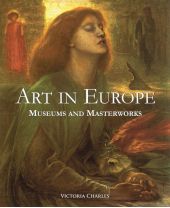 The European continent gathers together, without a doubt, the most famous works of art, evidence of the history of Western art. The cultural capitals and their emblematic museums contain paintings, sculptures, or rather works of art, devised by the great artists, representative of European culture. From Madrid to London, passing through Prague, the major works of the old continent are presented here. Thanks to detailed information about the museums and their collections, you, too, can explore and discover Europe’s fascinating cultural heritage. ... Далее
The European continent gathers together, without a doubt, the most famous works of art, evidence of the history of Western art. The cultural capitals and their emblematic museums contain paintings, sculptures, or rather works of art, devised by the great artists, representative of European culture. From Madrid to London, passing through Prague, the major works of the old continent are presented here. Thanks to detailed information about the museums and their collections, you, too, can explore and discover Europe’s fascinating cultural heritage. ... Далее -
89.
 Russian countryside is some of the world’s most lovely, from the celebrated explosions of wild flowers that fill its forests in the spring, to the icy winter tundra that defeated the advances of Napoleon and Hitler, and provided the backdrop for the drama of many of Russian literature’s celebrated scenes. And no one immortalized it better than Ivan Shishkin (1832-1898), a Russian landscape painter. In this comprehensive work of scholarship, Irina Shuvalova and Victoria Charles make a thorough examination of Shishkin’s work. ... Далее
Russian countryside is some of the world’s most lovely, from the celebrated explosions of wild flowers that fill its forests in the spring, to the icy winter tundra that defeated the advances of Napoleon and Hitler, and provided the backdrop for the drama of many of Russian literature’s celebrated scenes. And no one immortalized it better than Ivan Shishkin (1832-1898), a Russian landscape painter. In this comprehensive work of scholarship, Irina Shuvalova and Victoria Charles make a thorough examination of Shishkin’s work. ... Далее -
90.
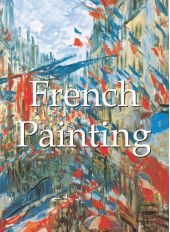 The influence of works by French artists extends itself across all artistic styles, and many French works have gained world fame as classics. This book gives an overview of the French milestones in still lifes, portraits, and landscapes, and includes artists like Poussin, Clouet, Moreau, Millet, Courbet, Signac, and Rouault. The convenient format makes the Mega Square edition an ideal gift for any art lover. ... Далее
The influence of works by French artists extends itself across all artistic styles, and many French works have gained world fame as classics. This book gives an overview of the French milestones in still lifes, portraits, and landscapes, and includes artists like Poussin, Clouet, Moreau, Millet, Courbet, Signac, and Rouault. The convenient format makes the Mega Square edition an ideal gift for any art lover. ... Далее -
91.
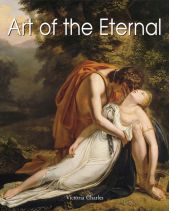 Since the first funerary statues were placed in the first sepulchres, the ideas of death and the afterlife have always held a prominent place at the heart of the art world. An unlimited source of inspiration where artists can search for the expression of the infinite, death remains the object of numerous rich illustrations, as various as they are mysterious. The ancient Egyptian Book of the Dead, the forever sleeping statues on medieval tombs, and the Romantic and Symbolist movements of the 19th century are all evidence of the incessant interest that fuels the creation of artworks featuring themes of death and what lies beyond it. In this work, Victoria Charles analyses how, through the centuries, art has become the reflection of these interrogations linked to mankind’s fate and the hereafter. ... Далее
Since the first funerary statues were placed in the first sepulchres, the ideas of death and the afterlife have always held a prominent place at the heart of the art world. An unlimited source of inspiration where artists can search for the expression of the infinite, death remains the object of numerous rich illustrations, as various as they are mysterious. The ancient Egyptian Book of the Dead, the forever sleeping statues on medieval tombs, and the Romantic and Symbolist movements of the 19th century are all evidence of the incessant interest that fuels the creation of artworks featuring themes of death and what lies beyond it. In this work, Victoria Charles analyses how, through the centuries, art has become the reflection of these interrogations linked to mankind’s fate and the hereafter. ... Далее -
92.
 A bridge is a link between two worlds, a point of tension between two separate and often disparate locations. Free, belonging neither to one region or another, the bridge imposes upon the landscape and defies nature. Its existence embodies the will of mankind to construct these necessary bonds between people and places. A symbol of progress and innovation, the bridge, anonymous demonstration of the mastery and the durability of new techniques, is gradually becoming more and more light and fluid, constantly defying state-of-the-art technology. As veritable aesthetic creations, bridges appear today not only as examples of masterful engineering, but also as incredible works of art. With its magnificent photographs, this book invites the reader to rediscover these modern-day sculptures. ... Далее
A bridge is a link between two worlds, a point of tension between two separate and often disparate locations. Free, belonging neither to one region or another, the bridge imposes upon the landscape and defies nature. Its existence embodies the will of mankind to construct these necessary bonds between people and places. A symbol of progress and innovation, the bridge, anonymous demonstration of the mastery and the durability of new techniques, is gradually becoming more and more light and fluid, constantly defying state-of-the-art technology. As veritable aesthetic creations, bridges appear today not only as examples of masterful engineering, but also as incredible works of art. With its magnificent photographs, this book invites the reader to rediscover these modern-day sculptures. ... Далее -
93.
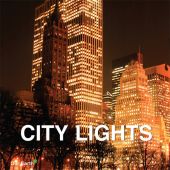 A symbol of massive crowds and solitary desires, the city holds promise for all those that pass through it. Its meandering streets, unexplored neighbourhoods and incessant noise create a landscape that captivates the observer. The lights of the city can conceal or reveal it, transforming its appearance hour by hour, offering countless facets to the passerby. While the light of morning pulls the city from its torpor and renews it for the dawning day, the nocturnal illumination plunges the pedestrian into the strangeness of its mysteries, creating a striking and ephemeral beauty. Between the shadow and the light, these original photographs reveal the fragile glow of the city, and help us rediscover the eternal pulse of these great capitals, simultaneously surprising and sublime. ... Далее
A symbol of massive crowds and solitary desires, the city holds promise for all those that pass through it. Its meandering streets, unexplored neighbourhoods and incessant noise create a landscape that captivates the observer. The lights of the city can conceal or reveal it, transforming its appearance hour by hour, offering countless facets to the passerby. While the light of morning pulls the city from its torpor and renews it for the dawning day, the nocturnal illumination plunges the pedestrian into the strangeness of its mysteries, creating a striking and ephemeral beauty. Between the shadow and the light, these original photographs reveal the fragile glow of the city, and help us rediscover the eternal pulse of these great capitals, simultaneously surprising and sublime. ... Далее -
94.
 Born in the Industrial Revolution, the factory has long been considered like a monster of iron, subjugating the individual to the collective in an act of mass dehumanisation.Turning away from the pure functionality for which it was built, the factory is evolving into an aesthetic space, sometimes transformed into modern lofts or a museum of contemporary art. The surprising photographs featured in this work help us rediscover the volume, purity of line, beauty, and stunningly modern architecture of these steel-boned monuments. ... Далее
Born in the Industrial Revolution, the factory has long been considered like a monster of iron, subjugating the individual to the collective in an act of mass dehumanisation.Turning away from the pure functionality for which it was built, the factory is evolving into an aesthetic space, sometimes transformed into modern lofts or a museum of contemporary art. The surprising photographs featured in this work help us rediscover the volume, purity of line, beauty, and stunningly modern architecture of these steel-boned monuments. ... Далее -
95.
 The lighthouse, an indefatigable watchman, ceaselessly guides boats to their ports.This beacon of maritime signalisation has guided sailors since antiquity.The first known lighthouse appeared on the island of Pharos, and was the remarkable Lighthouse of Alexandria; however, it seems that volcanoes like Stromboli and its frequent eruptions were possibly at the origin of this invention, as the fires guided boats to their shores. Faced with the increasing development of modern navigational aids, these lone sentinels do not hold the same functional importance today. However, this work emphasises not only their role as a major architectural development, but also the place that they hold in the cultural heritage of the world. From the Lighthouse of the Whales (France) to the Lighthouse at the End of the World (Tierra del Fuego,Argentina), and passing by the Lighthouse of Green Island (Canada) and the Bell Rock Lighthouse (Scotland), this work invites the reader to rediscover the richness of these witnesses of other times. ... Далее
The lighthouse, an indefatigable watchman, ceaselessly guides boats to their ports.This beacon of maritime signalisation has guided sailors since antiquity.The first known lighthouse appeared on the island of Pharos, and was the remarkable Lighthouse of Alexandria; however, it seems that volcanoes like Stromboli and its frequent eruptions were possibly at the origin of this invention, as the fires guided boats to their shores. Faced with the increasing development of modern navigational aids, these lone sentinels do not hold the same functional importance today. However, this work emphasises not only their role as a major architectural development, but also the place that they hold in the cultural heritage of the world. From the Lighthouse of the Whales (France) to the Lighthouse at the End of the World (Tierra del Fuego,Argentina), and passing by the Lighthouse of Green Island (Canada) and the Bell Rock Lighthouse (Scotland), this work invites the reader to rediscover the richness of these witnesses of other times. ... Далее -
96.
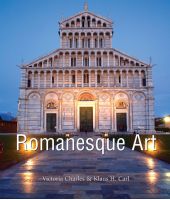 In art history, the term ‘Romanesque art’ distinguishes the period between the beginning of the 11 th and the end of the 12 th century. This era showed a great diversity of regional schools each with their own unique style. In architecture as well as in sculpture, Romanesque art is marked by raw forms. Through its rich iconography and captivating text, this work reclaims the importance of this art which is today often overshadowed by the later Gothic style. ... Далее
In art history, the term ‘Romanesque art’ distinguishes the period between the beginning of the 11 th and the end of the 12 th century. This era showed a great diversity of regional schools each with their own unique style. In architecture as well as in sculpture, Romanesque art is marked by raw forms. Through its rich iconography and captivating text, this work reclaims the importance of this art which is today often overshadowed by the later Gothic style. ... Далее -
97.
 Gothic art finds its roots in the powerful architecture of the cathedrals of northern France. It is a medieval art movement that evolved throughout Europe over more than 200 years. Leaving curved Roman forms behind, the architects started using flying buttresses and pointed arches to open up cathedrals to daylight. A period of great economic and social change, the Gothic era also saw the development of a new iconography celebrating the Holy Mary – in drastic contrast to the fearful themes of dark Roman times. Full of rich changes in all of the various art forms (architecture, sculpture, painting, etc.), Gothic art paved the way for the Italian Renaissance and International Gothic movement. ... Далее
Gothic art finds its roots in the powerful architecture of the cathedrals of northern France. It is a medieval art movement that evolved throughout Europe over more than 200 years. Leaving curved Roman forms behind, the architects started using flying buttresses and pointed arches to open up cathedrals to daylight. A period of great economic and social change, the Gothic era also saw the development of a new iconography celebrating the Holy Mary – in drastic contrast to the fearful themes of dark Roman times. Full of rich changes in all of the various art forms (architecture, sculpture, painting, etc.), Gothic art paved the way for the Italian Renaissance and International Gothic movement. ... Далее -
98.
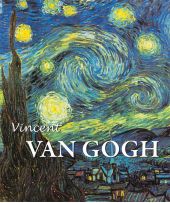 Vincent van Gogh’s life and work are so intertwined that it is hardly possible to observe one without thinking of the other. Van Gogh has indeed become the incarnation of the suffering, misunderstood martyr of modern art, the emblem of the artist as an outsider. An article, published in 1890, gave details about van Gogh’s illness. The author of the article saw the painter as “a terrible and demented genius, often sublime, sometimes grotesque, always at the brink of the pathological.” Very little is known about Vincent’s childhood. At the age of eleven he had to leave “the human nest”, as he called it himself, for various boarding schools. The first portrait shows us van Gogh as an earnest nineteen year old. At that time he had already been at work for three years in The Hague and, later, in London in the gallery Goupil & Co. In 1874 his love for Ursula Loyer ended in disaster and a year later he was transferred to Paris, against his will. After a particularly heated argument during Christmas holidays in 1881, his father, a pastor, ordered Vincent to leave. With this final break, he abandoned his family name and signed his canvases simply “Vincent”. He left for Paris and never returned to Holland. In Paris he came to know Paul Gauguin, whose paintings he greatly admired. The self-portrait was the main subject of Vincent’s work from 1886c88. In February 1888 Vincent left Paris for Arles and tried to persuade Gauguin to join him. The months of waiting for Gauguin were the most productive time in van Gogh’s life. He wanted to show his friend as many pictures as possible and decorate the Yellow House. But Gauguin did not share his views on art and finally returned to Paris. On 7 January, 1889, fourteen days after his famous self-mutilation, Vincent left the hospital where he was convalescing. Although he hoped to recover from and to forget his madness, but he actually came back twice more in the same year. During his last stay in hospital, Vincent painted landscapes in which he recreated the world of his childhood. It is said that Vincent van Gogh shot himself in the side in a field but decided to return to the inn and went to bed. The landlord informed Dr Gachet and his brother Theo, who described the last moments of his life which ended on 29 July, 1890: “I wanted to die. While I was sitting next to him promising that we would try to heal him. […], he answered, ‘La tristesse durera toujours (The sadness will last forever).’” ... Далее
Vincent van Gogh’s life and work are so intertwined that it is hardly possible to observe one without thinking of the other. Van Gogh has indeed become the incarnation of the suffering, misunderstood martyr of modern art, the emblem of the artist as an outsider. An article, published in 1890, gave details about van Gogh’s illness. The author of the article saw the painter as “a terrible and demented genius, often sublime, sometimes grotesque, always at the brink of the pathological.” Very little is known about Vincent’s childhood. At the age of eleven he had to leave “the human nest”, as he called it himself, for various boarding schools. The first portrait shows us van Gogh as an earnest nineteen year old. At that time he had already been at work for three years in The Hague and, later, in London in the gallery Goupil & Co. In 1874 his love for Ursula Loyer ended in disaster and a year later he was transferred to Paris, against his will. After a particularly heated argument during Christmas holidays in 1881, his father, a pastor, ordered Vincent to leave. With this final break, he abandoned his family name and signed his canvases simply “Vincent”. He left for Paris and never returned to Holland. In Paris he came to know Paul Gauguin, whose paintings he greatly admired. The self-portrait was the main subject of Vincent’s work from 1886c88. In February 1888 Vincent left Paris for Arles and tried to persuade Gauguin to join him. The months of waiting for Gauguin were the most productive time in van Gogh’s life. He wanted to show his friend as many pictures as possible and decorate the Yellow House. But Gauguin did not share his views on art and finally returned to Paris. On 7 January, 1889, fourteen days after his famous self-mutilation, Vincent left the hospital where he was convalescing. Although he hoped to recover from and to forget his madness, but he actually came back twice more in the same year. During his last stay in hospital, Vincent painted landscapes in which he recreated the world of his childhood. It is said that Vincent van Gogh shot himself in the side in a field but decided to return to the inn and went to bed. The landlord informed Dr Gachet and his brother Theo, who described the last moments of his life which ended on 29 July, 1890: “I wanted to die. While I was sitting next to him promising that we would try to heal him. […], he answered, ‘La tristesse durera toujours (The sadness will last forever).’” ... Далее -
99.
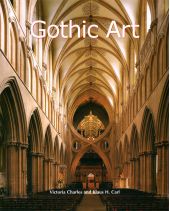 Gothic art finds its roots in the powerful architecture of the cathedrals of northern France. It is a medieval art movement that evolved throughout Europe over more than 200 years. Leaving curved Roman forms behind, the architects started using flying buttresses and pointed arches to open up cathedrals to daylight. A period of great economic and social change, the Gothic era also saw the development of a new iconography celebrating the Holy Mary – in drastic contrast to the fearful themes of dark Roman times. Full of rich changes in all of the various art forms (architecture, sculpture, painting, etc.), Gothic art paved the way for the Italian Renaissance and International Gothic movement. ... Далее
Gothic art finds its roots in the powerful architecture of the cathedrals of northern France. It is a medieval art movement that evolved throughout Europe over more than 200 years. Leaving curved Roman forms behind, the architects started using flying buttresses and pointed arches to open up cathedrals to daylight. A period of great economic and social change, the Gothic era also saw the development of a new iconography celebrating the Holy Mary – in drastic contrast to the fearful themes of dark Roman times. Full of rich changes in all of the various art forms (architecture, sculpture, painting, etc.), Gothic art paved the way for the Italian Renaissance and International Gothic movement. ... Далее -
100.
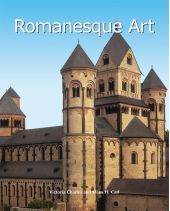 In art history, the term ‘Romanesque art’ distinguishes the period between the beginning of the 11th and the end of the 12th century. This era showed a great diversity of regional schools each with their own unique style. In architecture as well as in sculpture, Romanesque art is marked by raw forms. Through its rich iconography and captivating text, this work reclaims the importance of this art which is today often overshadowed by the later Gothic style. ... Далее
In art history, the term ‘Romanesque art’ distinguishes the period between the beginning of the 11th and the end of the 12th century. This era showed a great diversity of regional schools each with their own unique style. In architecture as well as in sculpture, Romanesque art is marked by raw forms. Through its rich iconography and captivating text, this work reclaims the importance of this art which is today often overshadowed by the later Gothic style. ... Далее -
101.
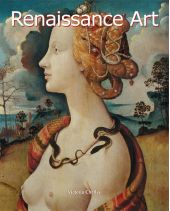 The Renaissance began at the end of the 14th century in Italy and had extended across the whole of Europe by the second half of the 16th century. The rediscovery of the splendour of ancient Greece and Rome marked the beginning of the rebirth of the arts following the break-down of the dogmatic certitude of the Middle Ages. A number of artists began to innovate in the domains of painting, sculpture, and architecture. Depicting the ideal and the actual, the sacred and the profane, the period provided a frame of reference which influenced European art over the next four centuries. Leonardo da Vinci, Michelangelo, Botticelli, Fra Angelico, Giorgione, Mantegna, Raphael, Dürer and Bruegel are among the artists who made considerable contributions to the art of the Renaissance. ... Далее
The Renaissance began at the end of the 14th century in Italy and had extended across the whole of Europe by the second half of the 16th century. The rediscovery of the splendour of ancient Greece and Rome marked the beginning of the rebirth of the arts following the break-down of the dogmatic certitude of the Middle Ages. A number of artists began to innovate in the domains of painting, sculpture, and architecture. Depicting the ideal and the actual, the sacred and the profane, the period provided a frame of reference which influenced European art over the next four centuries. Leonardo da Vinci, Michelangelo, Botticelli, Fra Angelico, Giorgione, Mantegna, Raphael, Dürer and Bruegel are among the artists who made considerable contributions to the art of the Renaissance. ... Далее -
102.
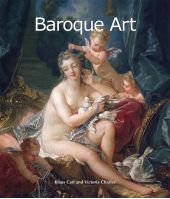 The Baroque period lasted from the beginning of the seventeenth century to the middle of the eighteenth century. Baroque art was artists’ response to the Catholic Church’s demand for solemn grandeur following the Council of Trent, and through its monumentality and grandiloquence it seduced the great European courts. Amongst the Baroque arts, architecture has, without doubt, left the greatest mark in Europe: the continent is dotted with magnificent Baroque churches and palaces, commissioned by patrons at the height of their power. The works of Gian Lorenzo Bernini of the Southern School and Peter Paul Rubens of the Northern School alone show the importance of this artistic period. Rich in images encompassing the arts of painting, sculpture and architecture, this work offers a complete insight into this passionate period in the history of art. ... Далее
The Baroque period lasted from the beginning of the seventeenth century to the middle of the eighteenth century. Baroque art was artists’ response to the Catholic Church’s demand for solemn grandeur following the Council of Trent, and through its monumentality and grandiloquence it seduced the great European courts. Amongst the Baroque arts, architecture has, without doubt, left the greatest mark in Europe: the continent is dotted with magnificent Baroque churches and palaces, commissioned by patrons at the height of their power. The works of Gian Lorenzo Bernini of the Southern School and Peter Paul Rubens of the Northern School alone show the importance of this artistic period. Rich in images encompassing the arts of painting, sculpture and architecture, this work offers a complete insight into this passionate period in the history of art. ... Далее -
103.
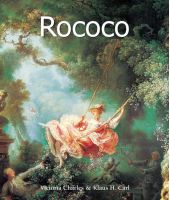 Deriving from the French word rocaille, in reference to the curved forms of shellfish, and the Italian barocco, the French created the term ‘Rococo’. Appearing at the beginning of the 18th century, it rapidly spread to the whole of Europe. Extravagant and light, Rococo responded perfectly to the spontaneity of the aristocracy of the time. In many aspects, this art was linked to its predecessor, Baroque, and it is thus also referred to as late Baroque style. While artists such as Tiepolo, Boucher and Reynolds carried the style to its apogee, the movement was often condemned for its superficiality. In the second half of the 18th century, Rococo began its decline. At the end of the century, facing the advent of Neoclassicism, it was plunged into obscurity. It had to wait nearly a century before art historians could restore it to the radiance of its golden age, which is rediscovered in this work by Klaus H. Carl and Victoria Charles. ... Далее
Deriving from the French word rocaille, in reference to the curved forms of shellfish, and the Italian barocco, the French created the term ‘Rococo’. Appearing at the beginning of the 18th century, it rapidly spread to the whole of Europe. Extravagant and light, Rococo responded perfectly to the spontaneity of the aristocracy of the time. In many aspects, this art was linked to its predecessor, Baroque, and it is thus also referred to as late Baroque style. While artists such as Tiepolo, Boucher and Reynolds carried the style to its apogee, the movement was often condemned for its superficiality. In the second half of the 18th century, Rococo began its decline. At the end of the century, facing the advent of Neoclassicism, it was plunged into obscurity. It had to wait nearly a century before art historians could restore it to the radiance of its golden age, which is rediscovered in this work by Klaus H. Carl and Victoria Charles. ... Далее -
104.
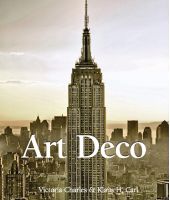 Art Deco style was established on the ashes of a disappeared world, the one from before the First World War, and on the foundation stone of a world yet to become, opened to the most undisclosed promises. Forgetting herself in the whirl of Jazz Age and the euphoria of the “Années Folles”, the Garçonne with her linear shape reflects the architectural style of Art Deco: to the rounded curves succeed the simple and plain androgynous straight line… Architecture, painting, furniture and sculpture, dissected by the author, proclaim the druthers for sharp lines and broken angles. Although ephemeral, this movement keeps on influencing contemporary design. ... Далее
Art Deco style was established on the ashes of a disappeared world, the one from before the First World War, and on the foundation stone of a world yet to become, opened to the most undisclosed promises. Forgetting herself in the whirl of Jazz Age and the euphoria of the “Années Folles”, the Garçonne with her linear shape reflects the architectural style of Art Deco: to the rounded curves succeed the simple and plain androgynous straight line… Architecture, painting, furniture and sculpture, dissected by the author, proclaim the druthers for sharp lines and broken angles. Although ephemeral, this movement keeps on influencing contemporary design. ... Далее -
105.
 Picasso was born a Spaniard and, so they say, began to draw before he could speak. As an infant he was instinctively attracted to artist’s tools. In early childhood he could spend hours in happy concentration drawing spirals with a sense and meaning known only to himself. At other times, shunning children’s games, he traced his first pictures in the sand. This early self-expression held out promise of a rare gift. Málaga must be mentioned, for it was there, on 25 October 1881, that Pablo Ruiz Picasso was born and it was there that he spent the first ten years of his life. Picasso’s father was a painter and professor at the School of Fine Arts and Crafts. Picasso learnt from him the basics of formal academic art training. Then he studied at the Academy of Arts in Madrid but never finished his degree. Picasso, who was not yet eighteen, had reached the point of his greatest rebelliousness; he repudiated academia’s anemic aesthetics along with realism’s pedestrian prose and, quite naturally, joined those who called themselves modernists, the non-conformist artists and writers, those whom Sabartés called “the élite of Catalan thought” and who were grouped around the artists’ café Els Quatre Gats. During 1899 and 1900 the only subjects Picasso deemed worthy of painting were those which reflected the “final truth”; the transience of human life and the inevitability of death. His early works, ranged under the name of “Blue Period” (1901-1904), consist in blue-tinted paintings influenced by a trip through Spain and the death of his friend, Casagemas. Even though Picasso himself repeatedly insisted on the inner, subjective nature of the Blue Period, its genesis and, especially, the monochromatic blue were for many years explained as merely the results of various aesthetic influences. Between 1905 and 1907, Picasso entered a new phase, called “Rose Period” characterised by a more cheerful style with orange and pink colours. In Gosol, in the summer of 1906 the nude female form assumed an extraordinary importance for Picasso; he equated a depersonalised, aboriginal, simple nakedness with the concept of “woman”. The importance that female nudes were to assume as subjects for Picasso in the next few months (in the winter and spring of 1907) came when he developed the composition of the large painting, Les Demoiselles d’Avignon. Just as African art is usually considered the factor leading to the development of Picasso’s classic aesthetics in 1907, the lessons of Cézanne are perceived as the cornerstone of this new progression. This relates, first of all, to a spatial conception of the canvas as a composed entity, subjected to a certain constructive system. Georges Braque, with whom Picasso became friends in the autumn of 1908 and together with whom he led Cubism during the six years of its apogee, was amazed by the similarity of Picasso’s pictorial experiments to his own. He explained that: “Cubism’s main direction was the materialisation of space.” After his Cubist period, in the 1920s, Picasso returned to a more figurative style and got closer to the surrealist movement. He represented distorted and monstrous bodies but in a very personal style. After the bombing of Guernica during 1937, Picasso made one of his most famous works which starkly symbolises the horrors of that war and, indeed, all wars. In the 1960s, his art changed again and Picasso began looking at the art of great masters and based his paintings on ones by Velázquez, Poussin, Goya, Manet, Courbet and Delacroix. Picasso’s final works were a mixture of style, becoming more colourful, expressive and optimistic. Picasso died in 1973, in his villa in Mougins. The Russian Symbolist Georgy Chulkov wrote: “Picasso’s death is tragic. Yet how blind and naïve are those who believe in imitating Picasso and learning from him. Learning what? For these forms have no corresponding emotions outside of Hell. But to be in Hell means to anticipate death. The Cubists are hardly privy to such unlimited knowledge”. ... Далее
Picasso was born a Spaniard and, so they say, began to draw before he could speak. As an infant he was instinctively attracted to artist’s tools. In early childhood he could spend hours in happy concentration drawing spirals with a sense and meaning known only to himself. At other times, shunning children’s games, he traced his first pictures in the sand. This early self-expression held out promise of a rare gift. Málaga must be mentioned, for it was there, on 25 October 1881, that Pablo Ruiz Picasso was born and it was there that he spent the first ten years of his life. Picasso’s father was a painter and professor at the School of Fine Arts and Crafts. Picasso learnt from him the basics of formal academic art training. Then he studied at the Academy of Arts in Madrid but never finished his degree. Picasso, who was not yet eighteen, had reached the point of his greatest rebelliousness; he repudiated academia’s anemic aesthetics along with realism’s pedestrian prose and, quite naturally, joined those who called themselves modernists, the non-conformist artists and writers, those whom Sabartés called “the élite of Catalan thought” and who were grouped around the artists’ café Els Quatre Gats. During 1899 and 1900 the only subjects Picasso deemed worthy of painting were those which reflected the “final truth”; the transience of human life and the inevitability of death. His early works, ranged under the name of “Blue Period” (1901-1904), consist in blue-tinted paintings influenced by a trip through Spain and the death of his friend, Casagemas. Even though Picasso himself repeatedly insisted on the inner, subjective nature of the Blue Period, its genesis and, especially, the monochromatic blue were for many years explained as merely the results of various aesthetic influences. Between 1905 and 1907, Picasso entered a new phase, called “Rose Period” characterised by a more cheerful style with orange and pink colours. In Gosol, in the summer of 1906 the nude female form assumed an extraordinary importance for Picasso; he equated a depersonalised, aboriginal, simple nakedness with the concept of “woman”. The importance that female nudes were to assume as subjects for Picasso in the next few months (in the winter and spring of 1907) came when he developed the composition of the large painting, Les Demoiselles d’Avignon. Just as African art is usually considered the factor leading to the development of Picasso’s classic aesthetics in 1907, the lessons of Cézanne are perceived as the cornerstone of this new progression. This relates, first of all, to a spatial conception of the canvas as a composed entity, subjected to a certain constructive system. Georges Braque, with whom Picasso became friends in the autumn of 1908 and together with whom he led Cubism during the six years of its apogee, was amazed by the similarity of Picasso’s pictorial experiments to his own. He explained that: “Cubism’s main direction was the materialisation of space.” After his Cubist period, in the 1920s, Picasso returned to a more figurative style and got closer to the surrealist movement. He represented distorted and monstrous bodies but in a very personal style. After the bombing of Guernica during 1937, Picasso made one of his most famous works which starkly symbolises the horrors of that war and, indeed, all wars. In the 1960s, his art changed again and Picasso began looking at the art of great masters and based his paintings on ones by Velázquez, Poussin, Goya, Manet, Courbet and Delacroix. Picasso’s final works were a mixture of style, becoming more colourful, expressive and optimistic. Picasso died in 1973, in his villa in Mougins. The Russian Symbolist Georgy Chulkov wrote: “Picasso’s death is tragic. Yet how blind and naïve are those who believe in imitating Picasso and learning from him. Learning what? For these forms have no corresponding emotions outside of Hell. But to be in Hell means to anticipate death. The Cubists are hardly privy to such unlimited knowledge”. ... Далее -
106.
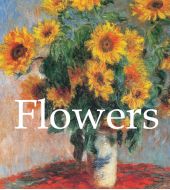 Flowers are the centerpiece in the majority of pictorial still-lifes. By painting their colours and forms, artists from Brueghel to O’Keeffe have created symbols for both life and mortality. Van Gogh’s sunflowers, Monet’s water lilies and Matisse’s bouquets are, of course, unforgotten. Most of the works contained in Flowers are true masterpieces, which have often marked whole epochs and styles. ... Далее
Flowers are the centerpiece in the majority of pictorial still-lifes. By painting their colours and forms, artists from Brueghel to O’Keeffe have created symbols for both life and mortality. Van Gogh’s sunflowers, Monet’s water lilies and Matisse’s bouquets are, of course, unforgotten. Most of the works contained in Flowers are true masterpieces, which have often marked whole epochs and styles. ... Далее -
107.
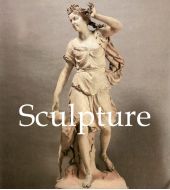 Mega Square Sculpture spans over 23,000 years and over 120 examples of the most beautiful sculptures in the world: from prehistoric art and Egyptian statues to the works of Michelangelo, Henry Moore and Niki de Saint-Phalle. It illuminates the wide variety of materials used and the evolution of styles over centuries, as well as the peculiarities of the most important sculptors. ... Далее
Mega Square Sculpture spans over 23,000 years and over 120 examples of the most beautiful sculptures in the world: from prehistoric art and Egyptian statues to the works of Michelangelo, Henry Moore and Niki de Saint-Phalle. It illuminates the wide variety of materials used and the evolution of styles over centuries, as well as the peculiarities of the most important sculptors. ... Далее -
108.
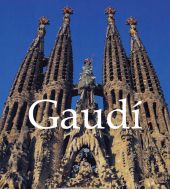 Spanish architect and designer, Antoni Gaudí (1852-1926) was an important and influential figure in the history of contemporary Spanish art. His use of colour, application of a range of materials and the introduction of organic forms into his constructions were an innovation in the realm of architecture. In his journal, Gaudí freely expressed his own feelings on art, “the colours used in architecture have to be intense, logical and fertile.” His completed works (the Casa Batlló, 1905-1907 and the Casa Milà, 1905-1910) and his incomplete works (the restoration of the Poblet Monastery and the altarpiece of Alella in Barcelona) illustrate the importance of this philosophy. His furniture designs were conceived with the same philosophy, as shown, for example, in his own office (1878) or the lamps in the Plaza Real in Barcelona. The Sagrada Familia (1882-1926) was a monumental project which eventually took over his life (it was still incomplete at the time of his death). ... Далее
Spanish architect and designer, Antoni Gaudí (1852-1926) was an important and influential figure in the history of contemporary Spanish art. His use of colour, application of a range of materials and the introduction of organic forms into his constructions were an innovation in the realm of architecture. In his journal, Gaudí freely expressed his own feelings on art, “the colours used in architecture have to be intense, logical and fertile.” His completed works (the Casa Batlló, 1905-1907 and the Casa Milà, 1905-1910) and his incomplete works (the restoration of the Poblet Monastery and the altarpiece of Alella in Barcelona) illustrate the importance of this philosophy. His furniture designs were conceived with the same philosophy, as shown, for example, in his own office (1878) or the lamps in the Plaza Real in Barcelona. The Sagrada Familia (1882-1926) was a monumental project which eventually took over his life (it was still incomplete at the time of his death). ... Далее -
109.
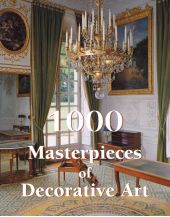 From ancient Sumerian pottery to Tiffany stained glass, Decorative Art had been a fundamental part of the human experience for generations. While Fine Art is confined to galleries and museums, Decorative Art is the art of the every day, combining beauty with functionality in objects ranging from the prosaic to the fantastical. In this work, authors Albert Jacquemart and Émile Bayard celebrate the beauty and artistic potential behind even the most quotidian object. Readers will walk away from this text with a newfound appreciation for the subtle artistry of the manufactured world. ... Далее
From ancient Sumerian pottery to Tiffany stained glass, Decorative Art had been a fundamental part of the human experience for generations. While Fine Art is confined to galleries and museums, Decorative Art is the art of the every day, combining beauty with functionality in objects ranging from the prosaic to the fantastical. In this work, authors Albert Jacquemart and Émile Bayard celebrate the beauty and artistic potential behind even the most quotidian object. Readers will walk away from this text with a newfound appreciation for the subtle artistry of the manufactured world. ... Далее -
110.
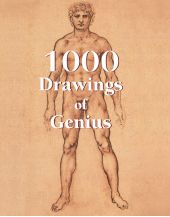 Long thought of as the neglected stepchild of painting, the art of Drawing has recently begun to enjoy a place in the sun. With major museums around the world, from the Met to the Uffizi, mounting exhibitions focussed on the art of draughtsmanship, Drawing is receiving more critical and academic attention than ever before. This captivating text gives readers a sweeping analysis of the history of Drawing, from Renaissance greats like Leonardo da Vinci and Michelangelo, to Modernist masters like M.C. Escher, Pablo Picasso, and everyone in between. ... Далее
Long thought of as the neglected stepchild of painting, the art of Drawing has recently begun to enjoy a place in the sun. With major museums around the world, from the Met to the Uffizi, mounting exhibitions focussed on the art of draughtsmanship, Drawing is receiving more critical and academic attention than ever before. This captivating text gives readers a sweeping analysis of the history of Drawing, from Renaissance greats like Leonardo da Vinci and Michelangelo, to Modernist masters like M.C. Escher, Pablo Picasso, and everyone in between. ... Далее -
111.
 According to the predominant standards, a portrait should be a faithful representation of its model. However, this is not always the case. This gallery of 1,000 portraits illustrates how the genre has been transformed throughout history, and has proven itself to be much more complex than a simple imitation of reality. Beyond exhibiting the artist’s skill, the portrait must surpass the task of imitation, as just and precise as it may be, to translate both the intention of the artist as well as that of its patron, without betraying either’s wishes. Therefore, these silent witnesses, carefully selected in these pages, reveal more than faces of historic figures or anonymous subjects: they reveal a psychology more than an identity, illustrate an allegory, serve as political and religious propaganda, and embody the customs of their epochs. With its impressive number of masterpieces, biographies, and commentaries on works, this book presents and analyses different portraits, giving a reflection of the evolution of society, and above all the upheavals of a genre that has dramatically shaped the history of art. ... Далее
According to the predominant standards, a portrait should be a faithful representation of its model. However, this is not always the case. This gallery of 1,000 portraits illustrates how the genre has been transformed throughout history, and has proven itself to be much more complex than a simple imitation of reality. Beyond exhibiting the artist’s skill, the portrait must surpass the task of imitation, as just and precise as it may be, to translate both the intention of the artist as well as that of its patron, without betraying either’s wishes. Therefore, these silent witnesses, carefully selected in these pages, reveal more than faces of historic figures or anonymous subjects: they reveal a psychology more than an identity, illustrate an allegory, serve as political and religious propaganda, and embody the customs of their epochs. With its impressive number of masterpieces, biographies, and commentaries on works, this book presents and analyses different portraits, giving a reflection of the evolution of society, and above all the upheavals of a genre that has dramatically shaped the history of art. ... Далее -
112.
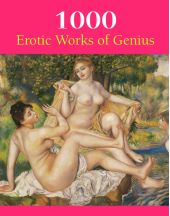 Different eras and civilisations have treated erotic images with varying acceptance and different concepts of erotica and these tendencies are reflected within the works themselves. From ancient statues devoted to fertility to Renaissance engravings designed to encourage procreation within marriage, erotic art has always held an important place in society. Here, for the first time, 1,000 authentic images of erotic art have been brought together, spanning the centuries and civilisations to demonstrate the evolution of the genre. In an era such as ours when eroticism is abundant in advertising and the media, this book gives a refreshing insight into the background of erotic imagery, highlighting the artistic value of beautiful works of eroticism executed with skill. ... Далее
Different eras and civilisations have treated erotic images with varying acceptance and different concepts of erotica and these tendencies are reflected within the works themselves. From ancient statues devoted to fertility to Renaissance engravings designed to encourage procreation within marriage, erotic art has always held an important place in society. Here, for the first time, 1,000 authentic images of erotic art have been brought together, spanning the centuries and civilisations to demonstrate the evolution of the genre. In an era such as ours when eroticism is abundant in advertising and the media, this book gives a refreshing insight into the background of erotic imagery, highlighting the artistic value of beautiful works of eroticism executed with skill. ... Далее -
113.
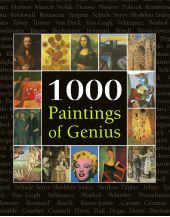 Featuring 1,000 internationally recognised paintings, this collection spans the history of art from the 13th century to the present, from the early stirrings of the Renaissance movement in Italy to the boundary-pushing experiments of the Abstract Expressionists in post-World War II America. These cultural treasures are presented in historical context, along with extended captions and biographies of one hundred of the most influential artists. Each chapter reviews major events that had an impact on the art world, defines significant techniques, and comments on relevant innovations. An artistic, cultural, and educational resource, this book invites us to consider the interaction between history and art, and the influence artists through the ages have had on each other, as well as the future of the discipline. The traditional and the controversial, the mythic and the understated, the quietly subversive and the deliberately challenging – all are thought-provoking if only for their persistence, and together they document the progress of Western history through the eyes of our most creative visionaries. ... Далее
Featuring 1,000 internationally recognised paintings, this collection spans the history of art from the 13th century to the present, from the early stirrings of the Renaissance movement in Italy to the boundary-pushing experiments of the Abstract Expressionists in post-World War II America. These cultural treasures are presented in historical context, along with extended captions and biographies of one hundred of the most influential artists. Each chapter reviews major events that had an impact on the art world, defines significant techniques, and comments on relevant innovations. An artistic, cultural, and educational resource, this book invites us to consider the interaction between history and art, and the influence artists through the ages have had on each other, as well as the future of the discipline. The traditional and the controversial, the mythic and the understated, the quietly subversive and the deliberately challenging – all are thought-provoking if only for their persistence, and together they document the progress of Western history through the eyes of our most creative visionaries. ... Далее
Комментарии:


